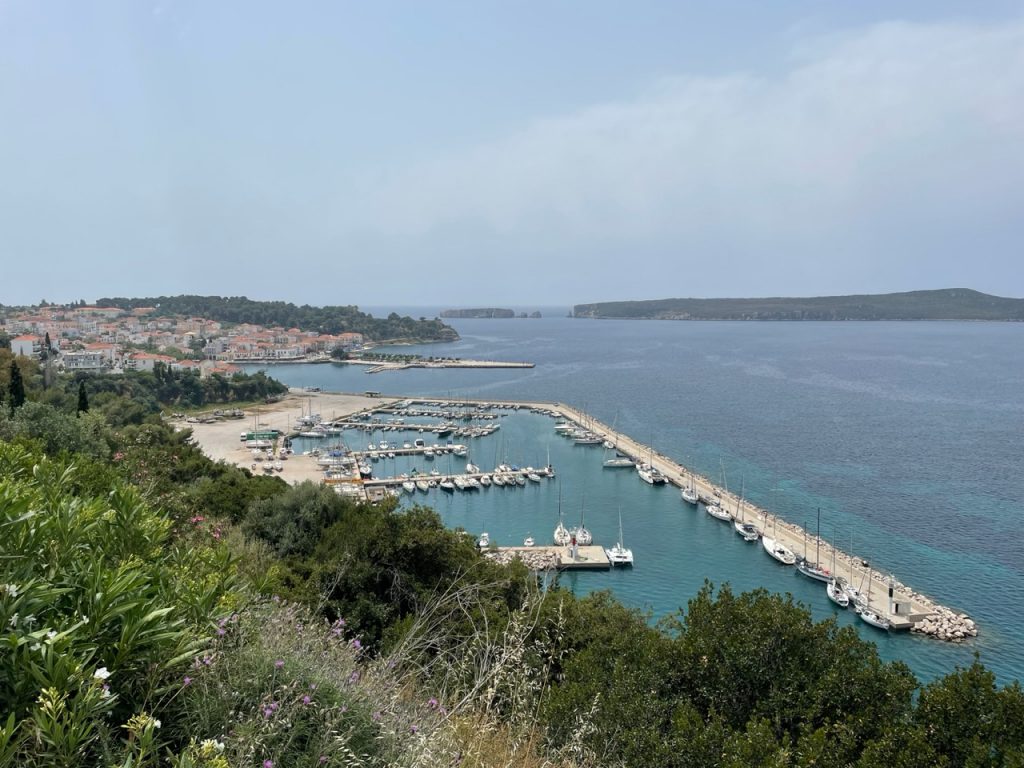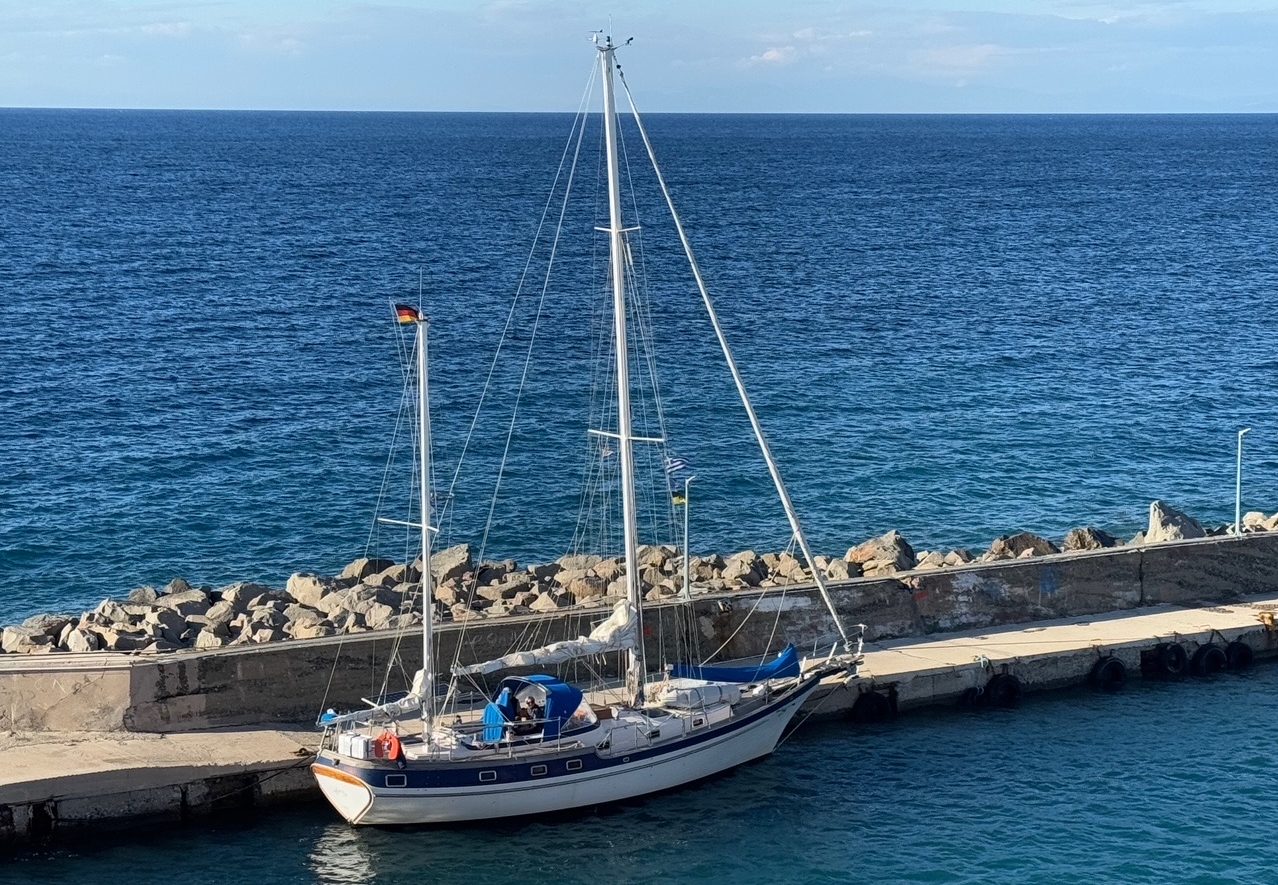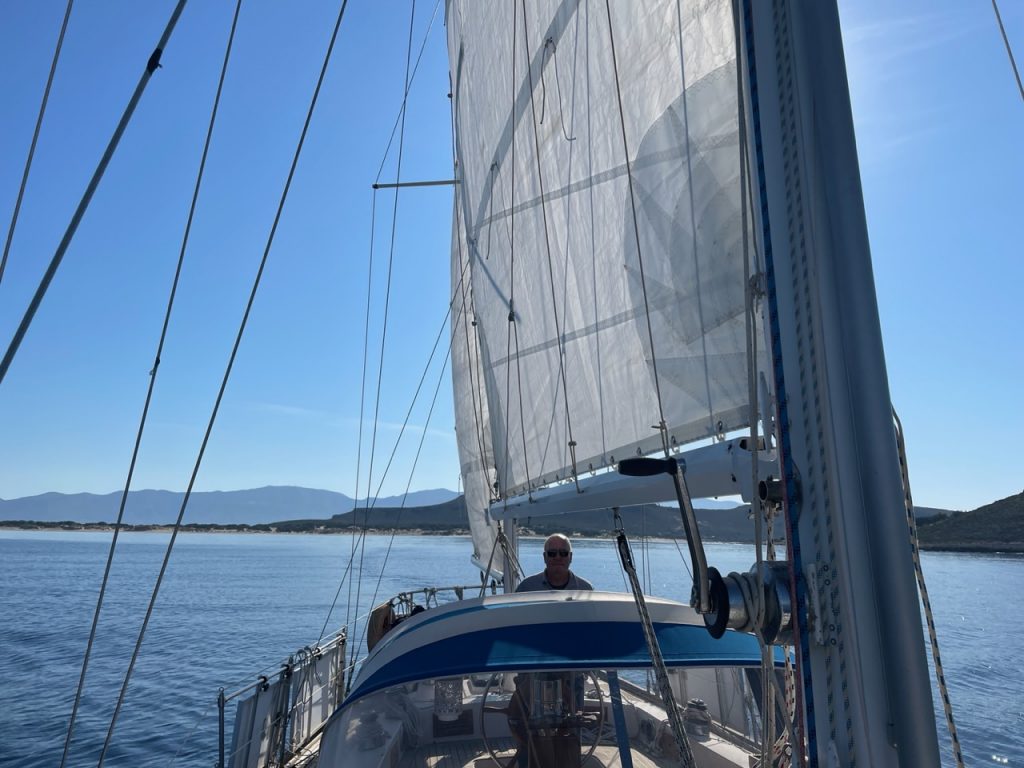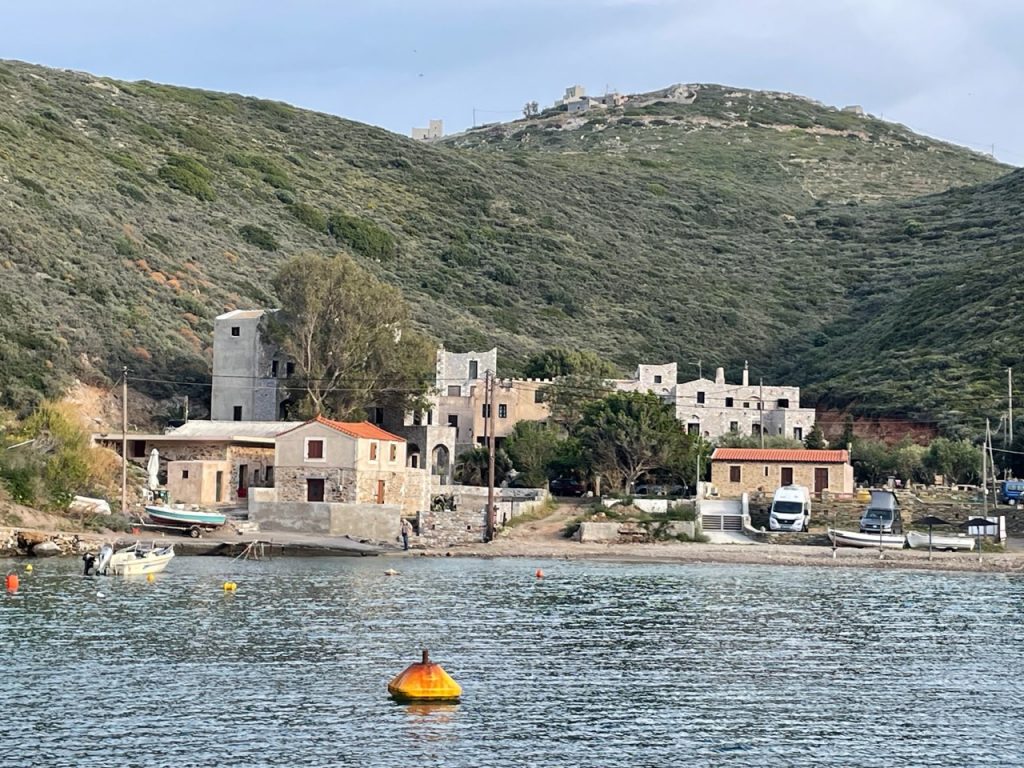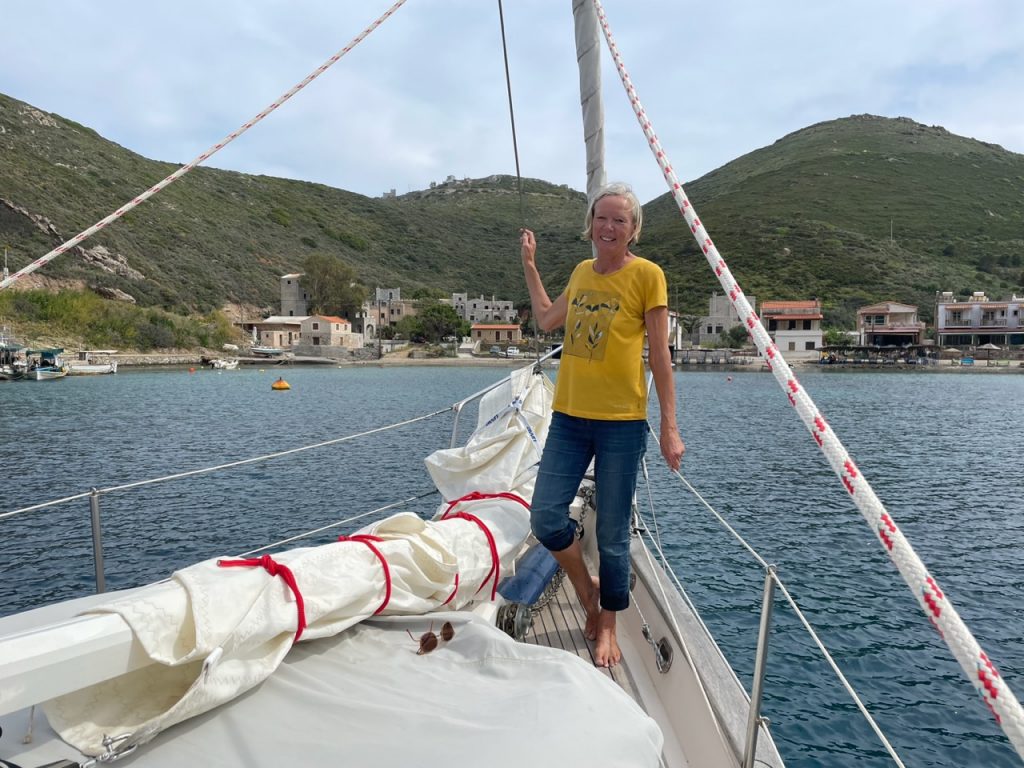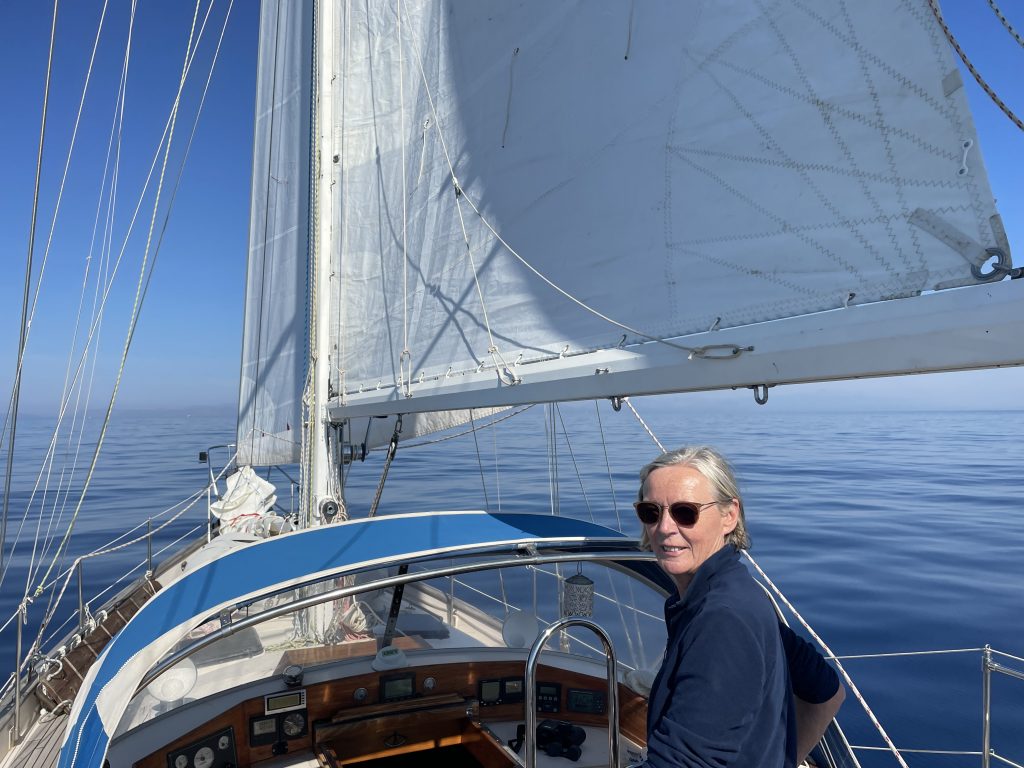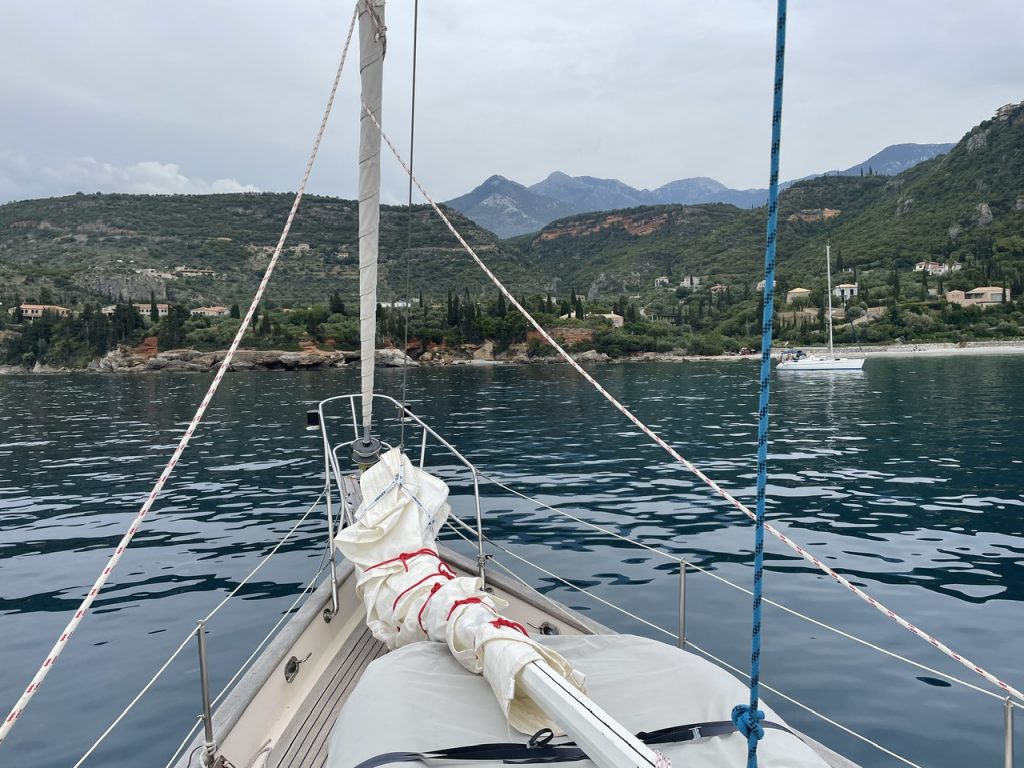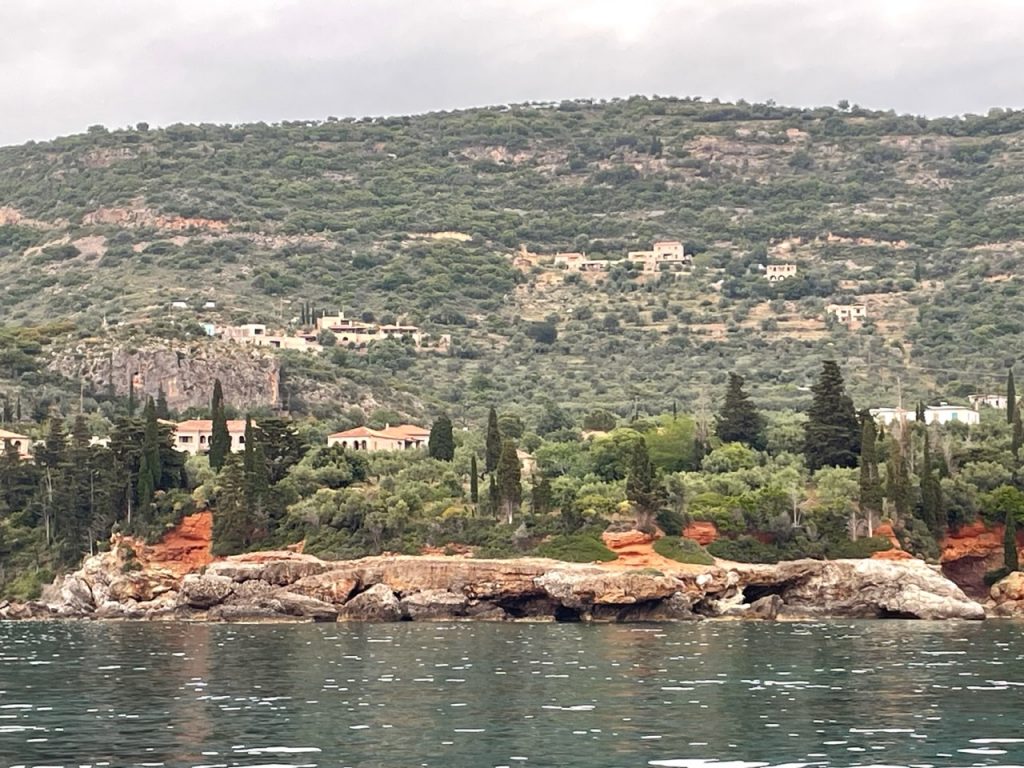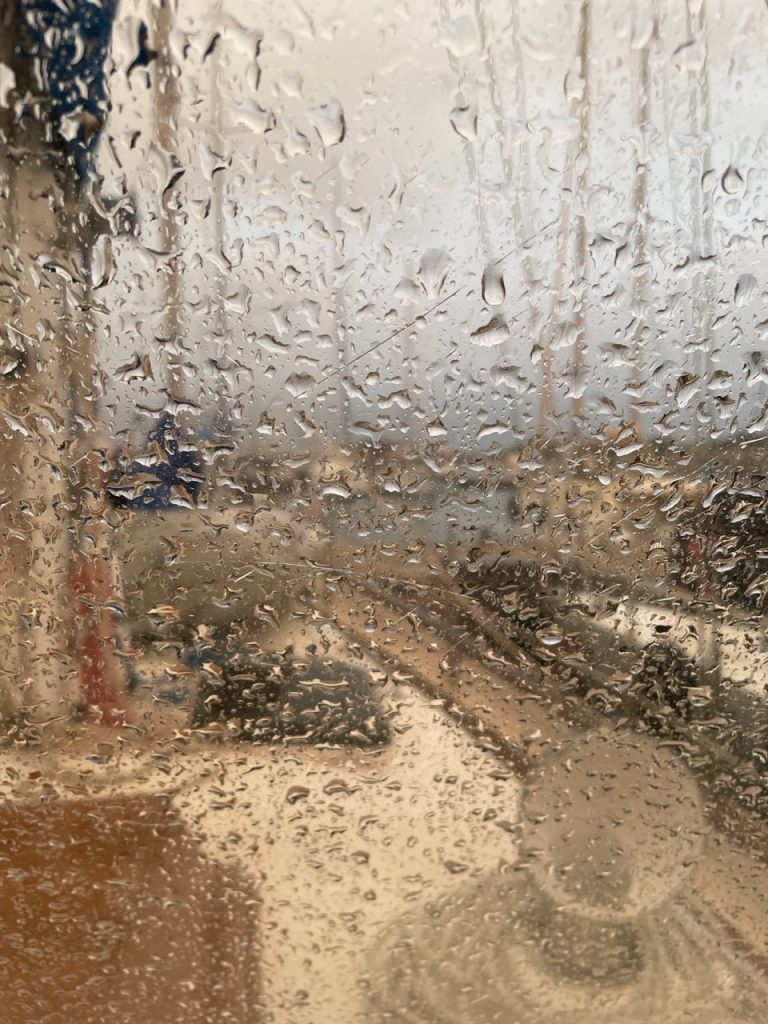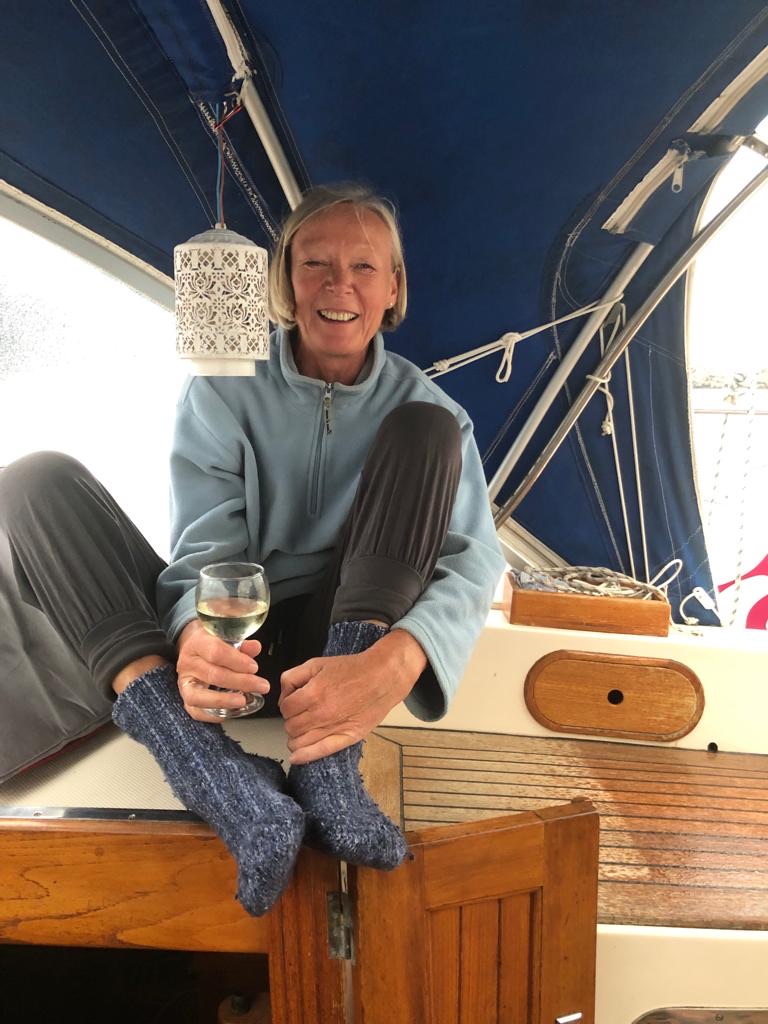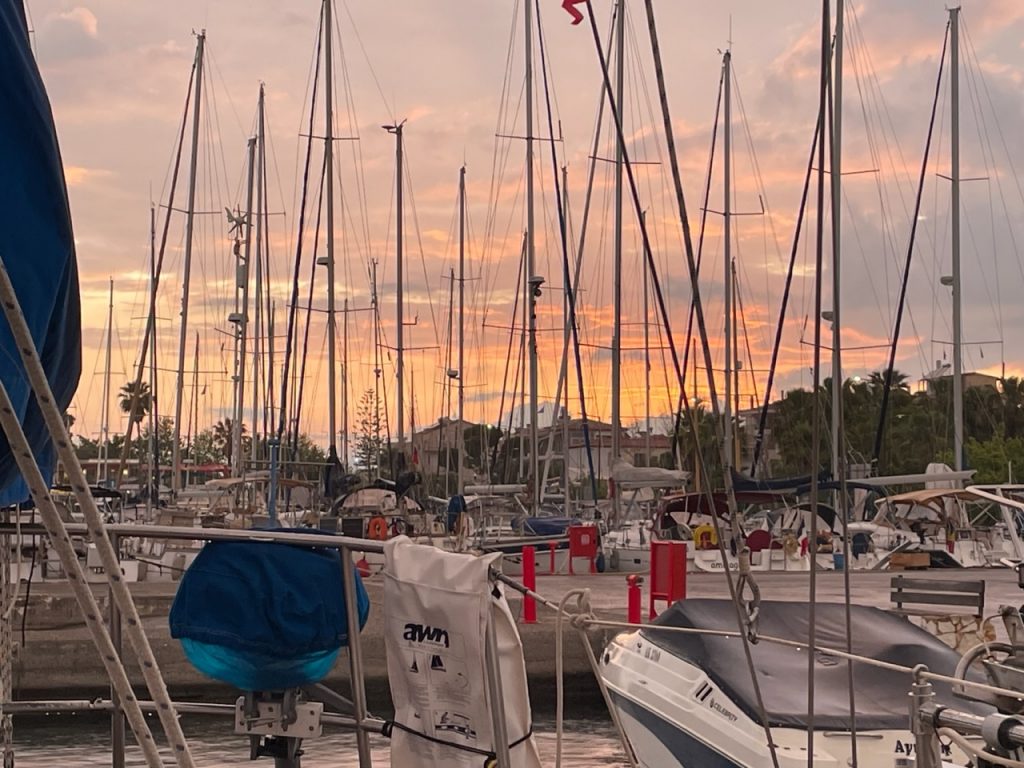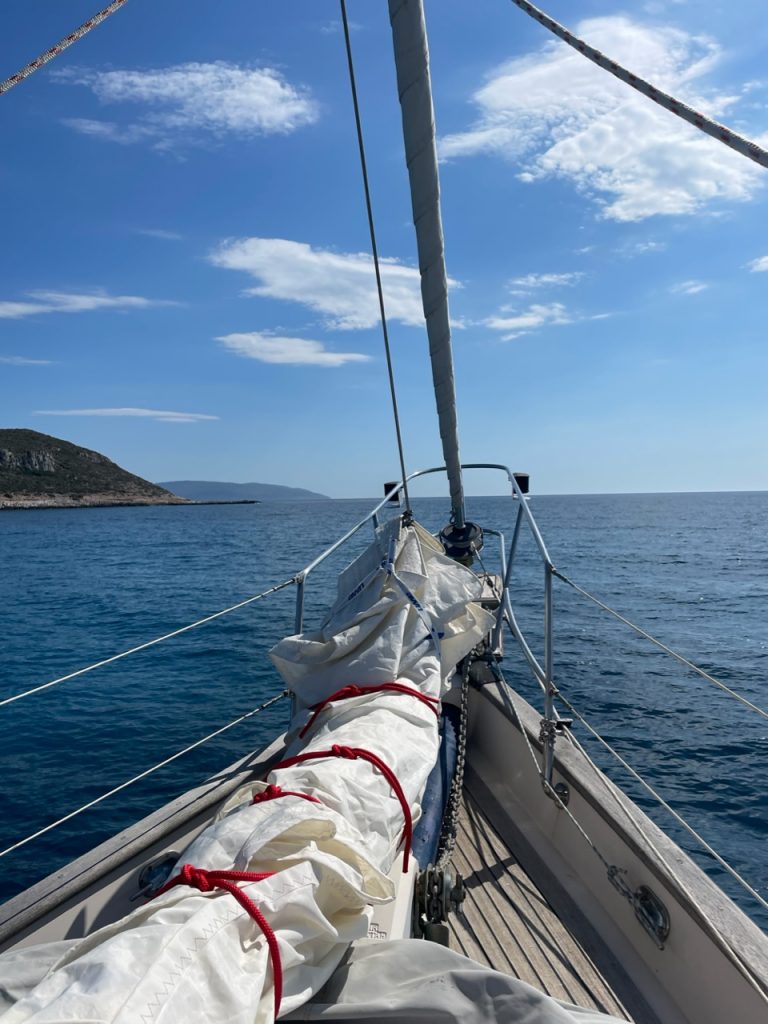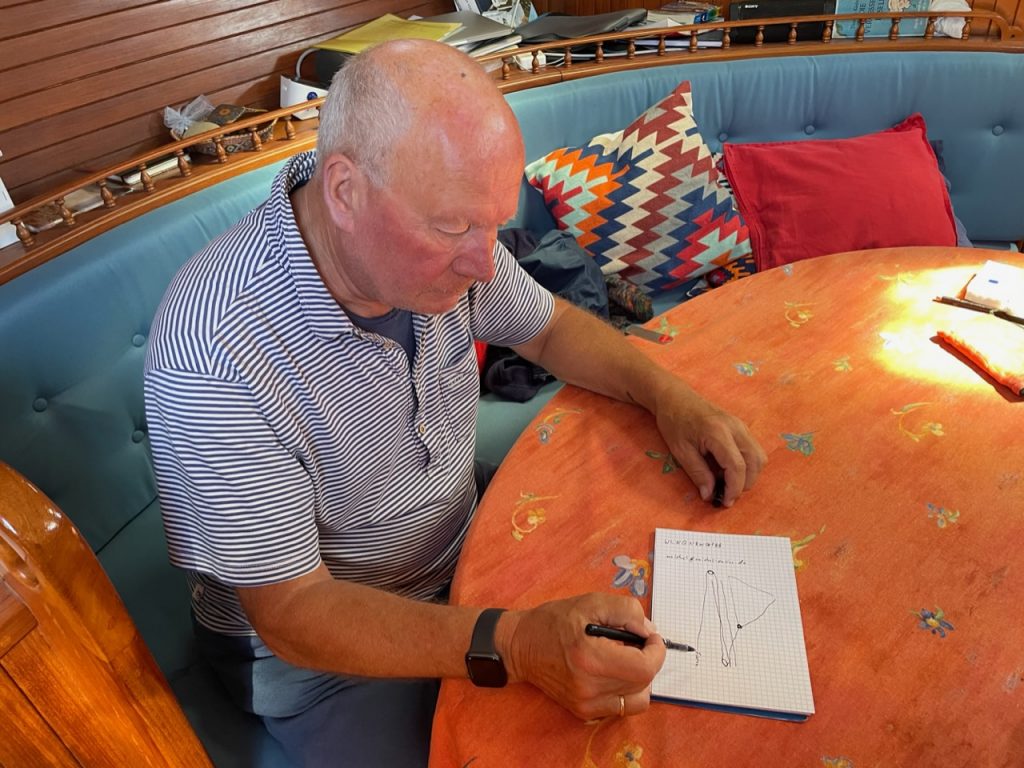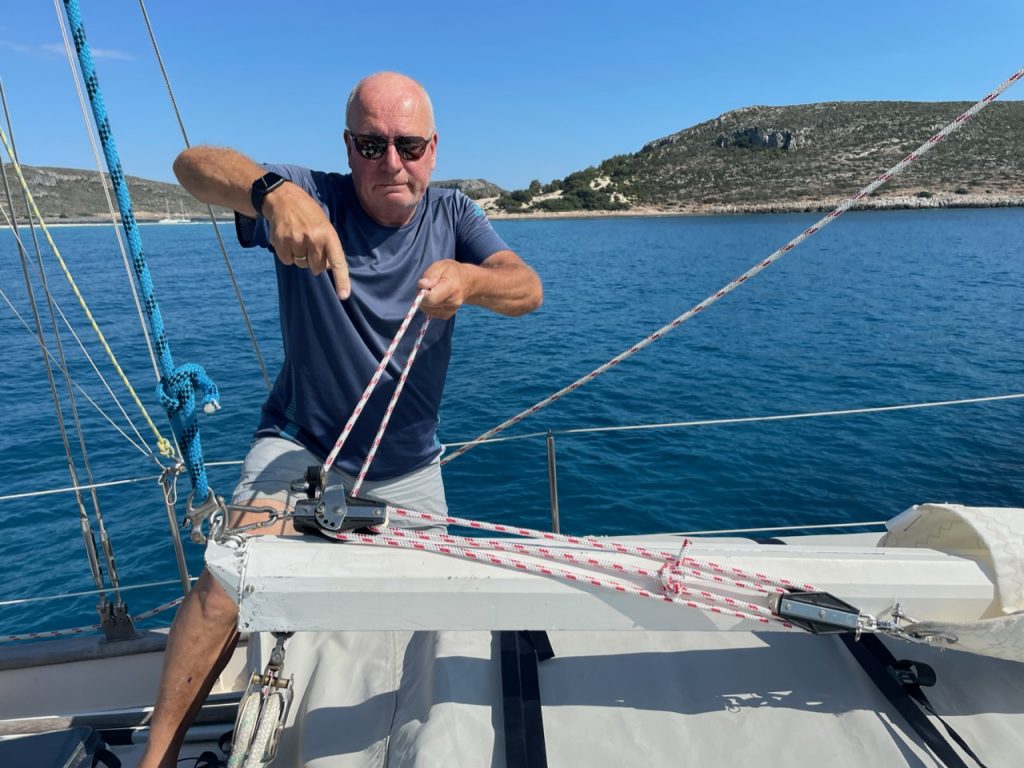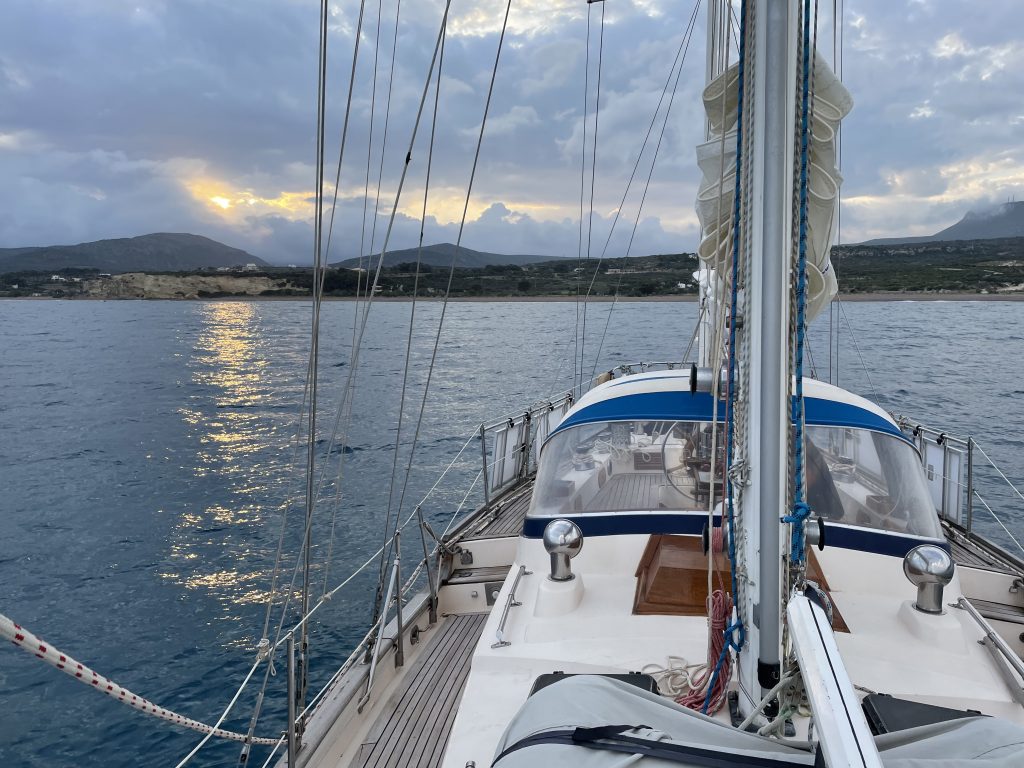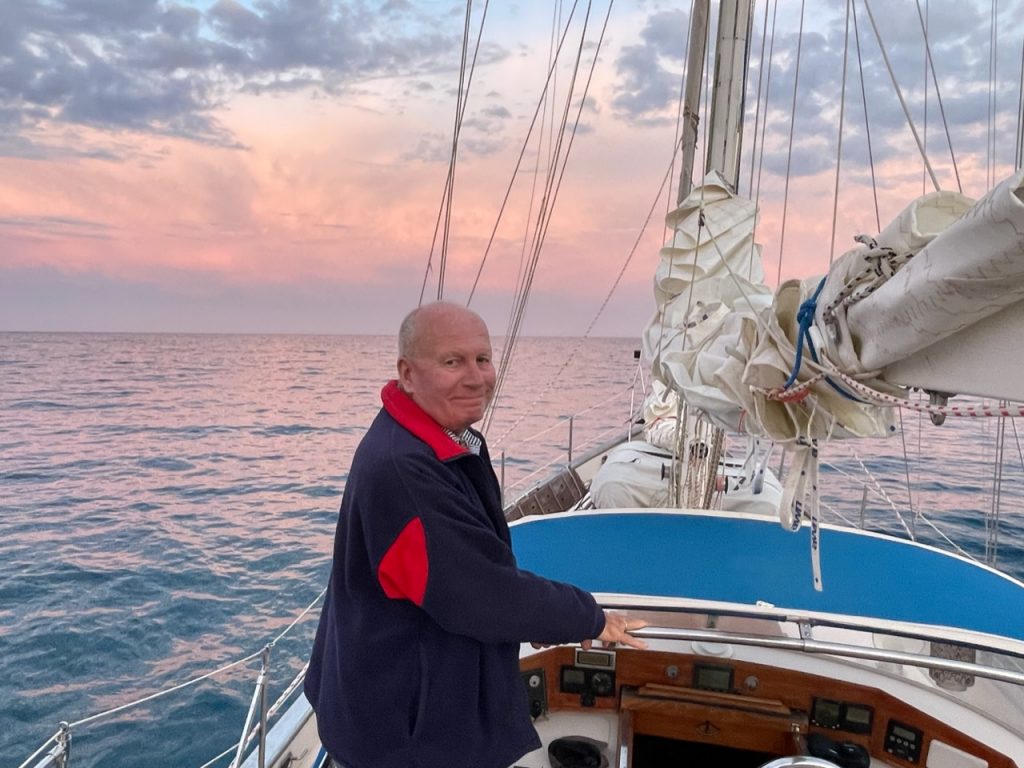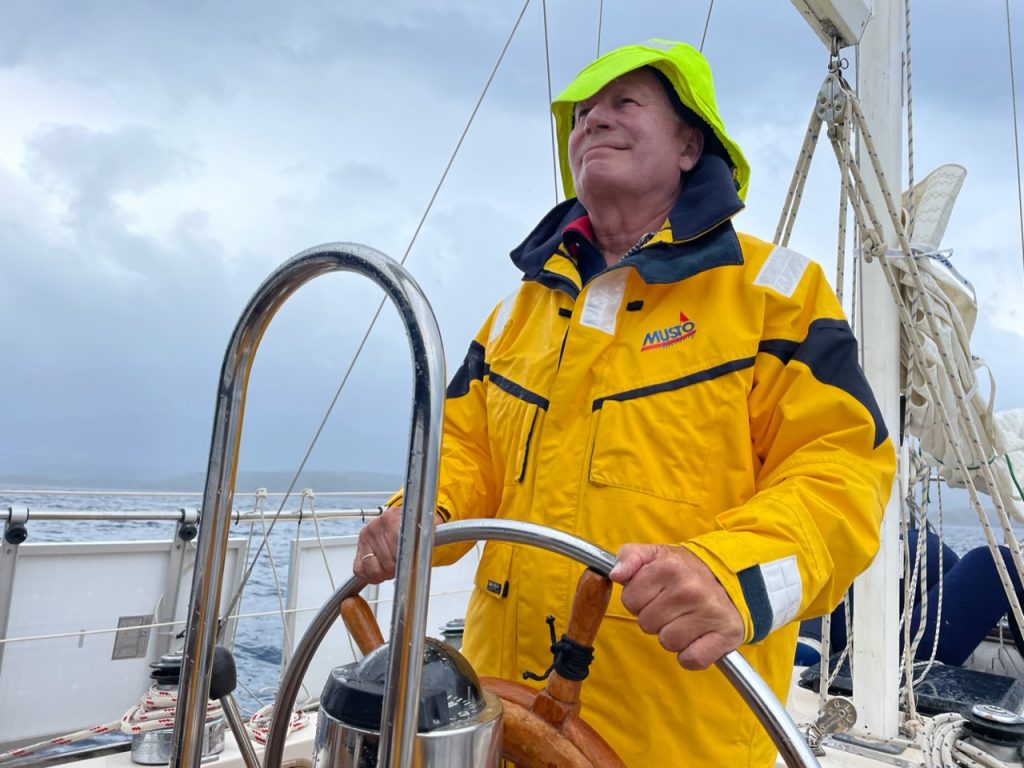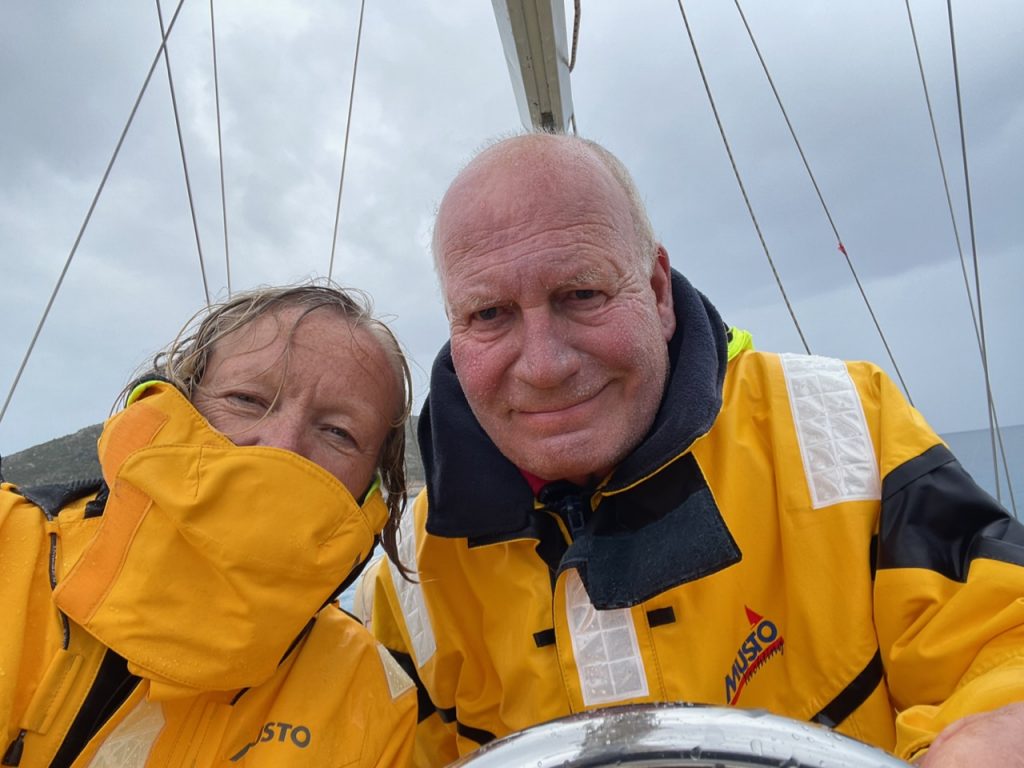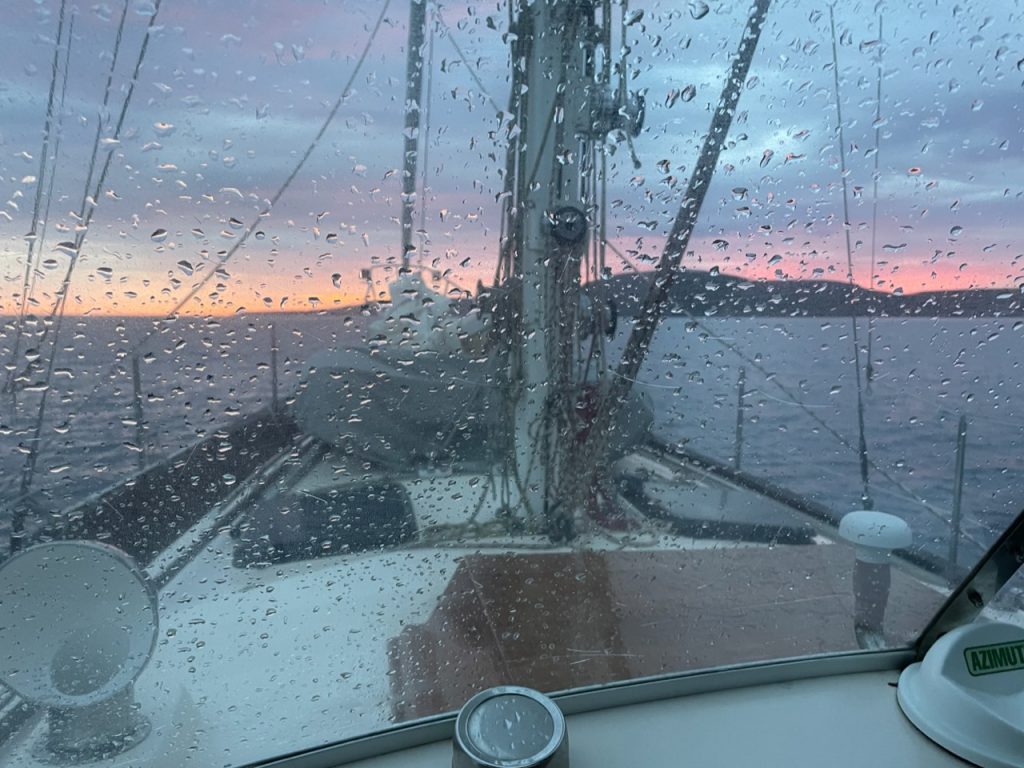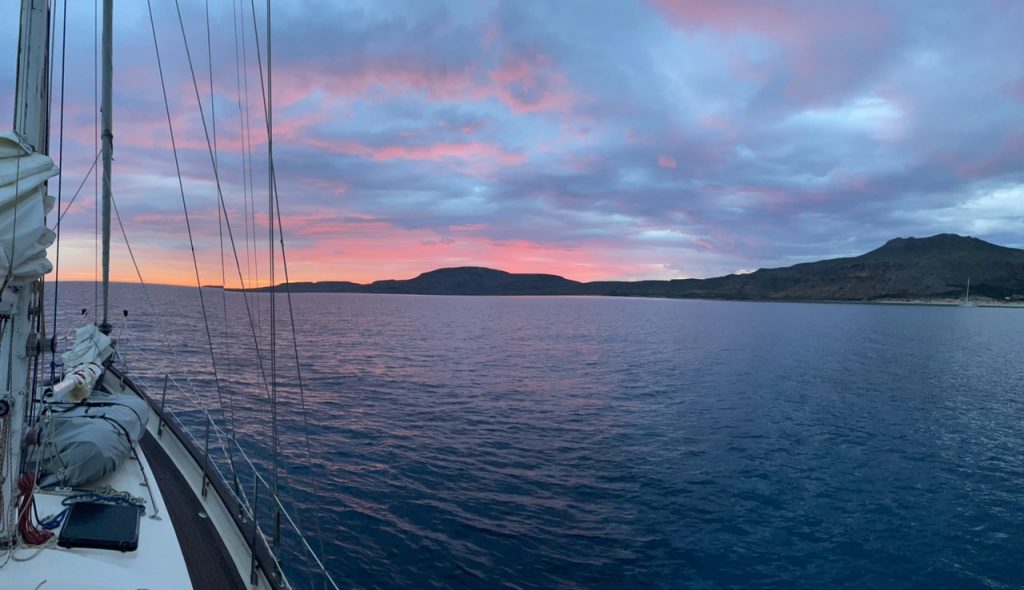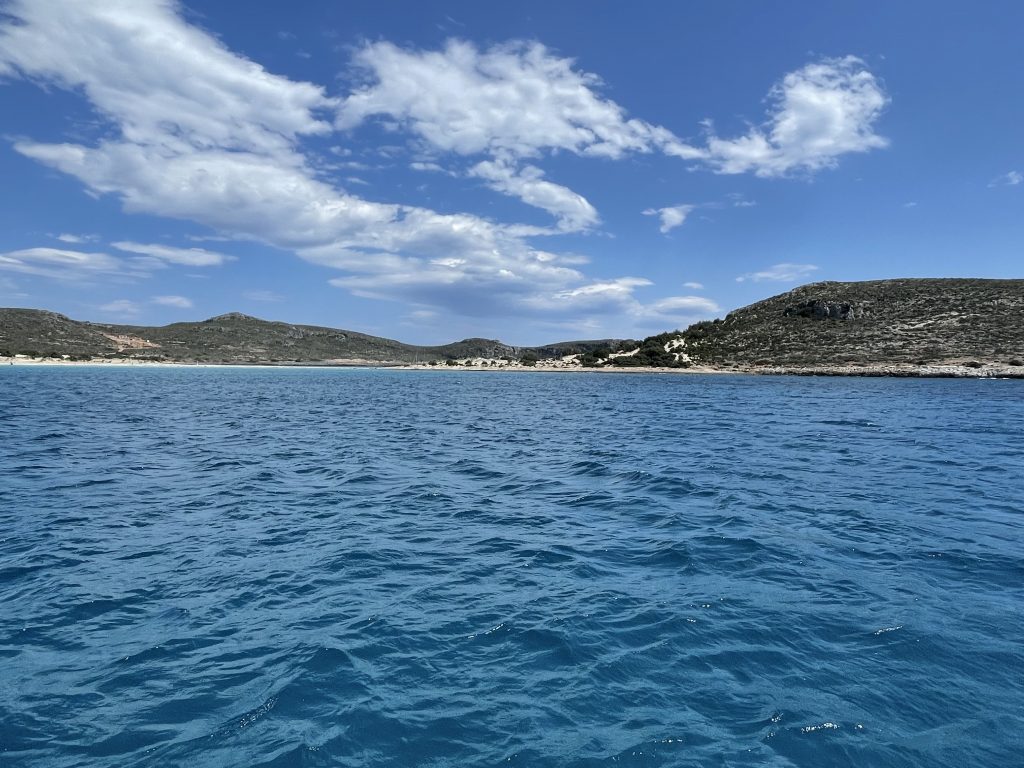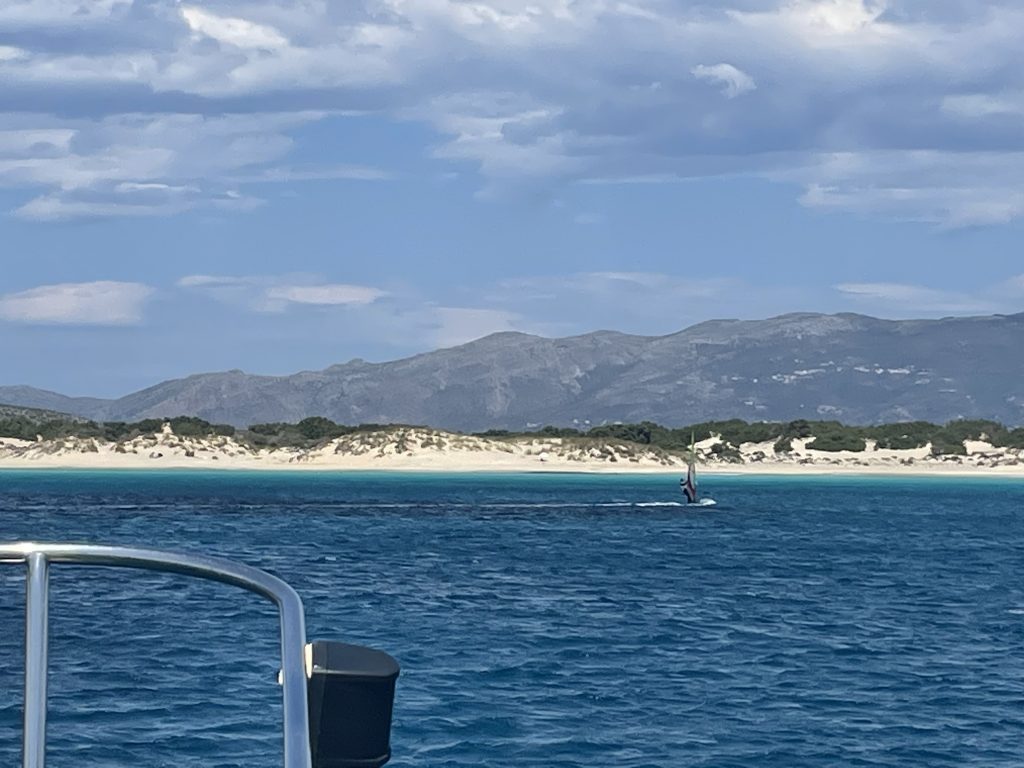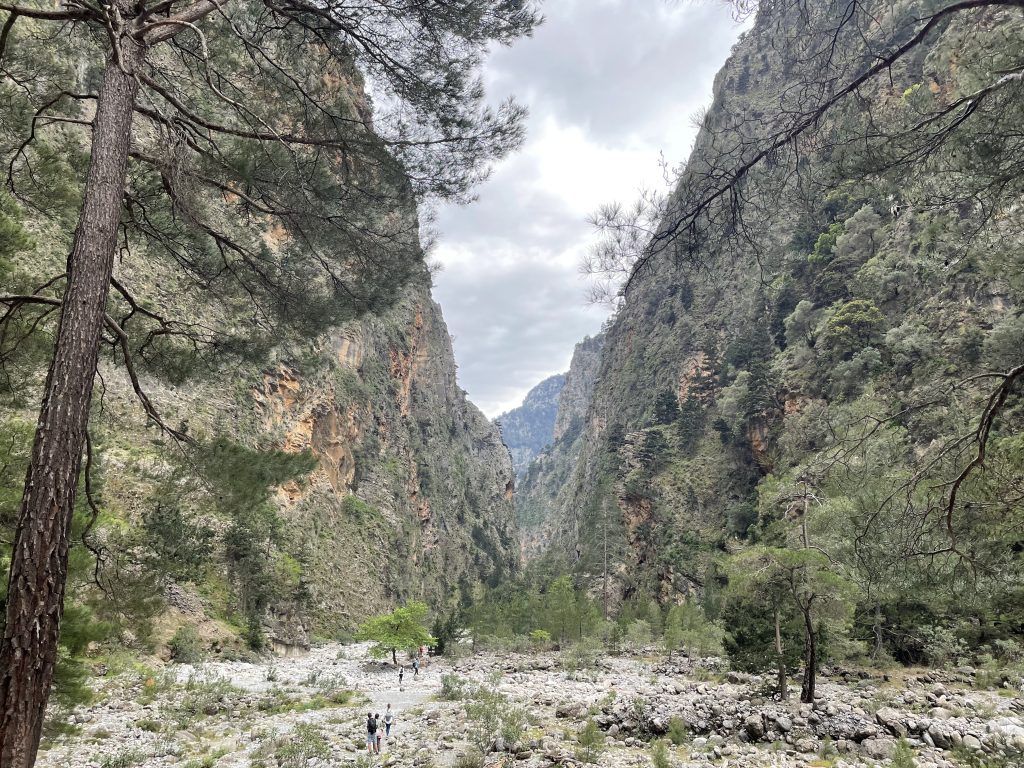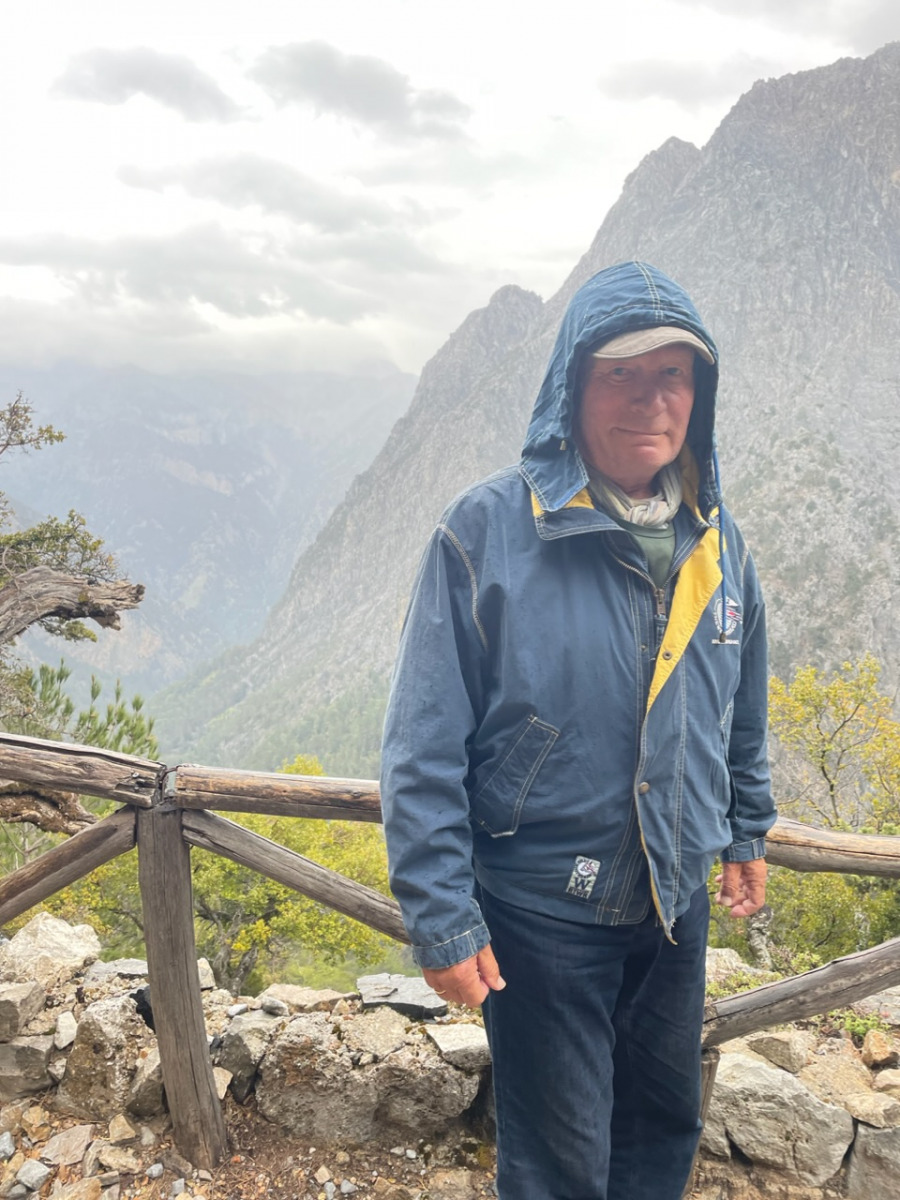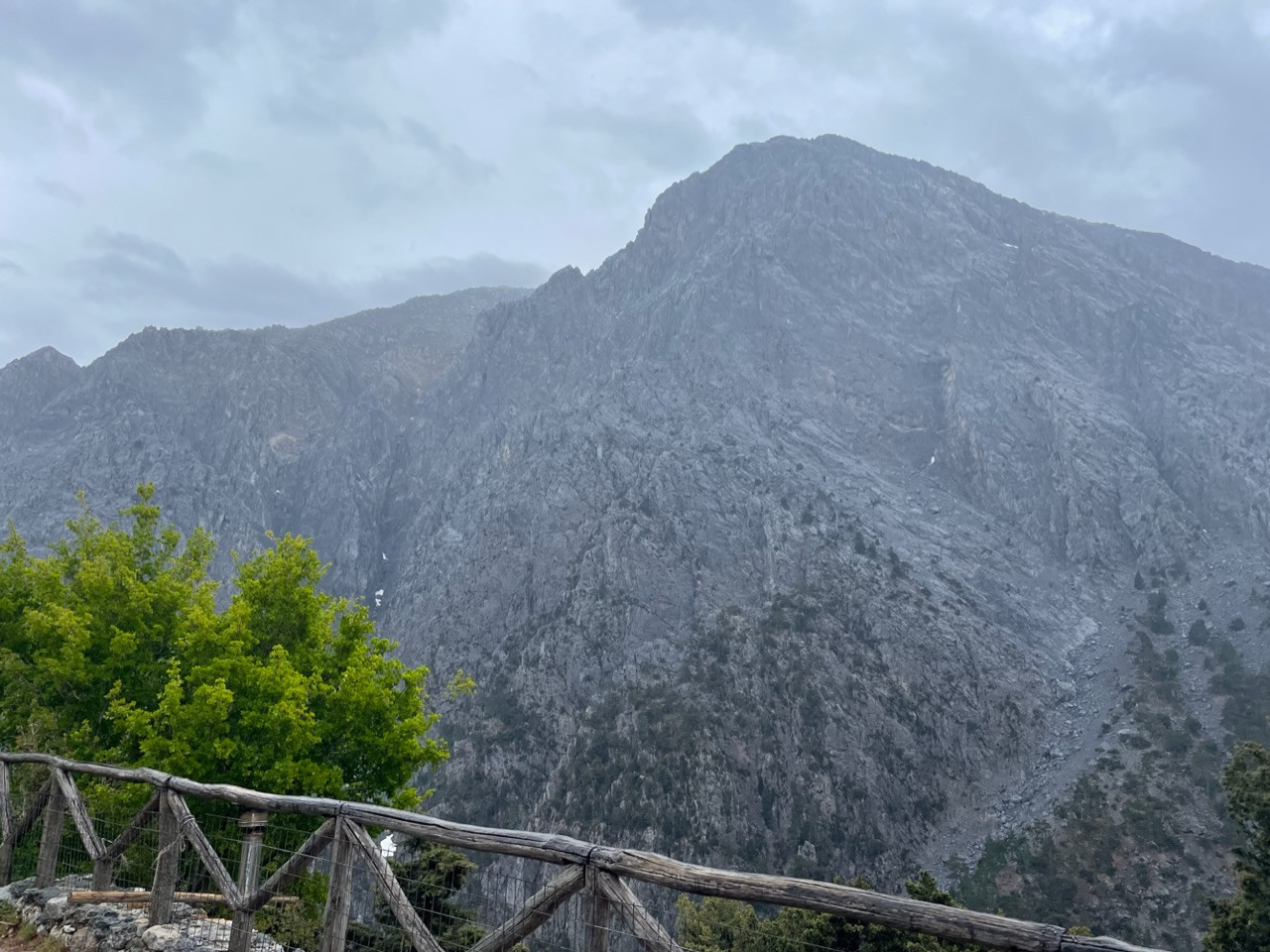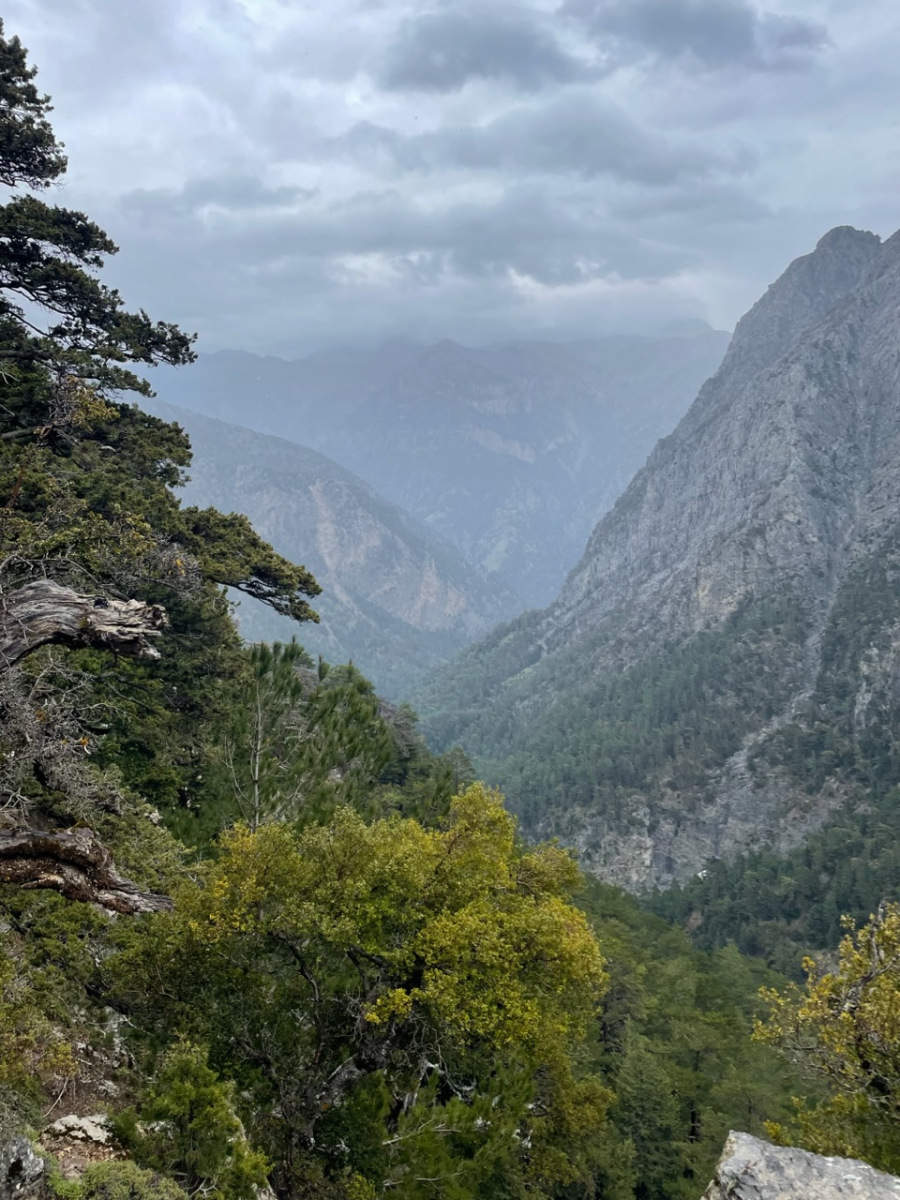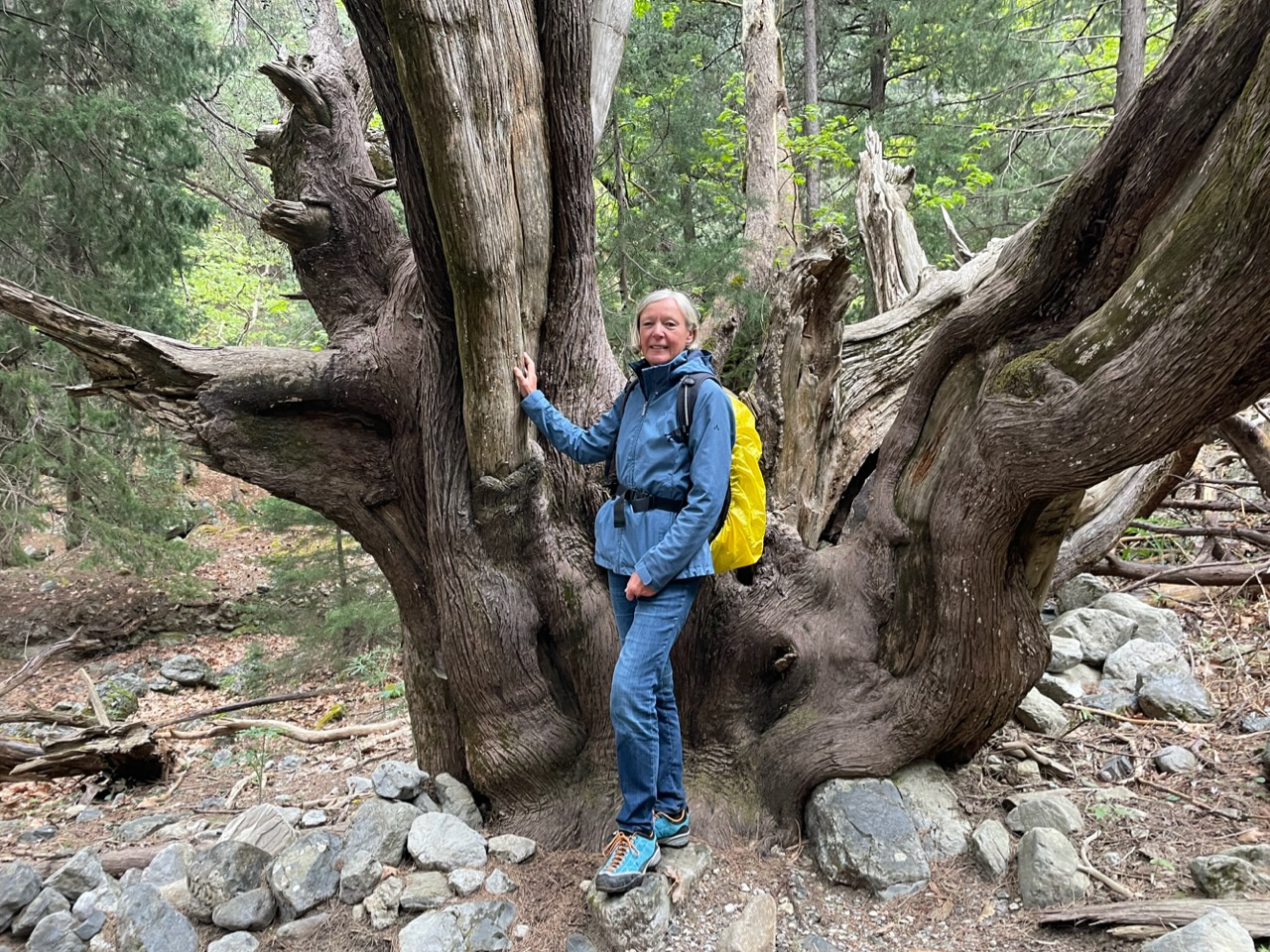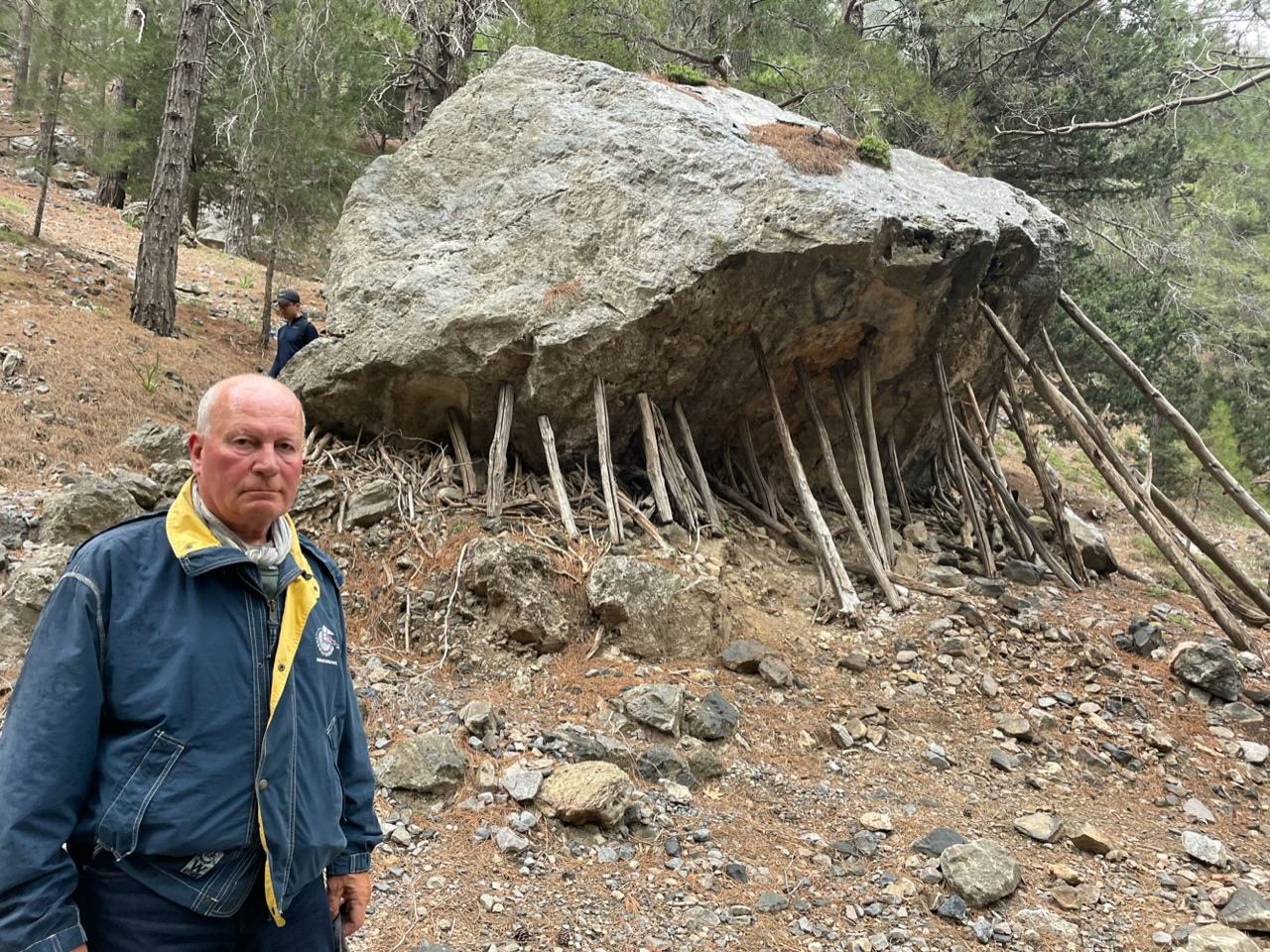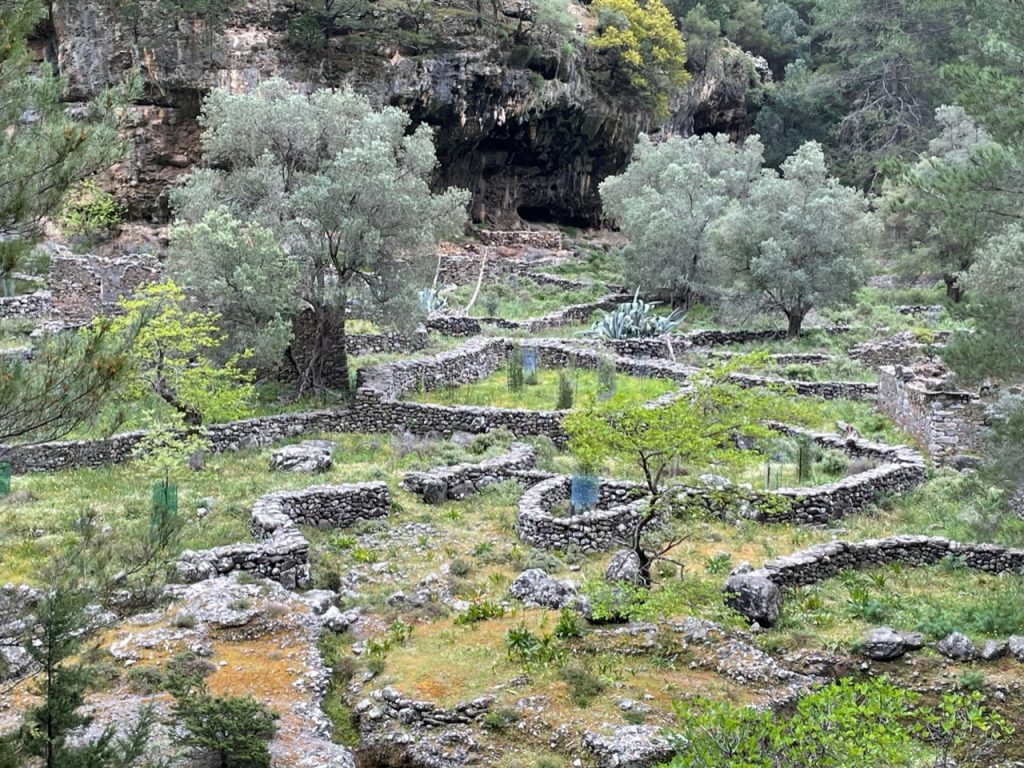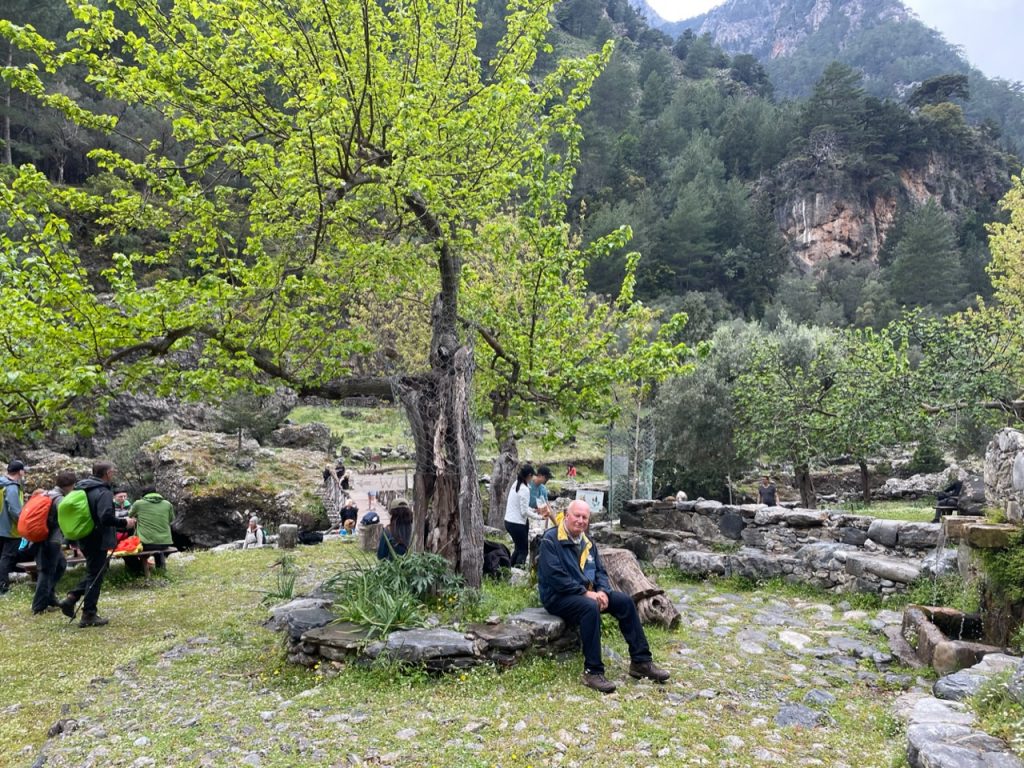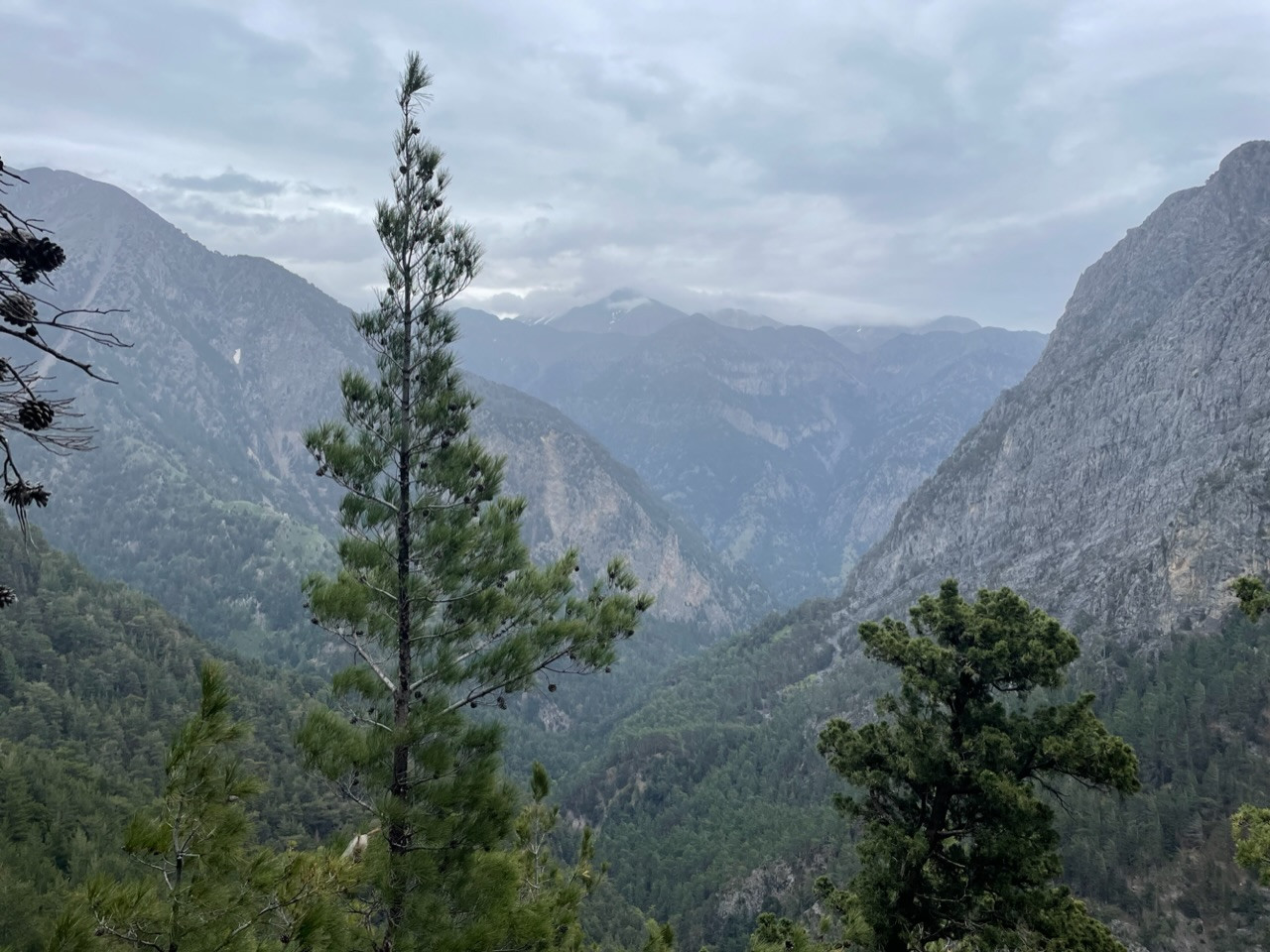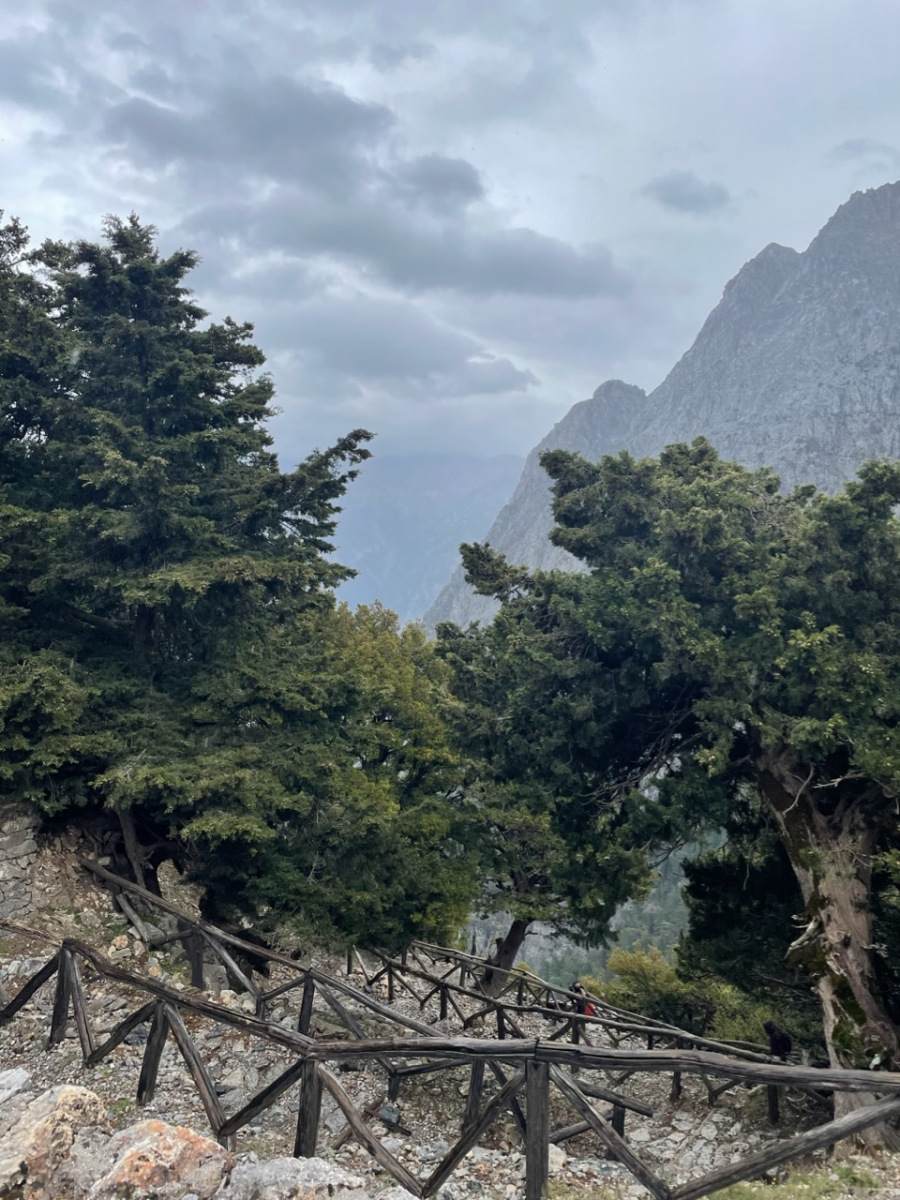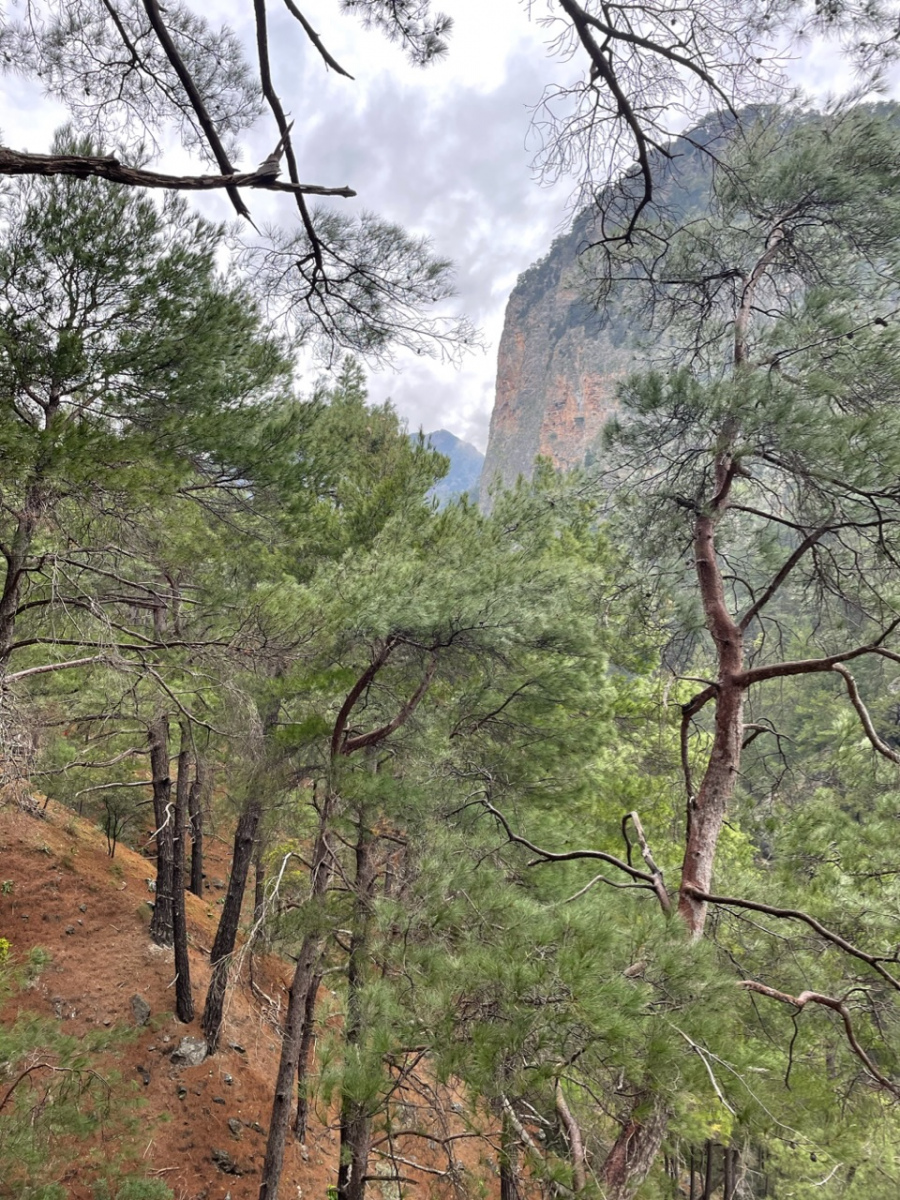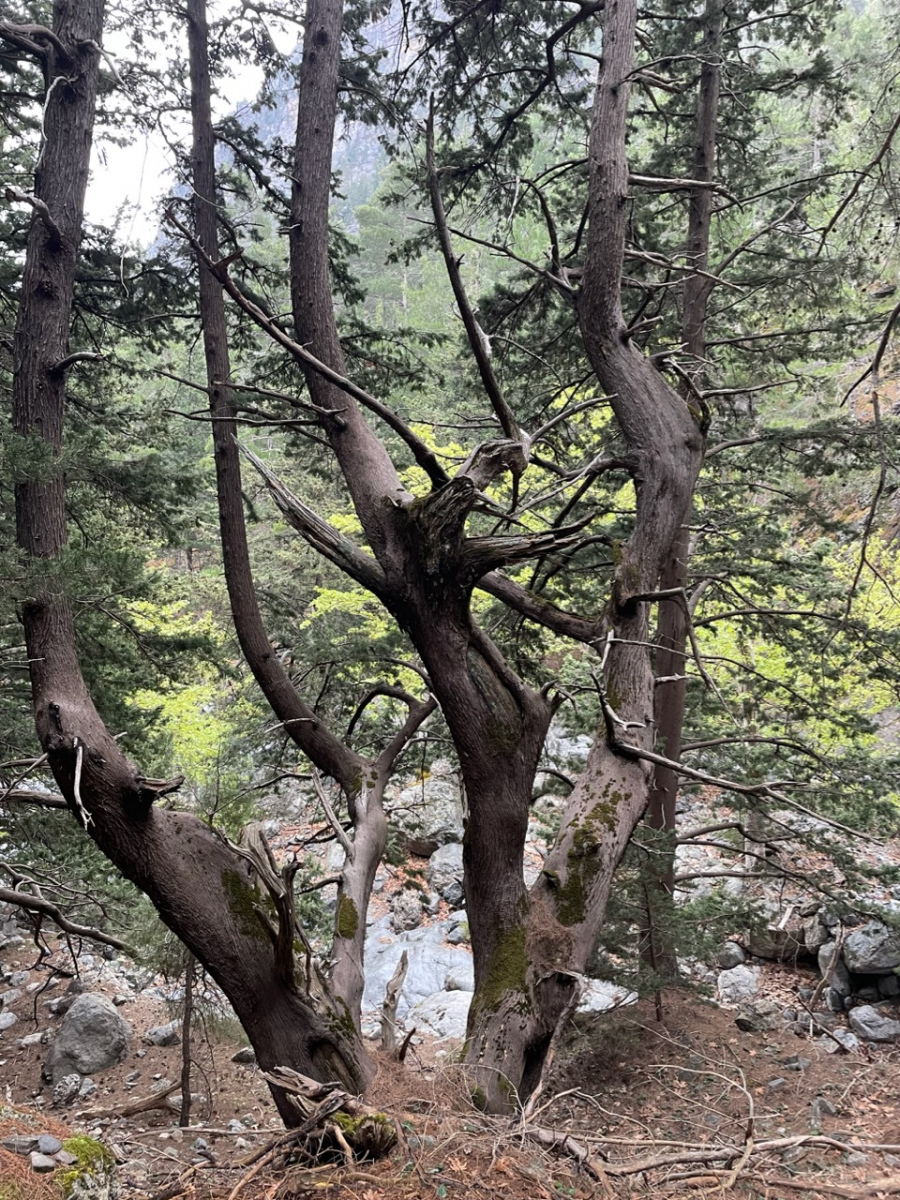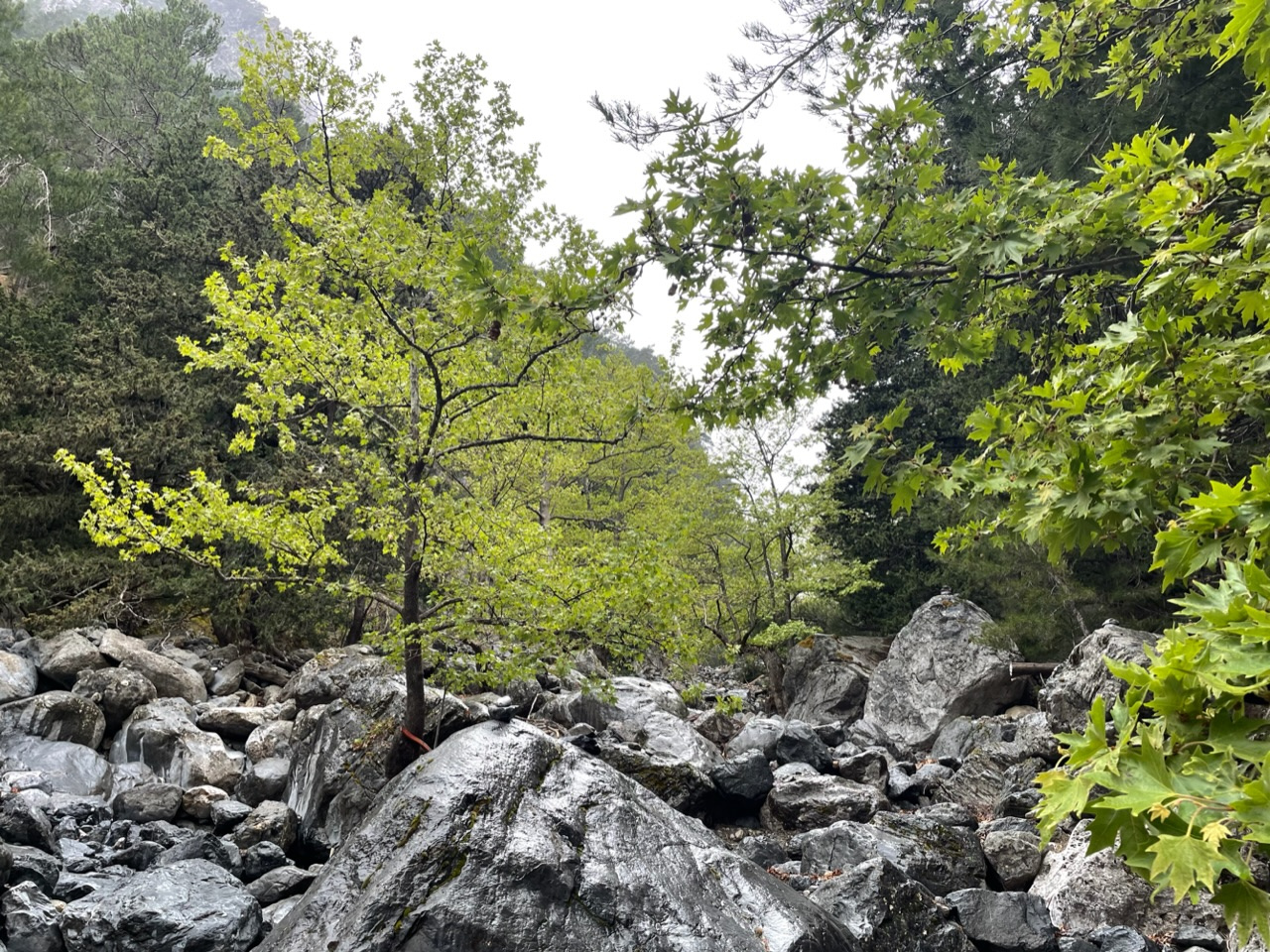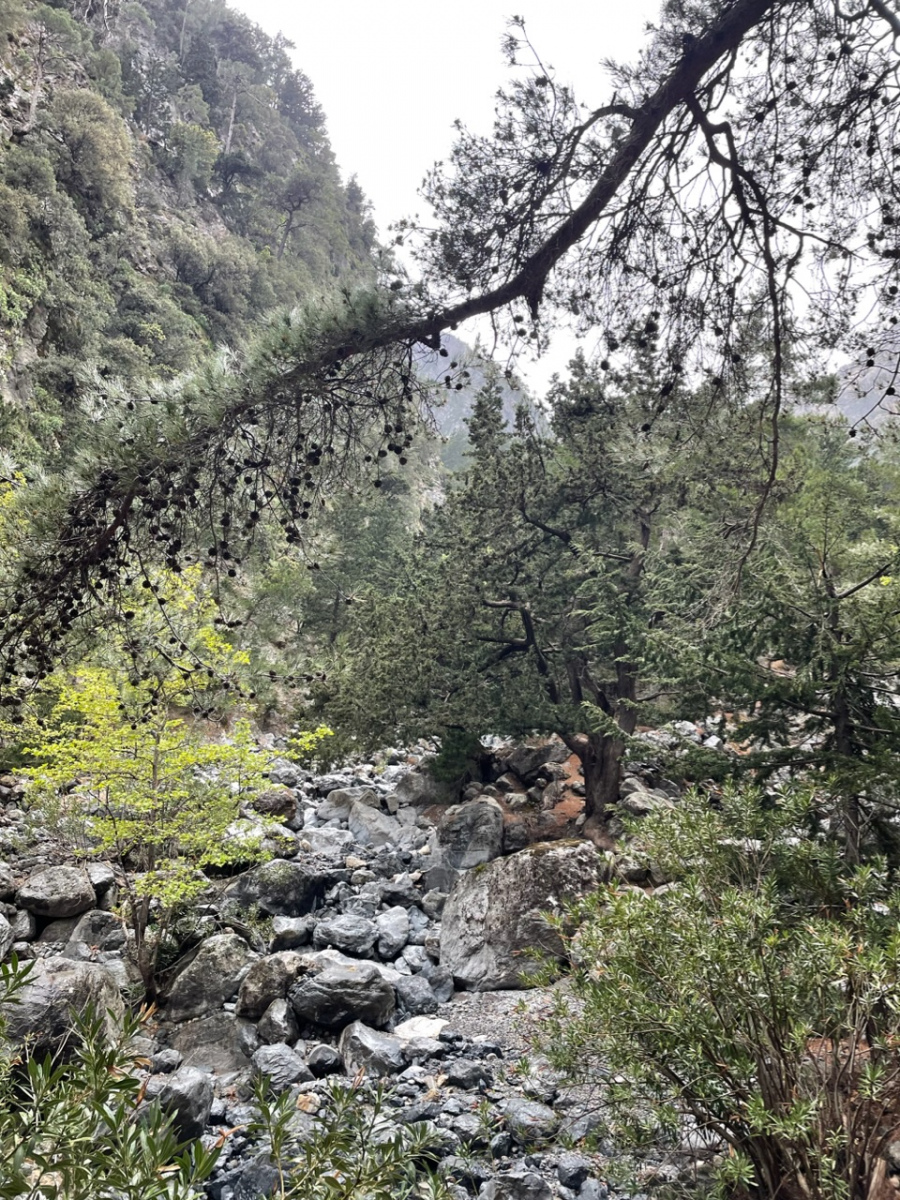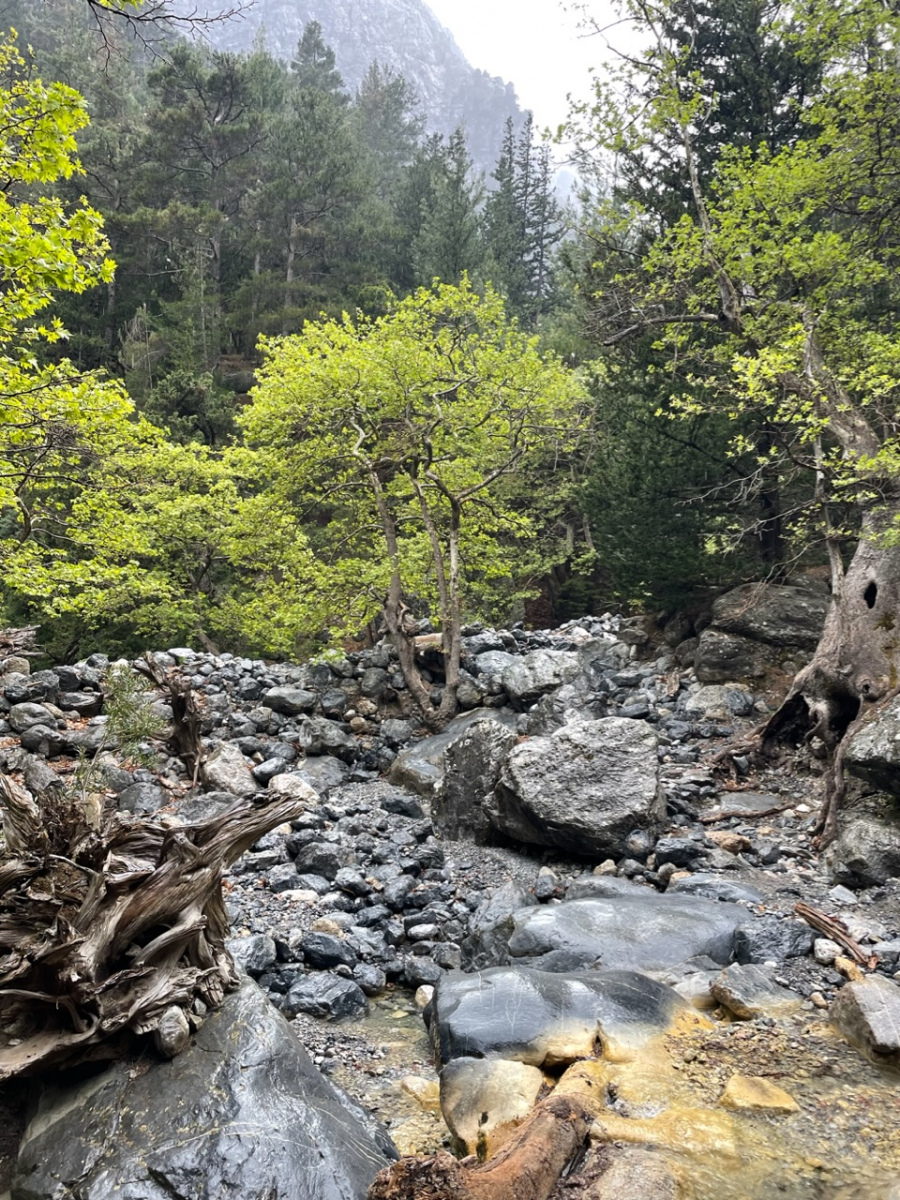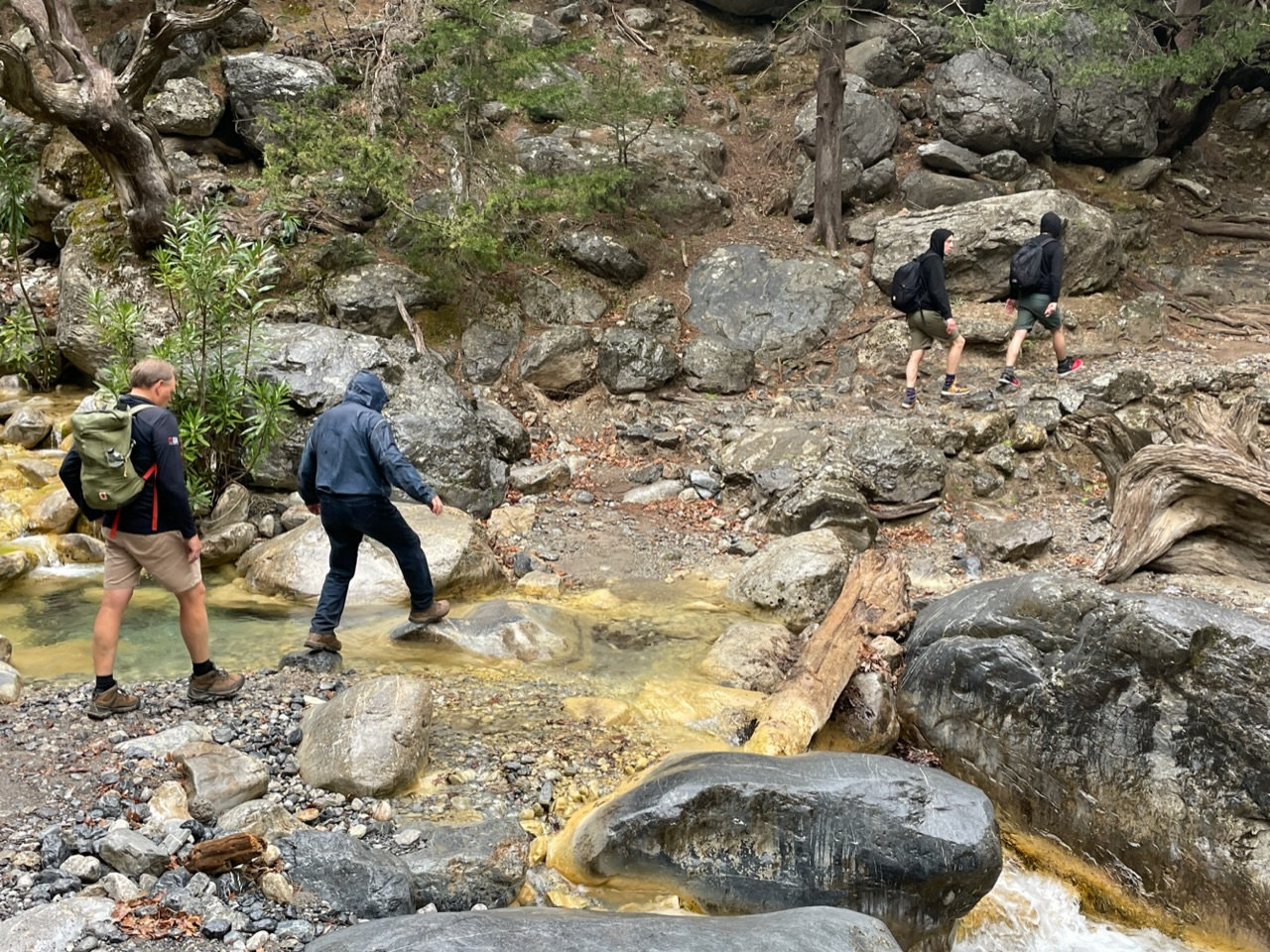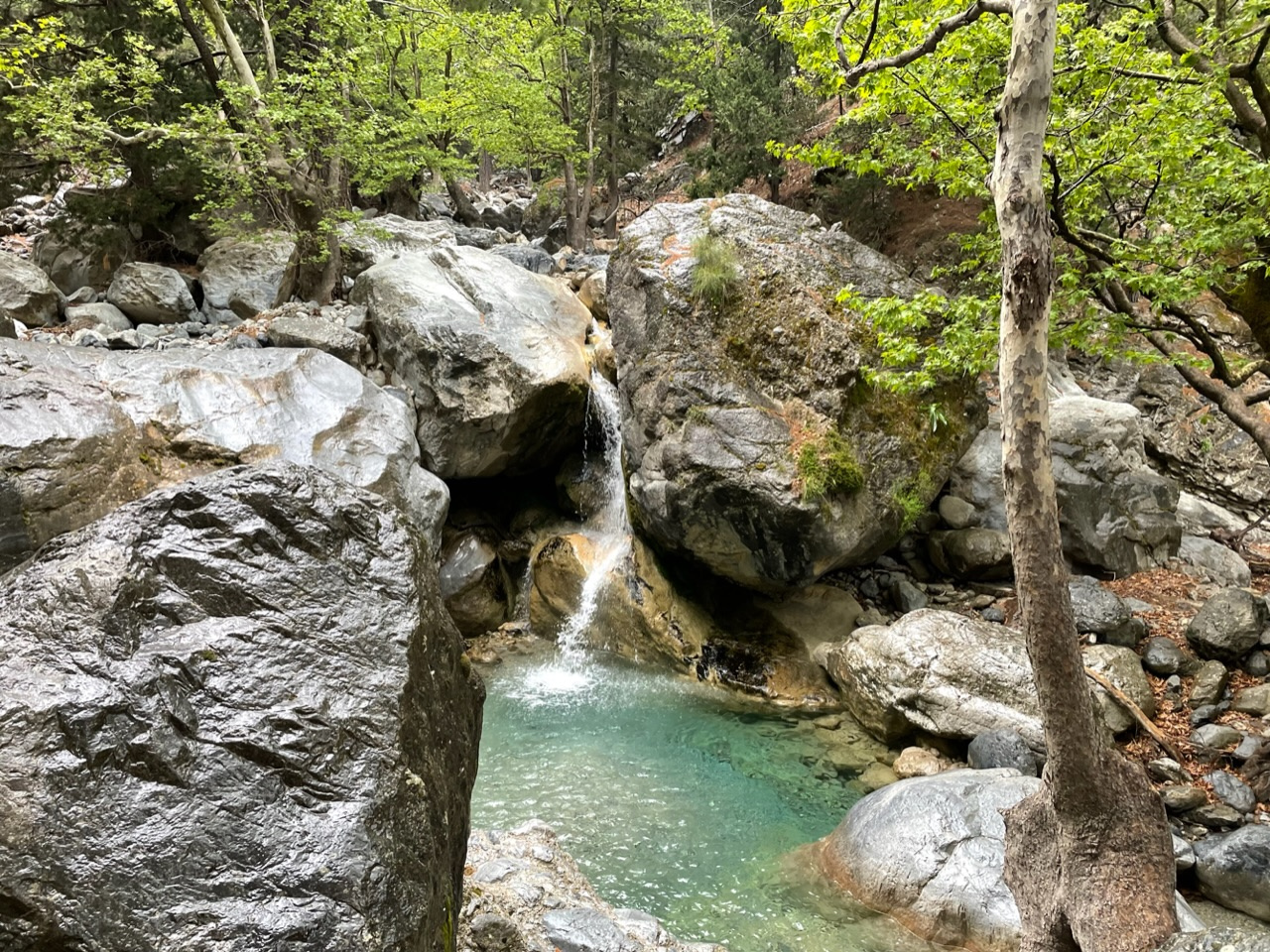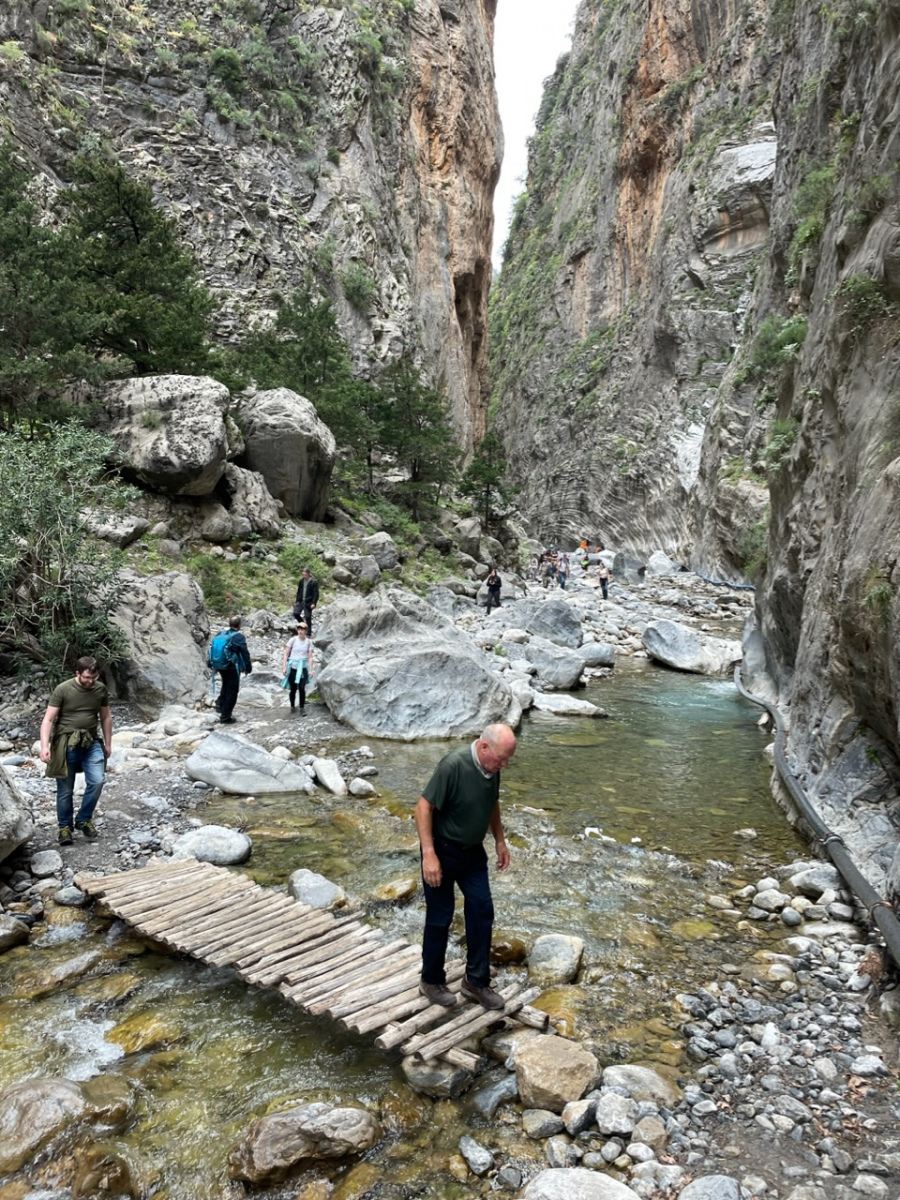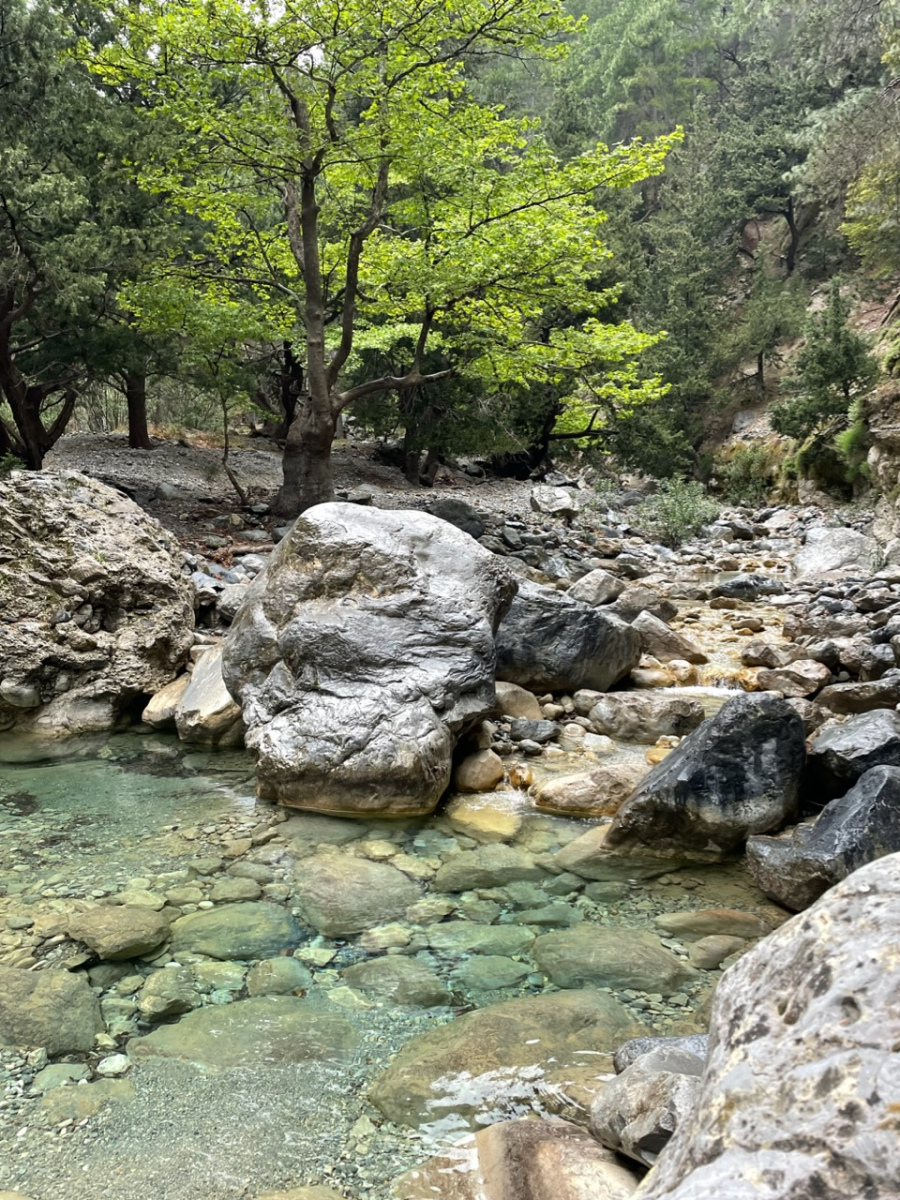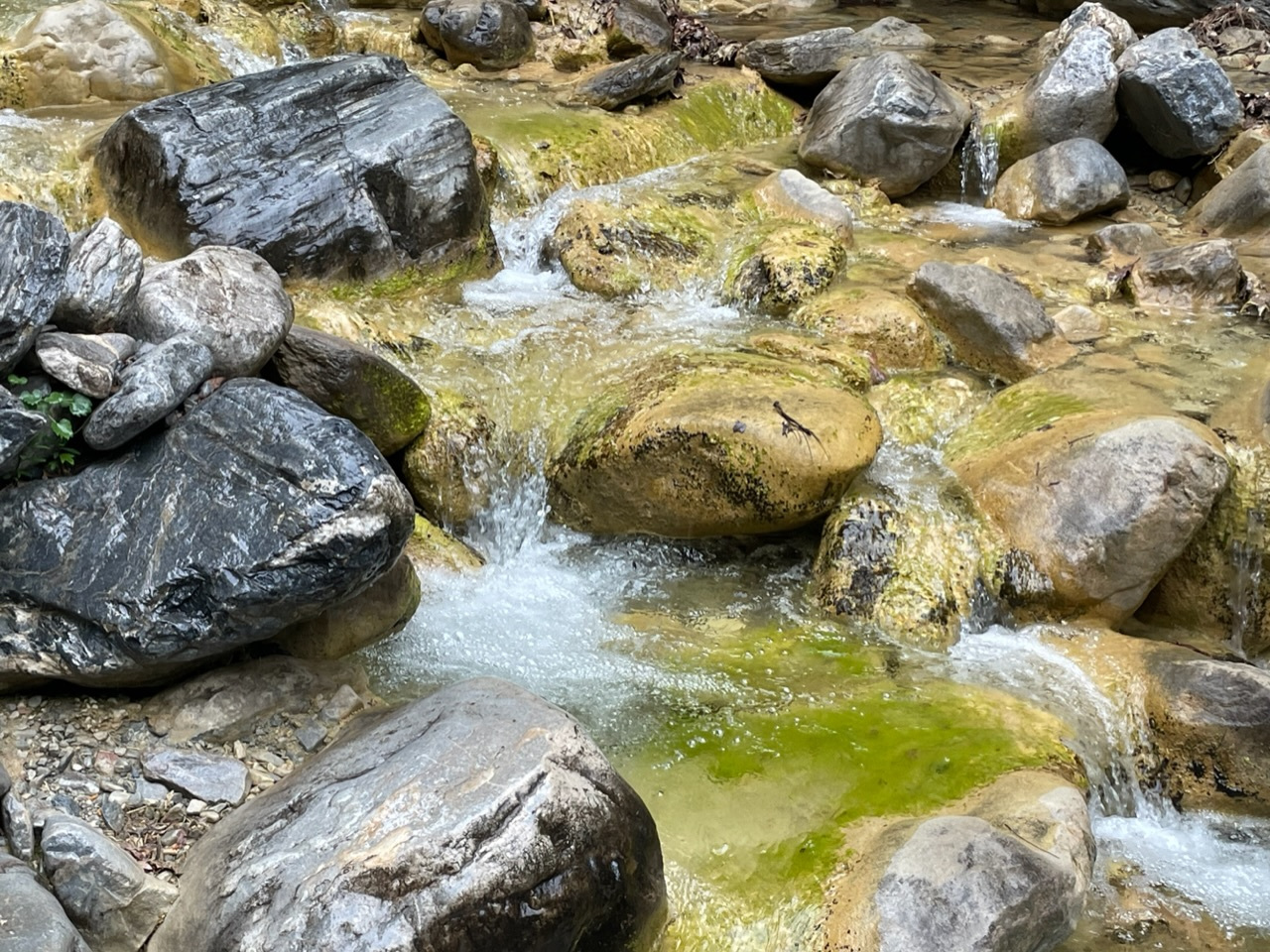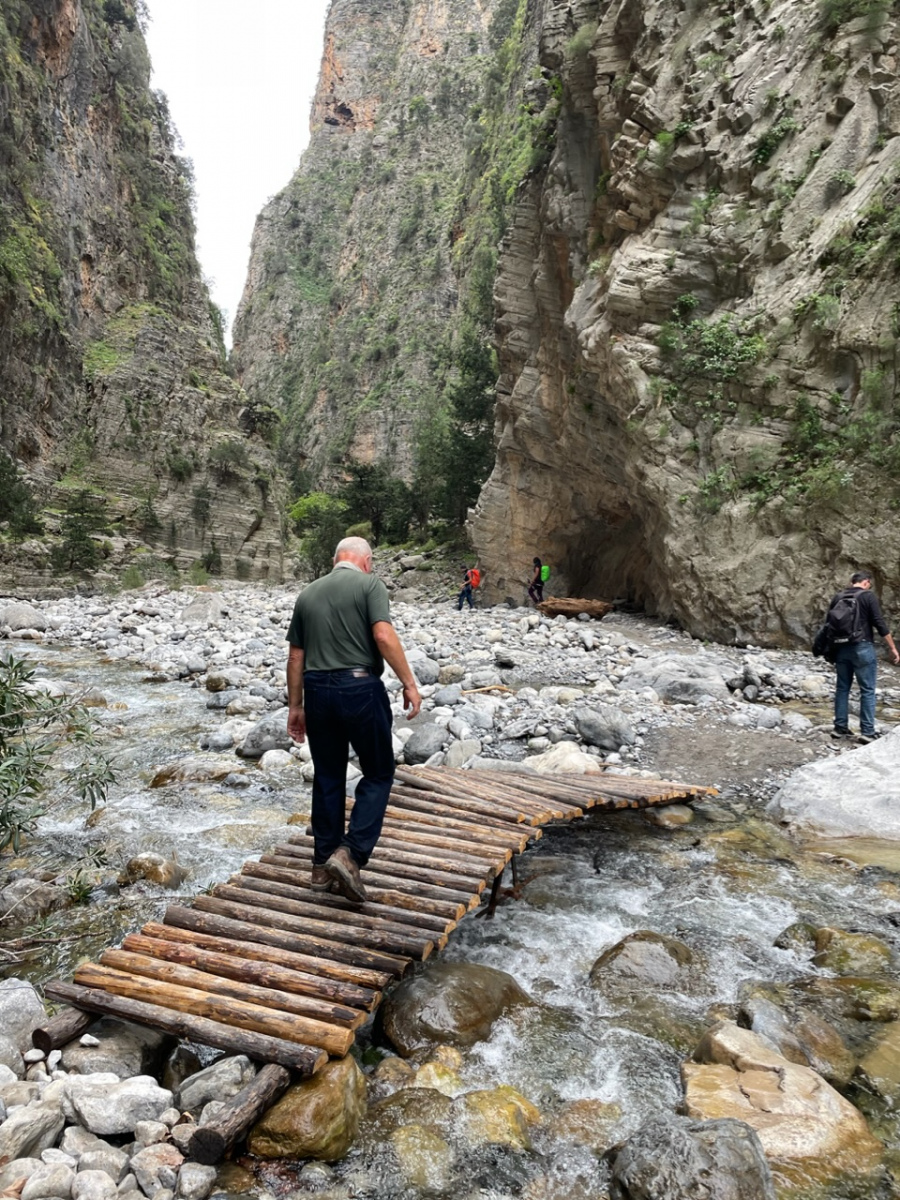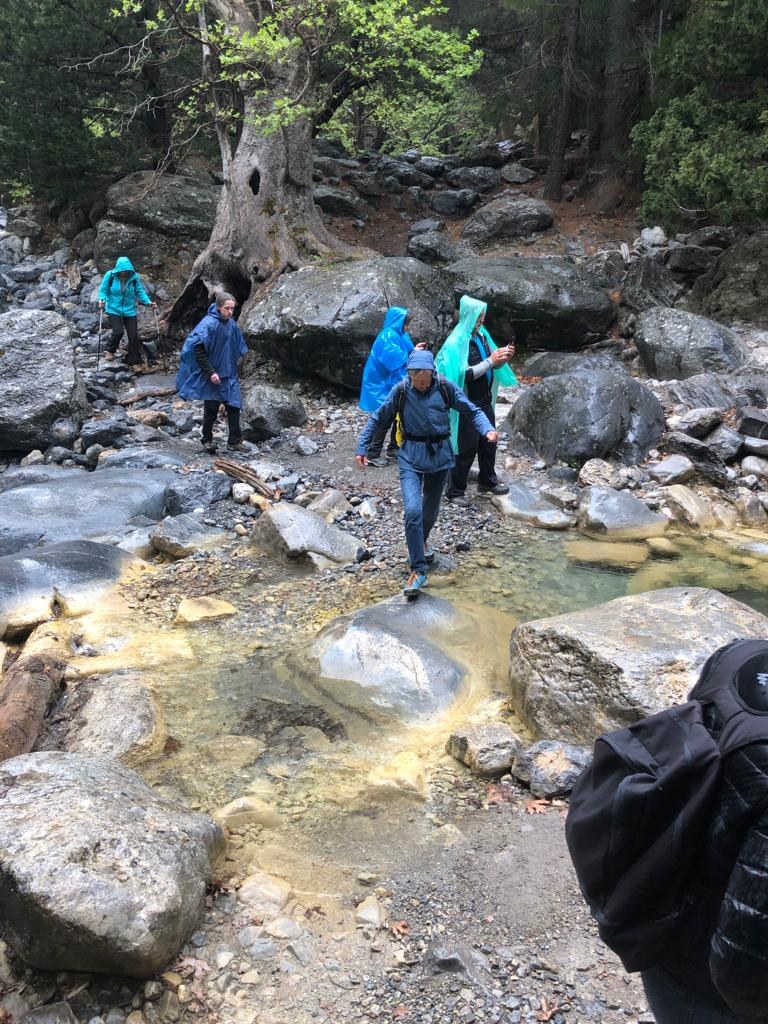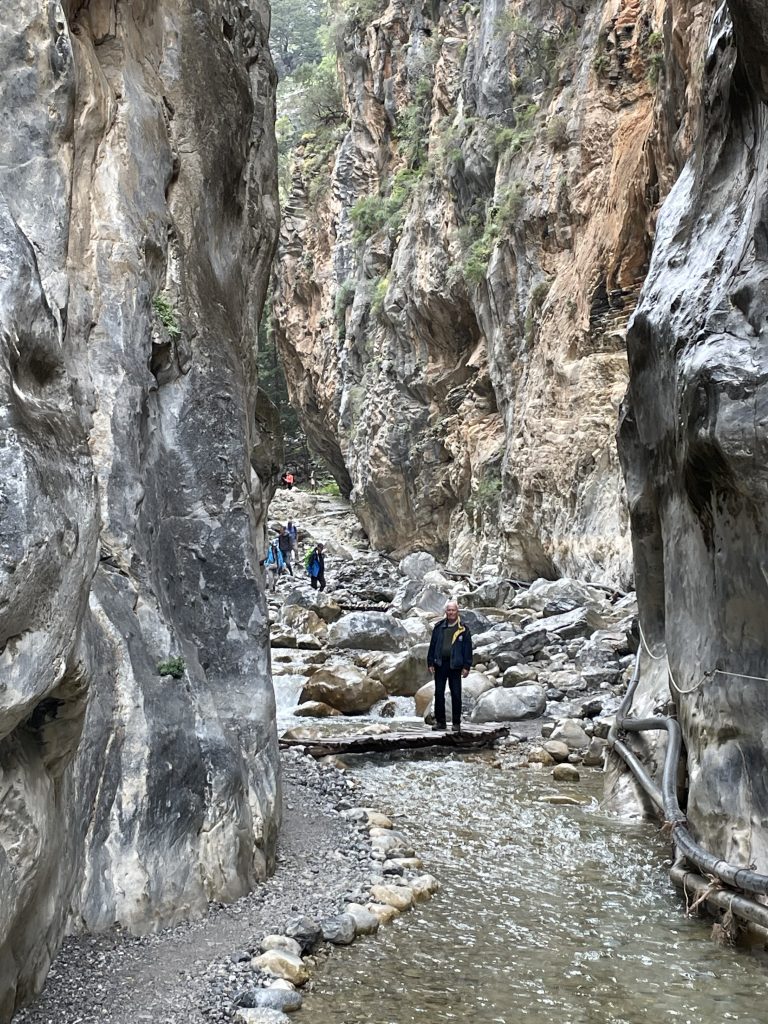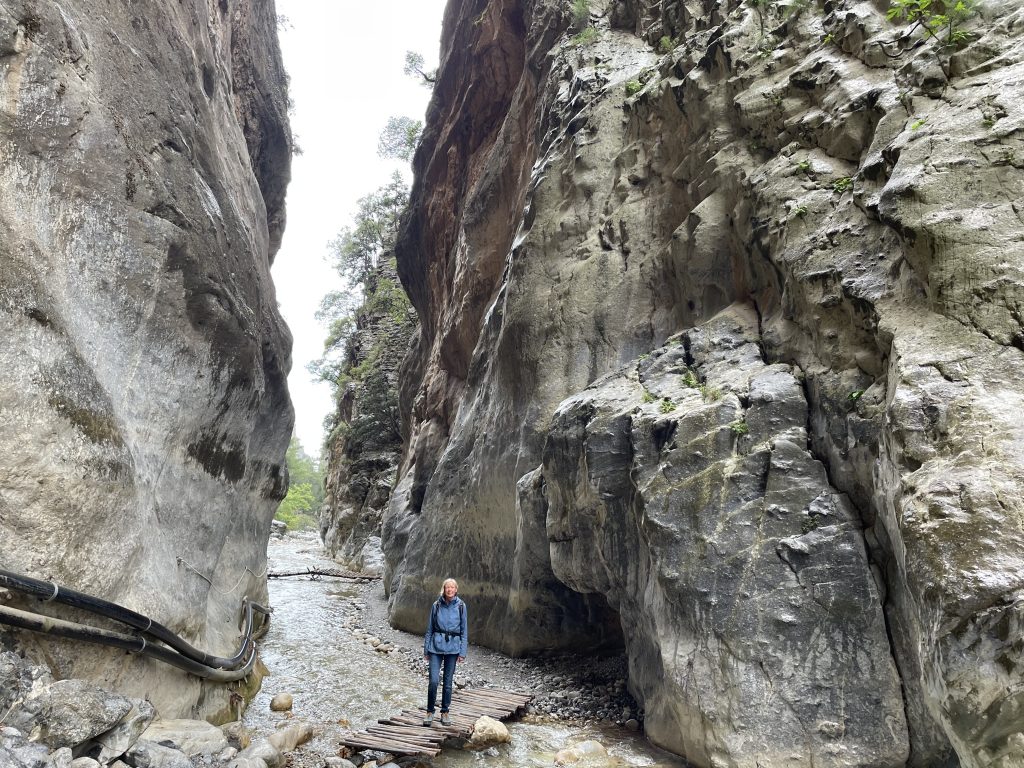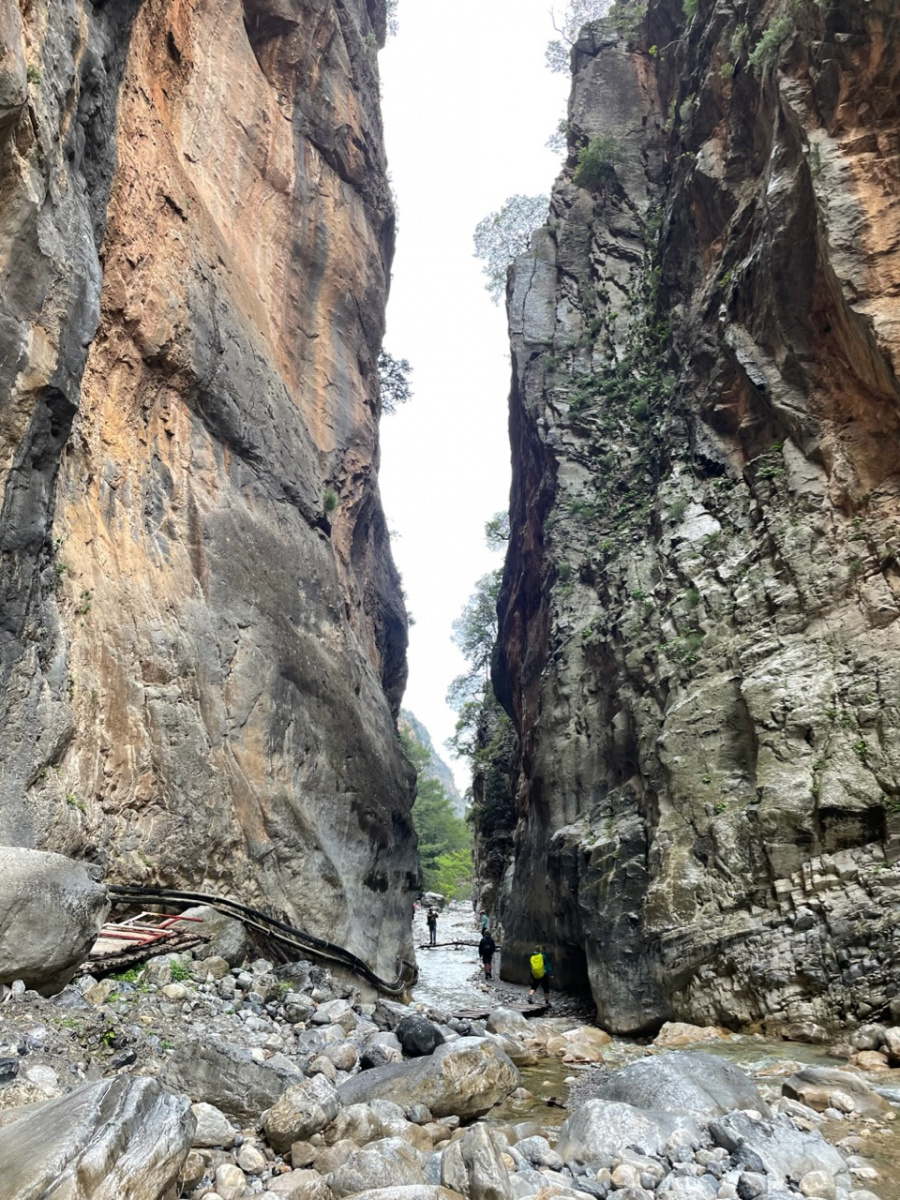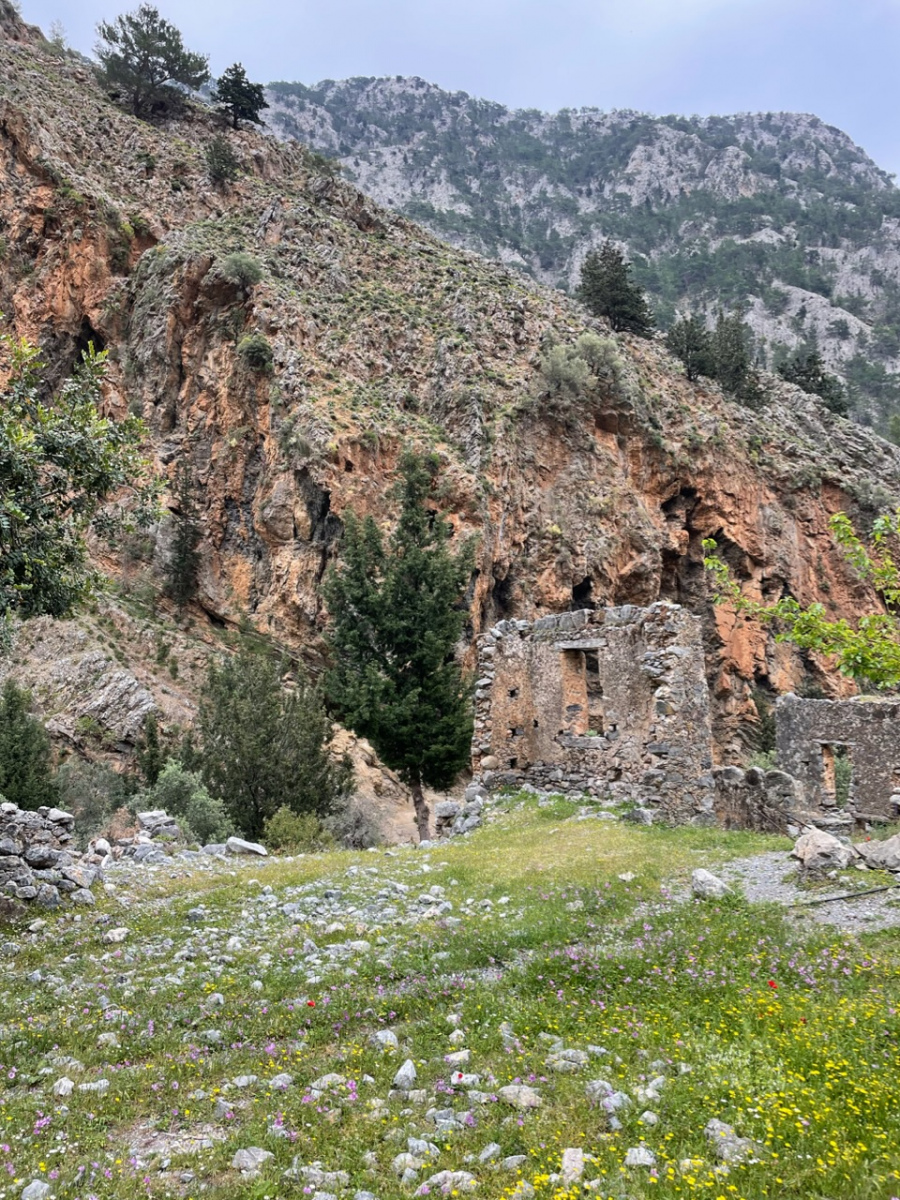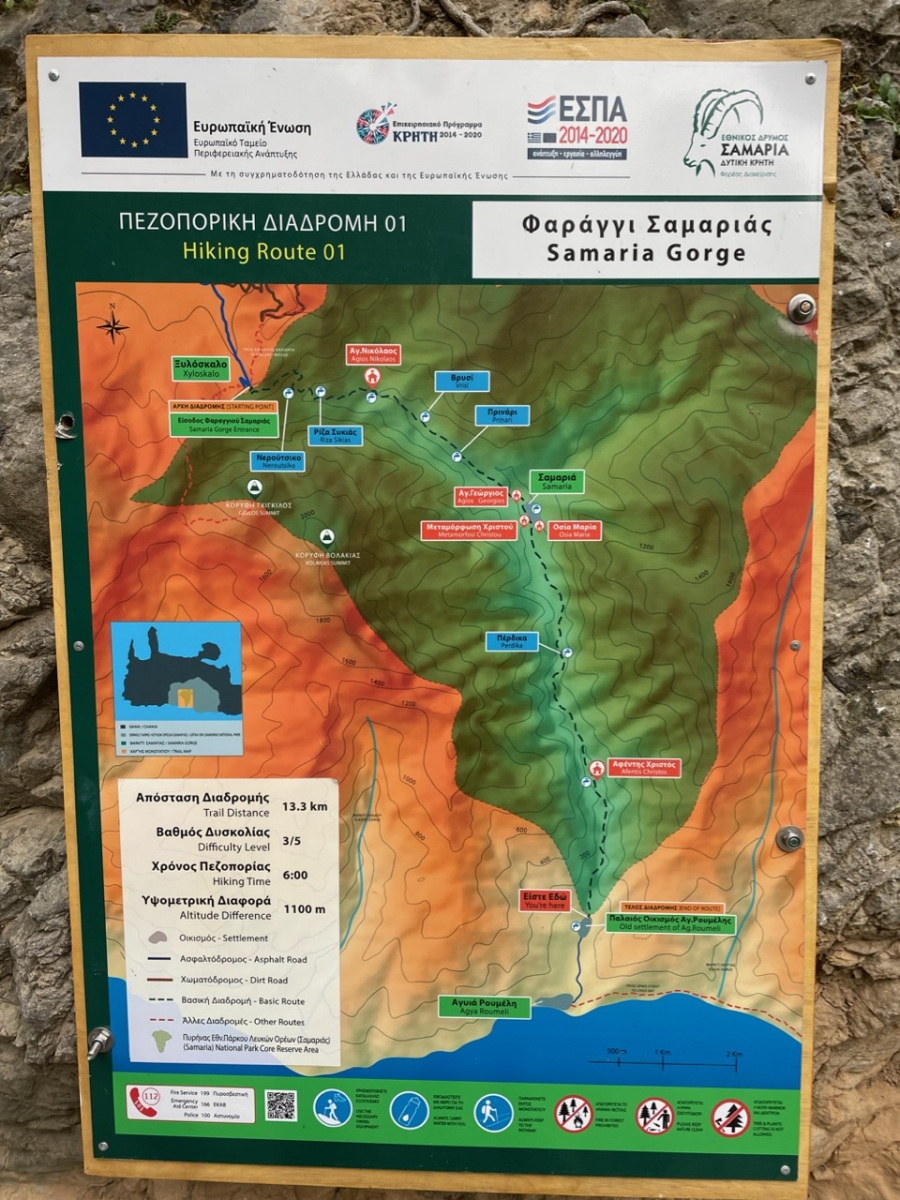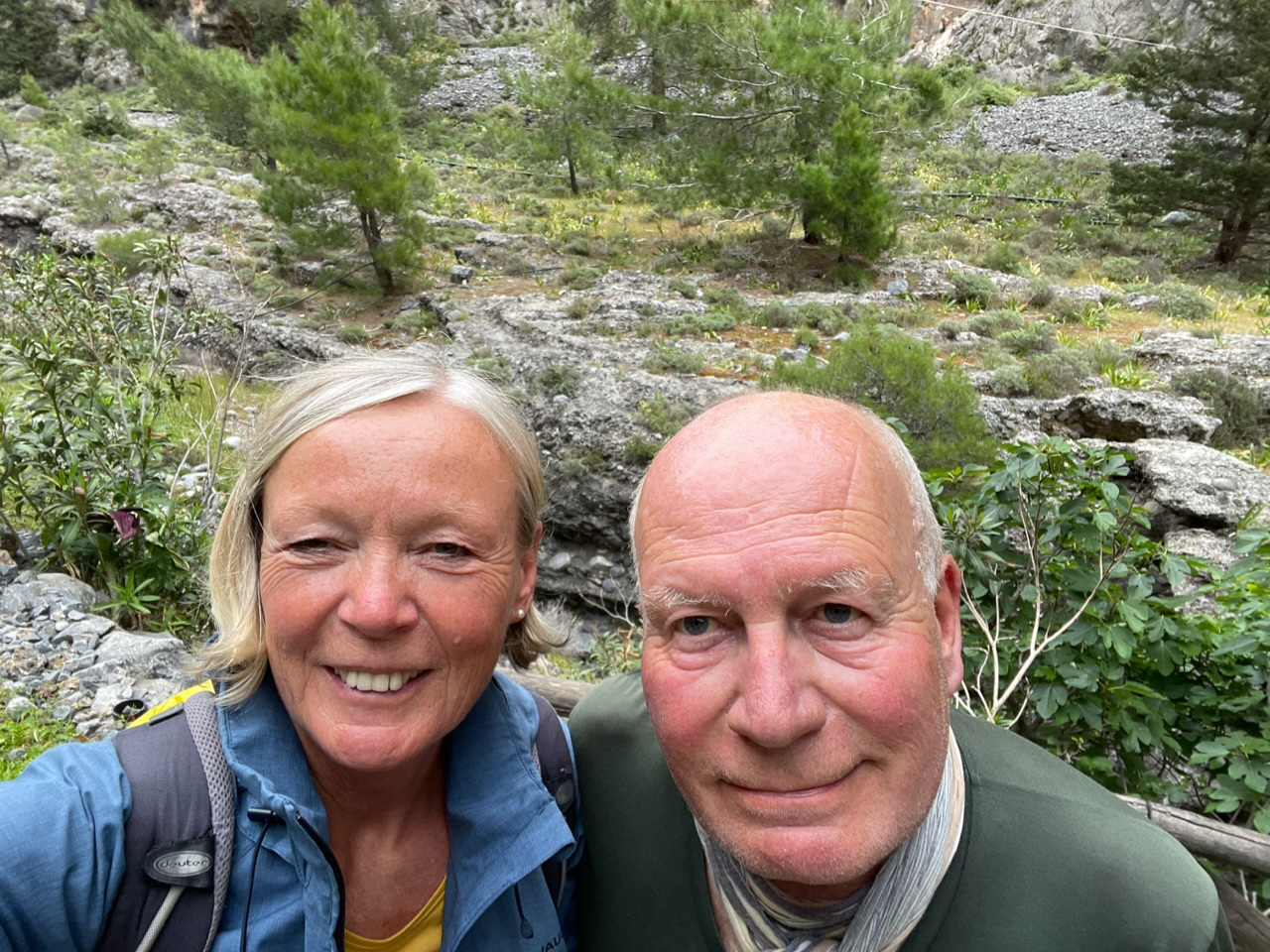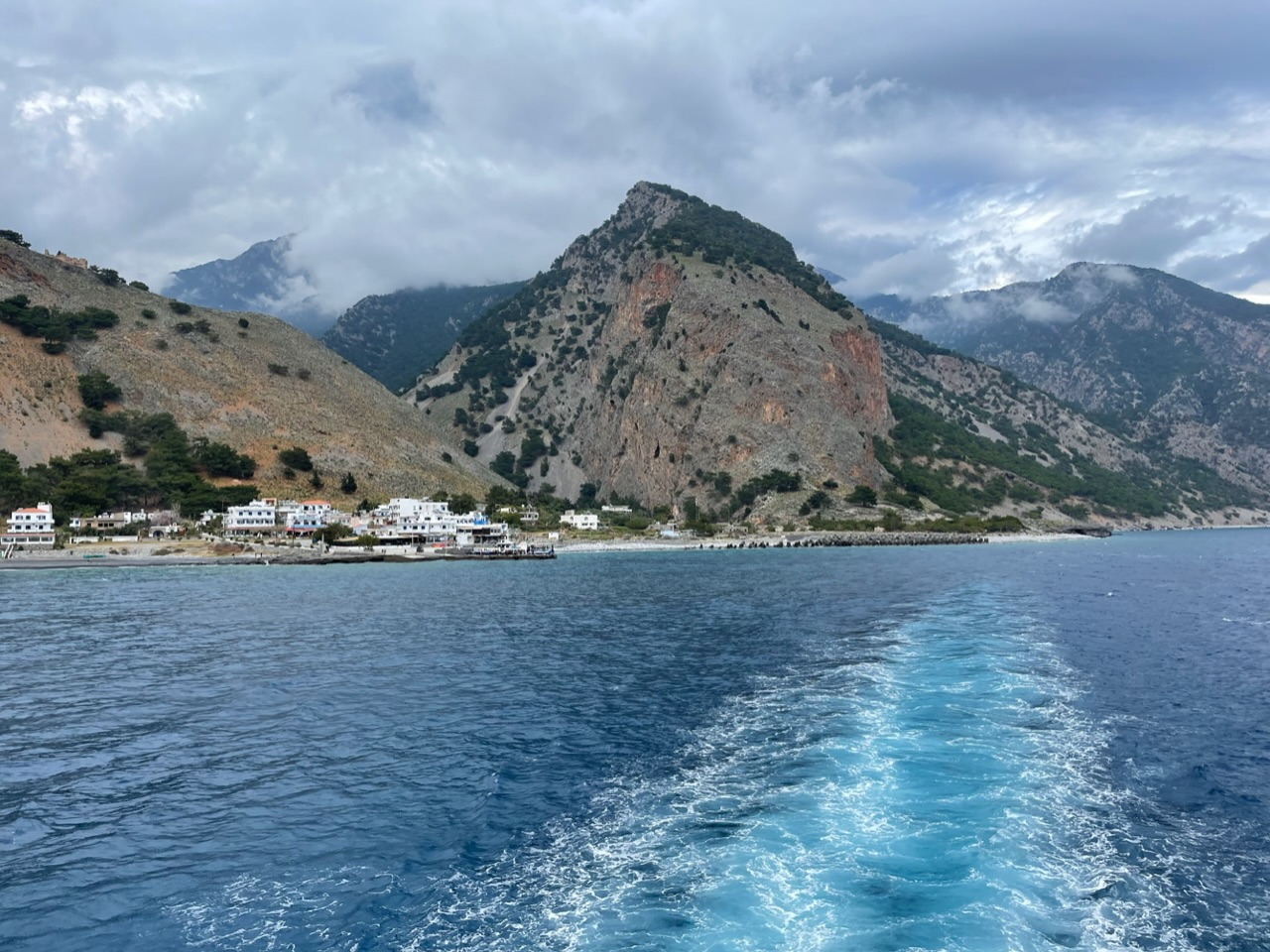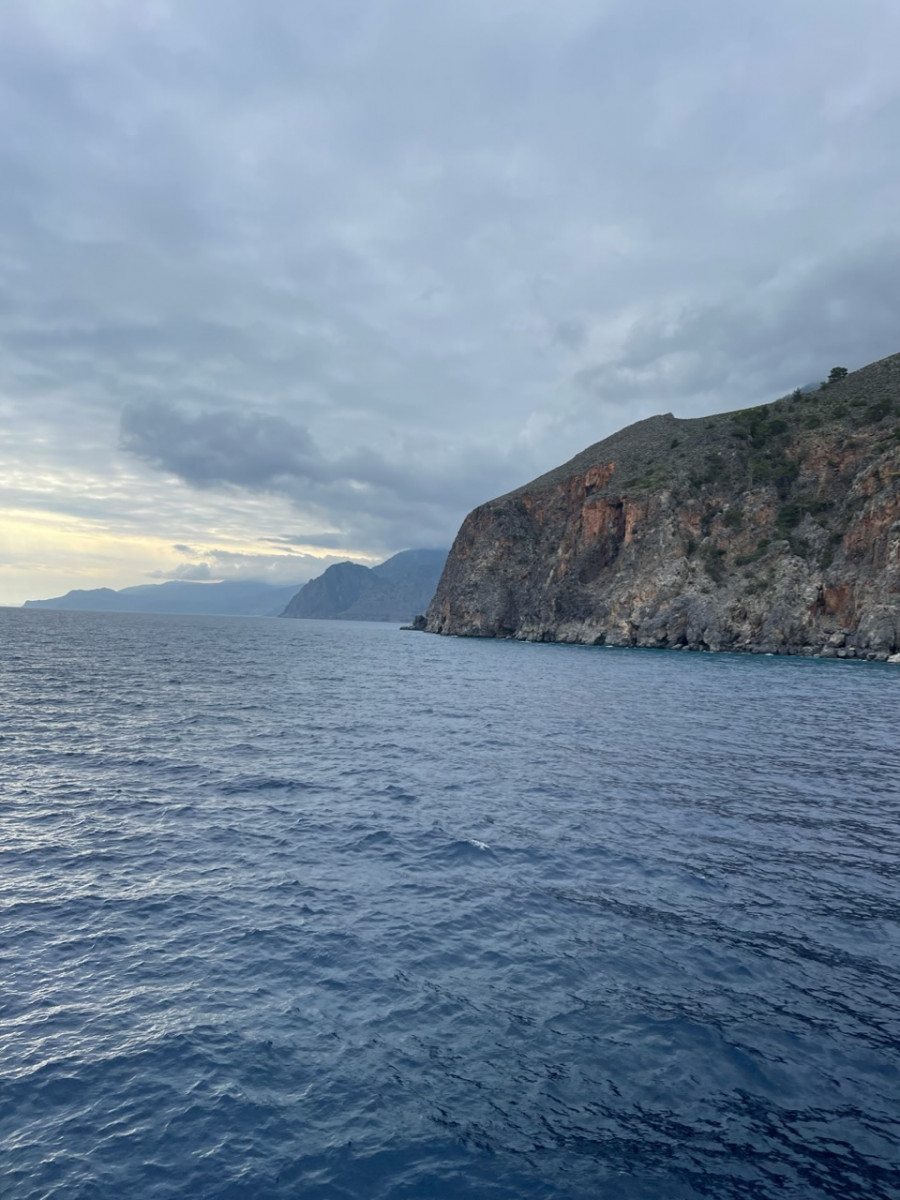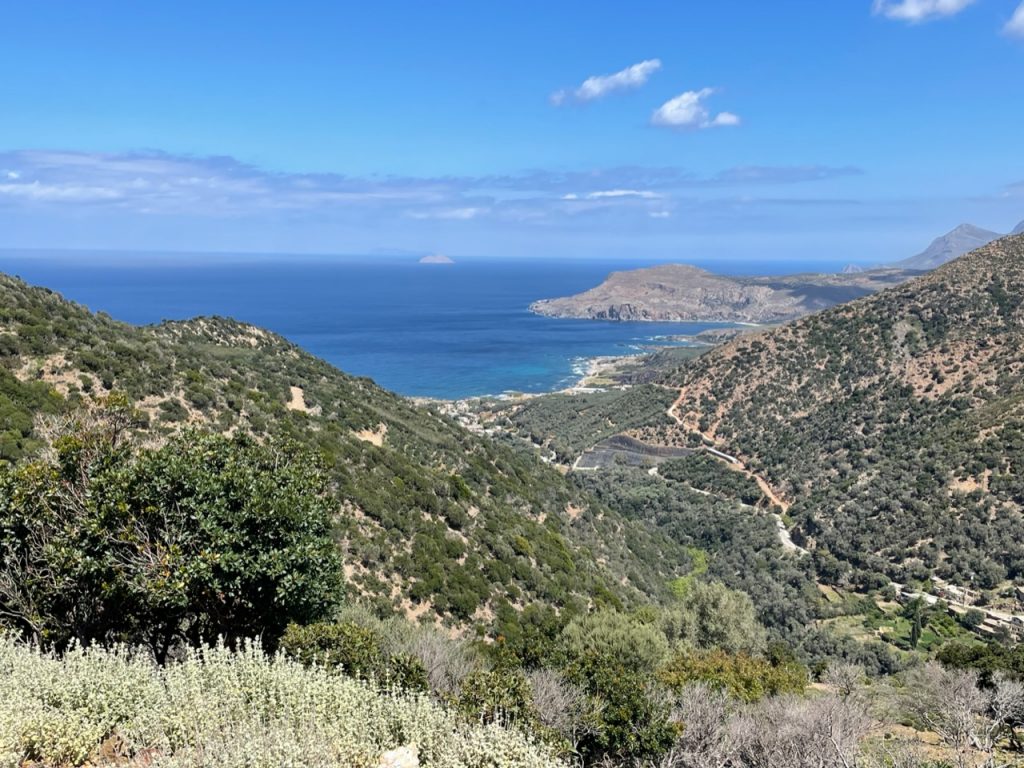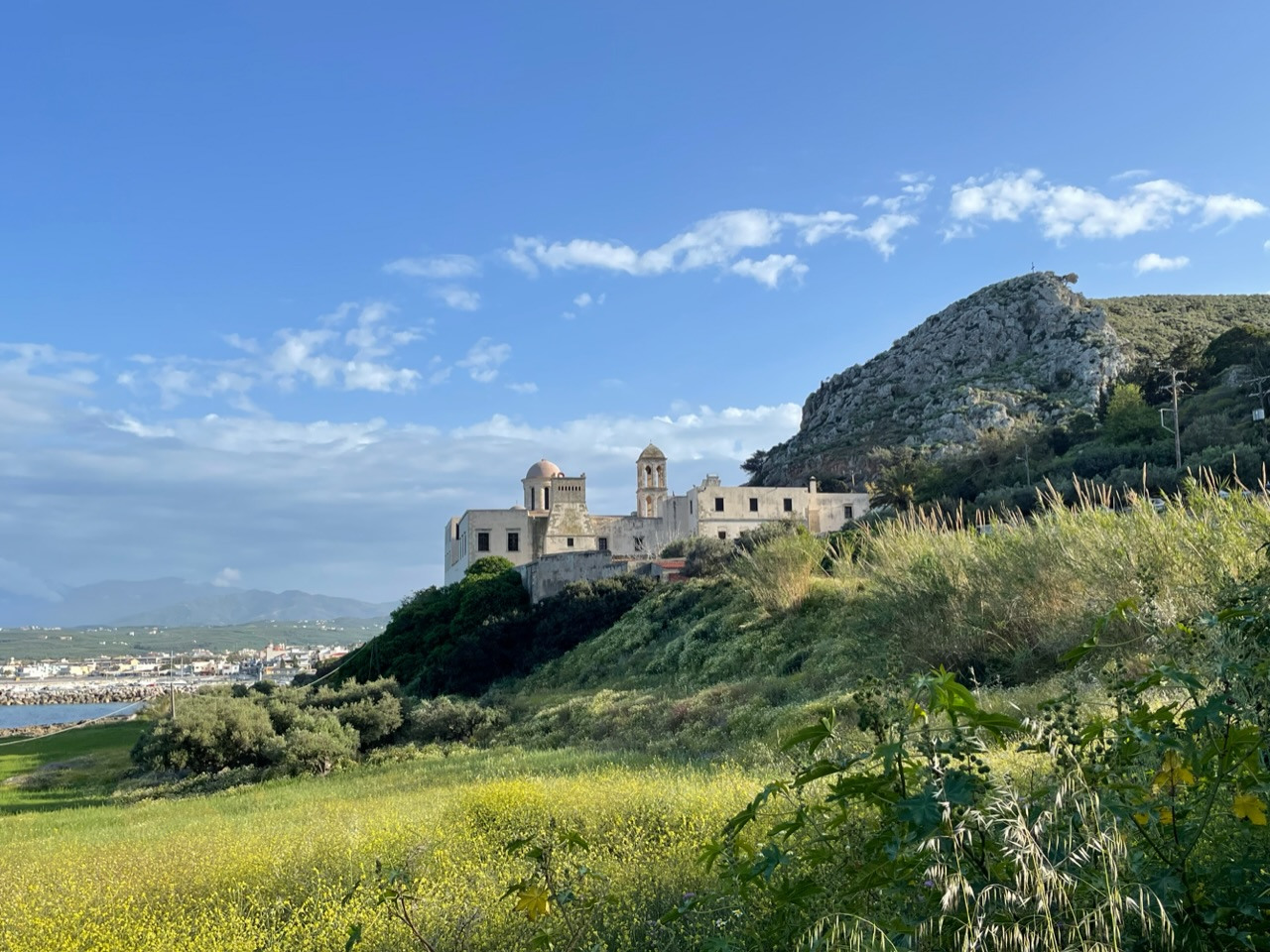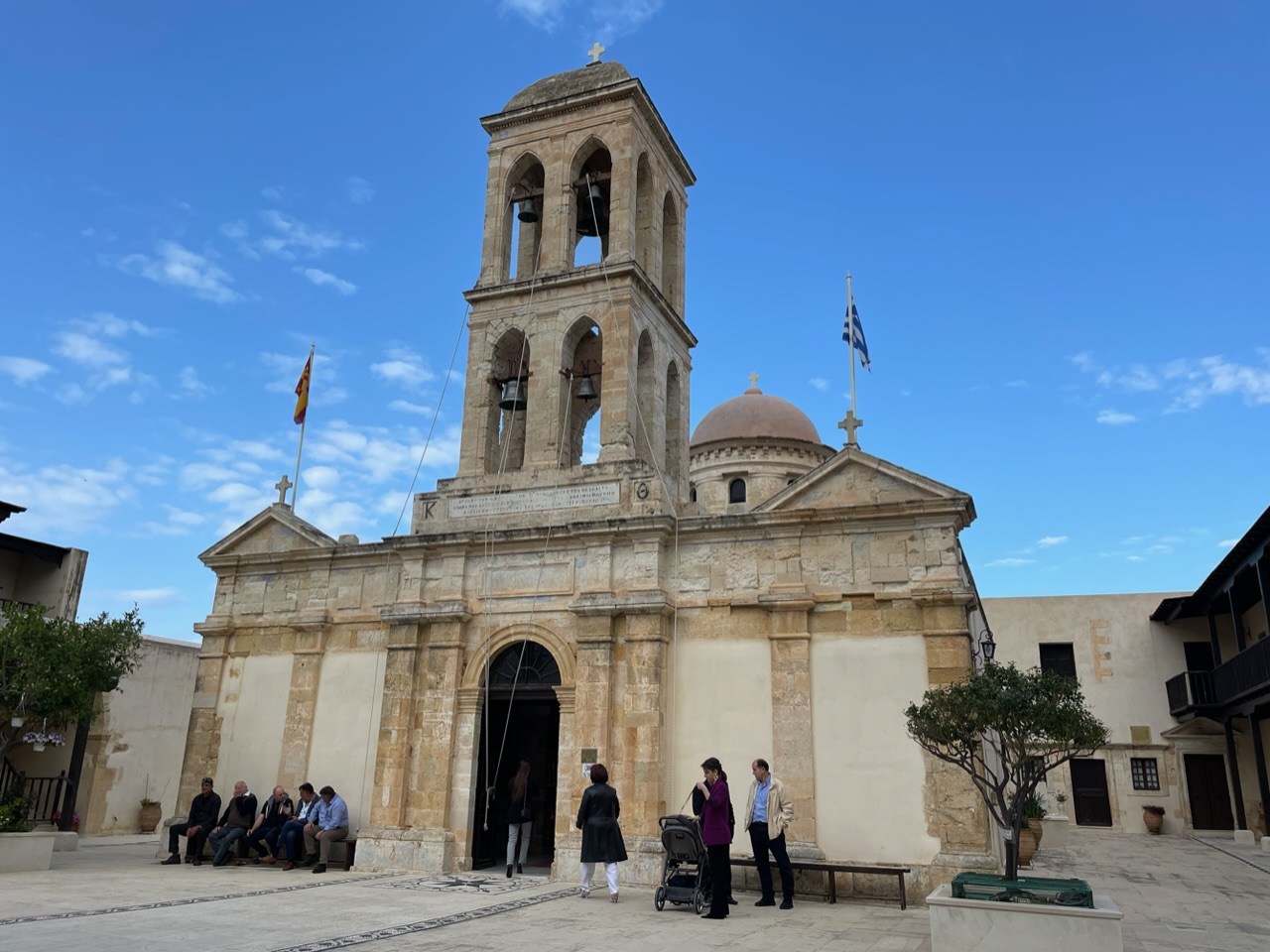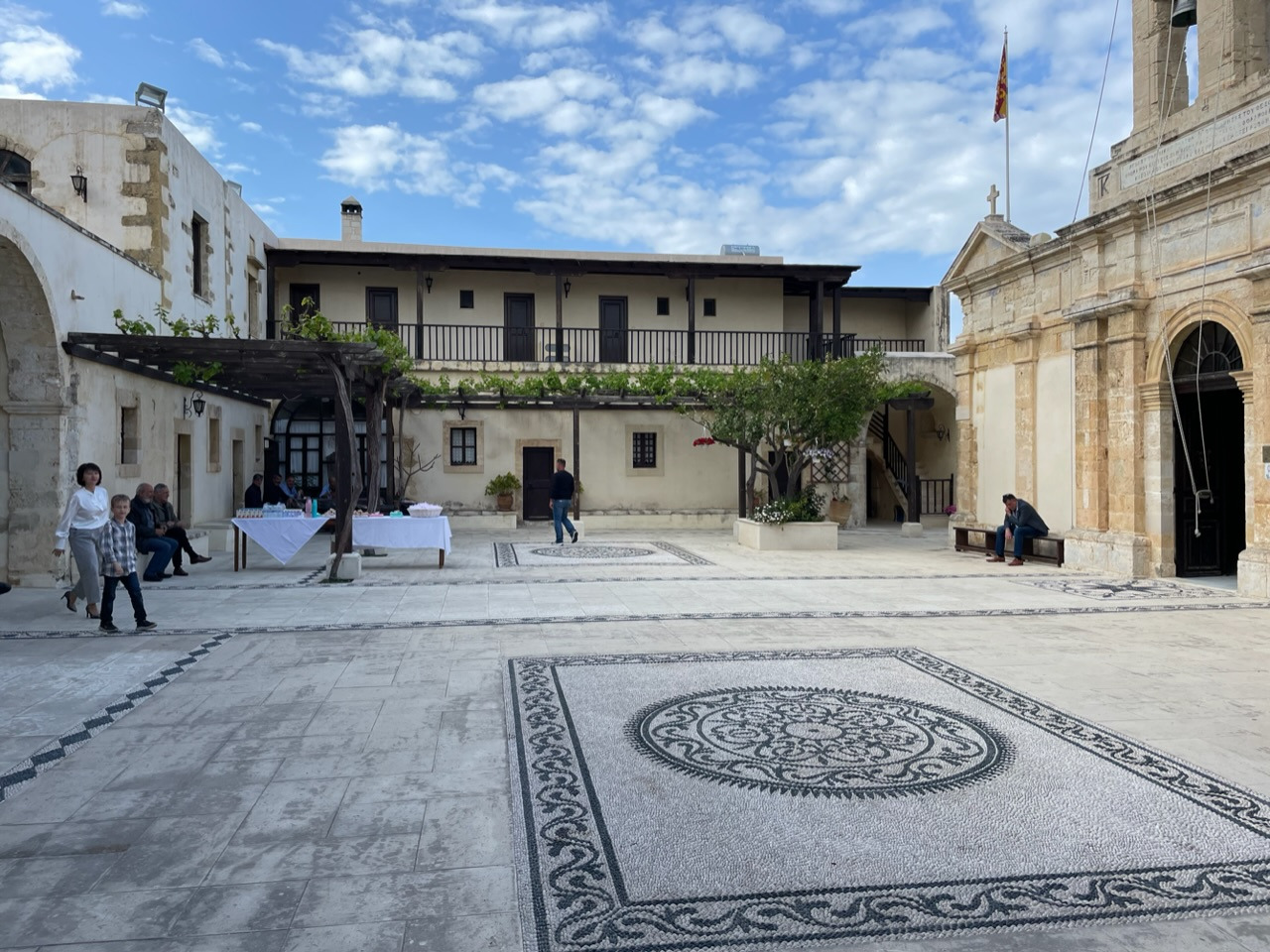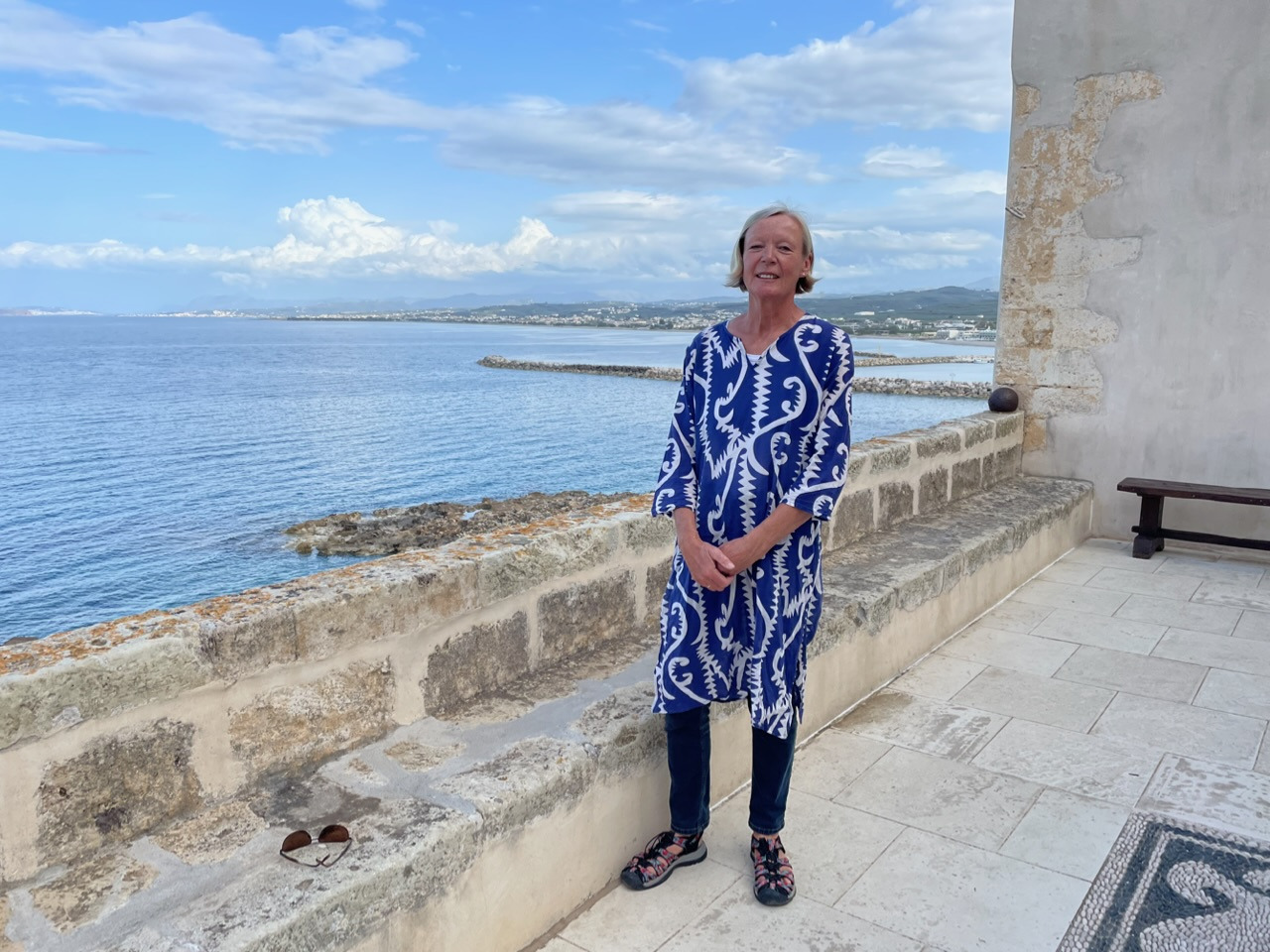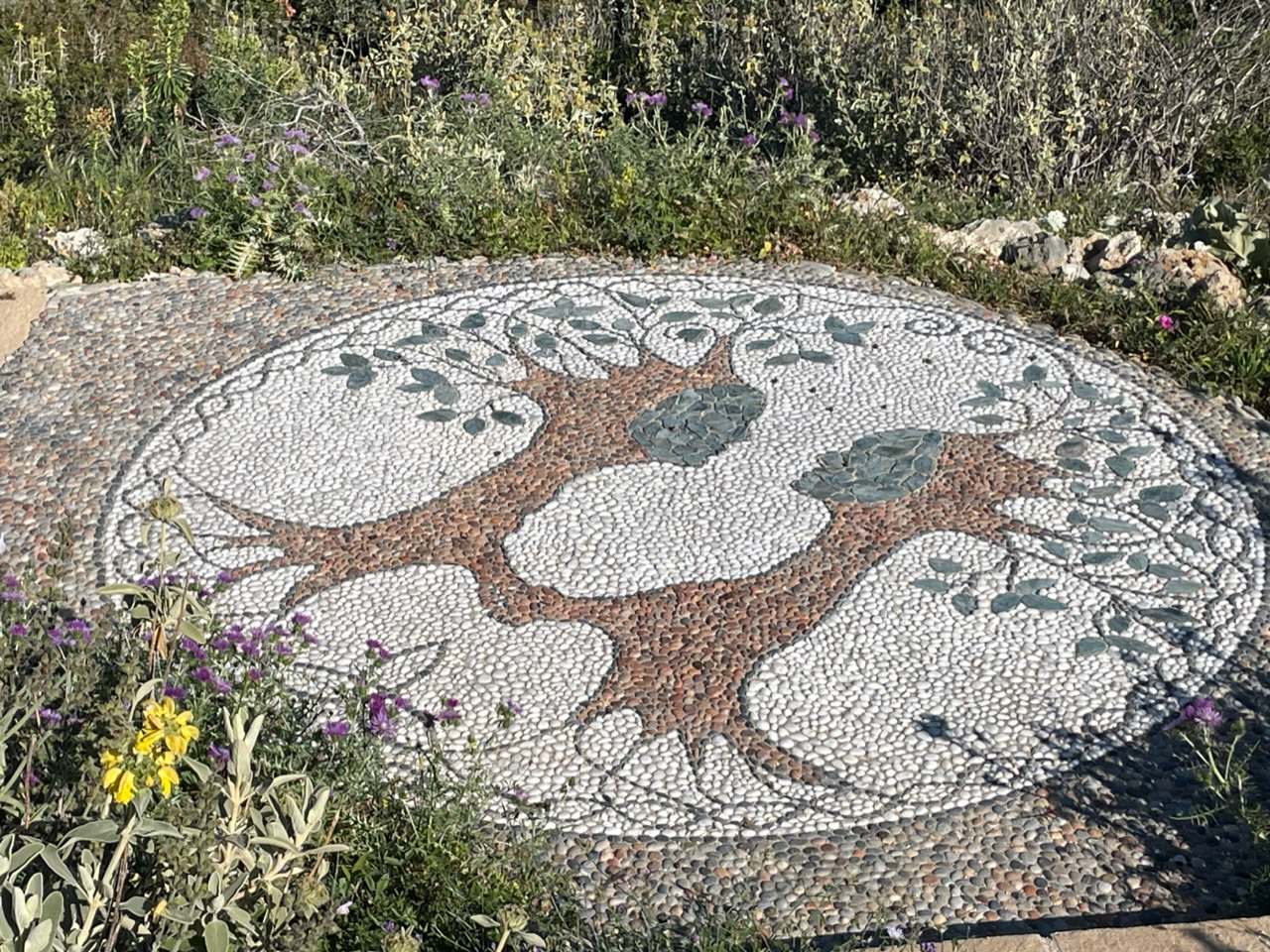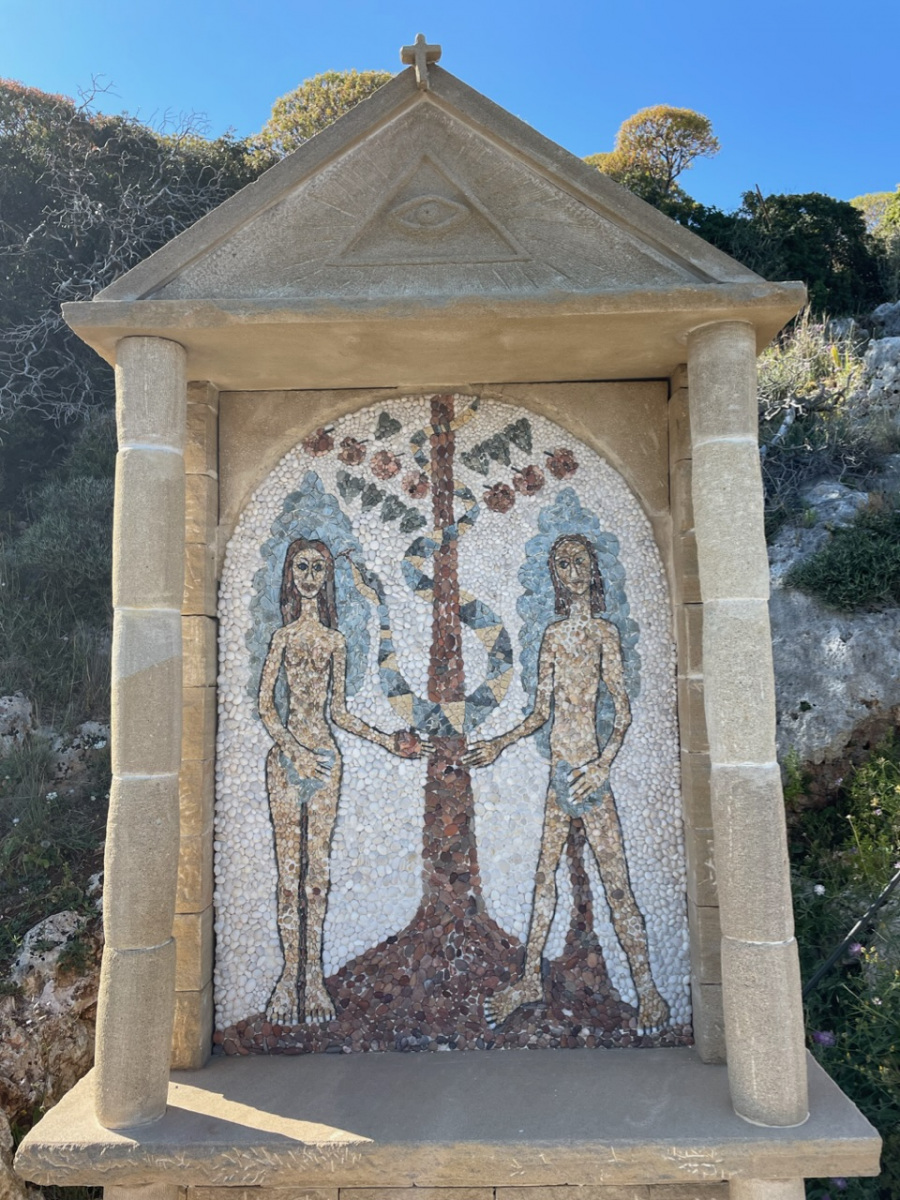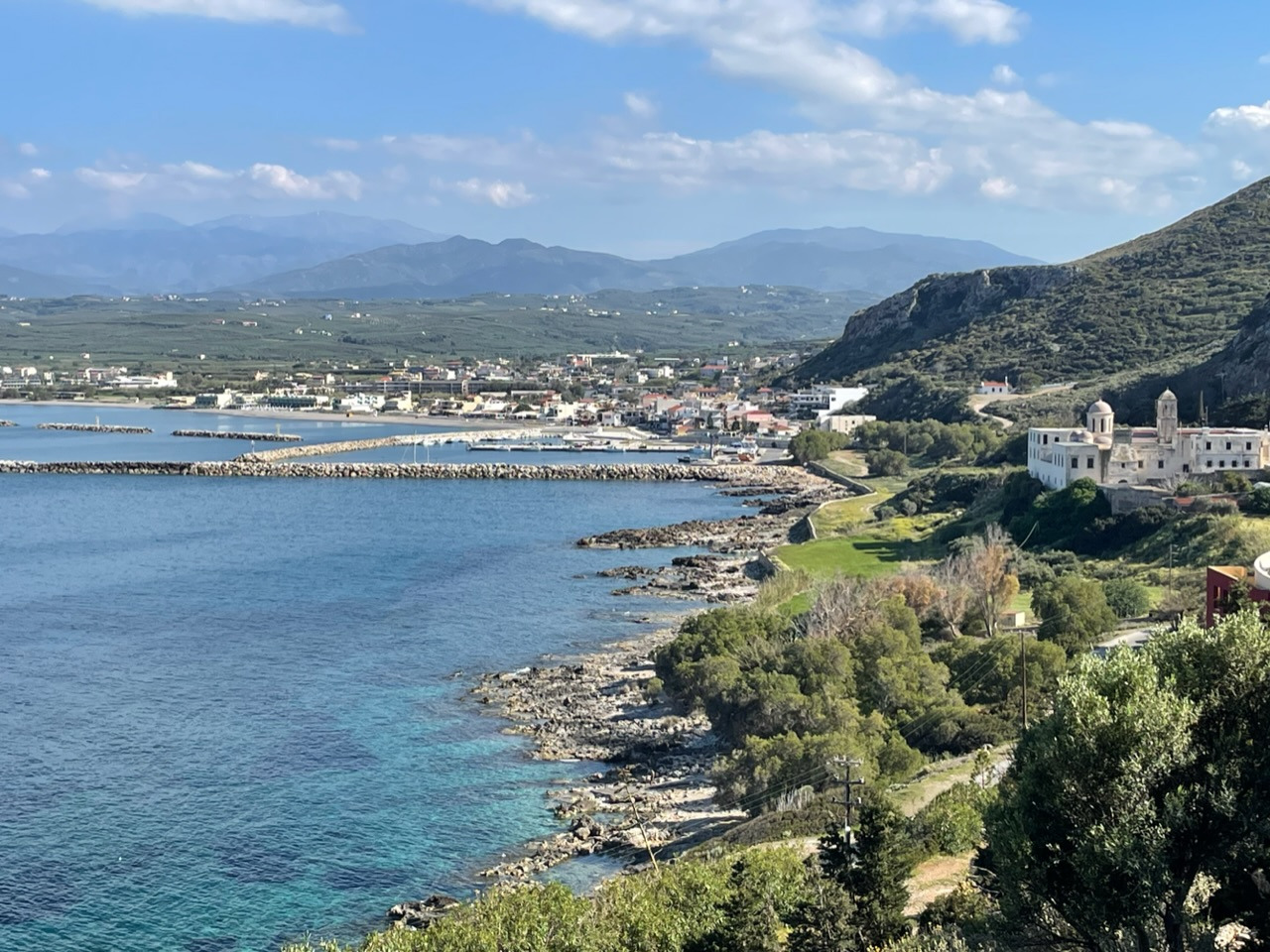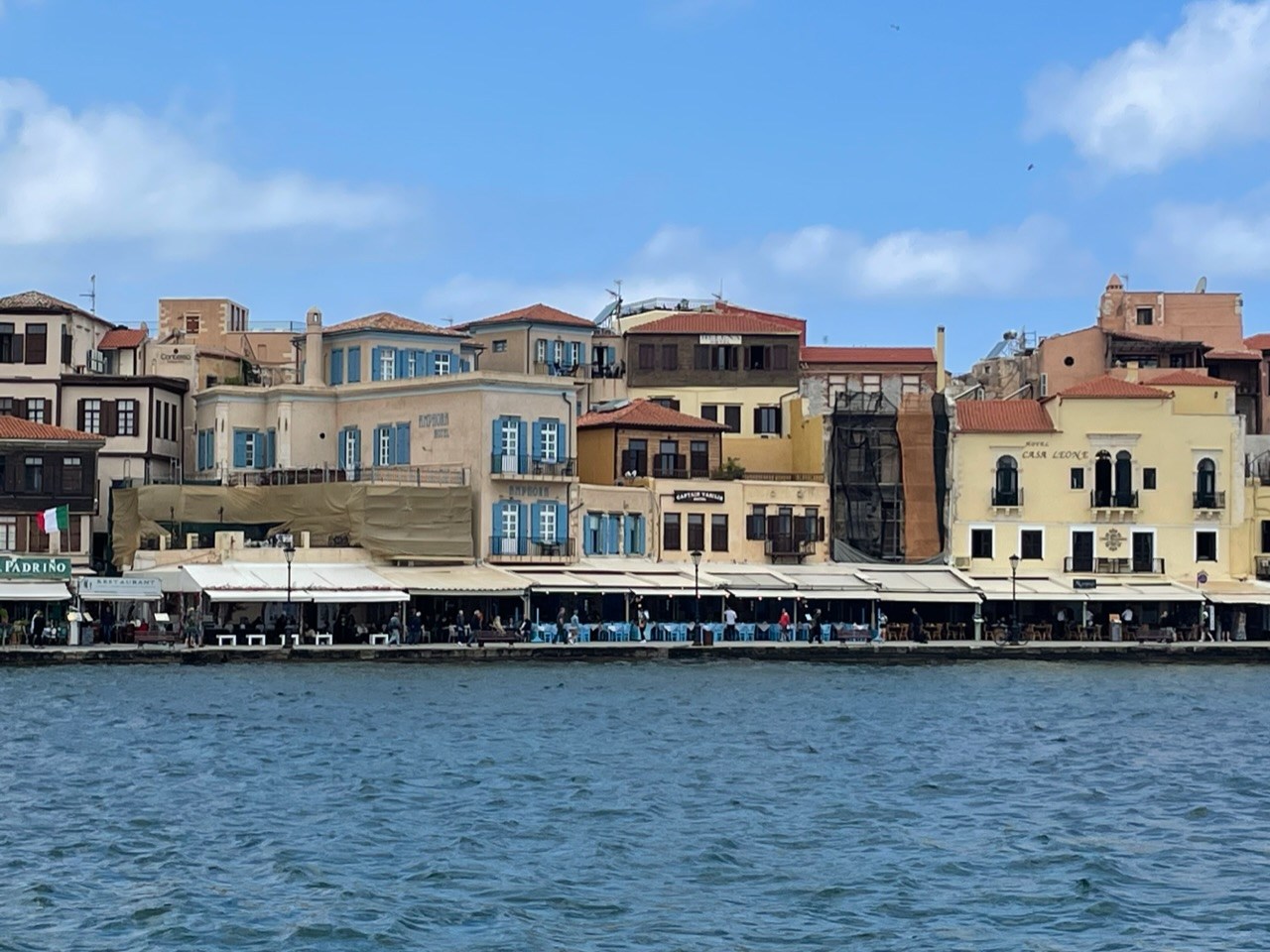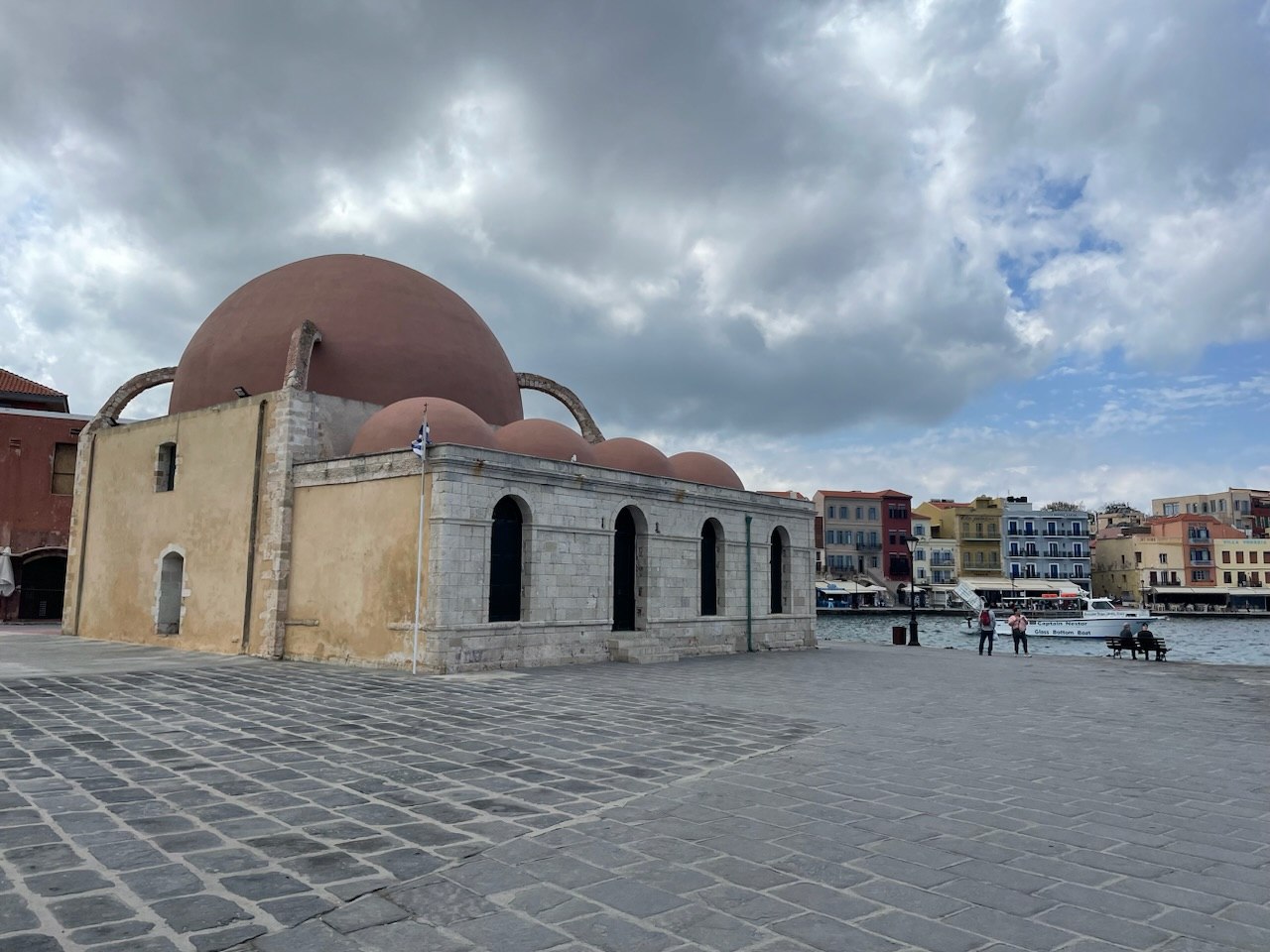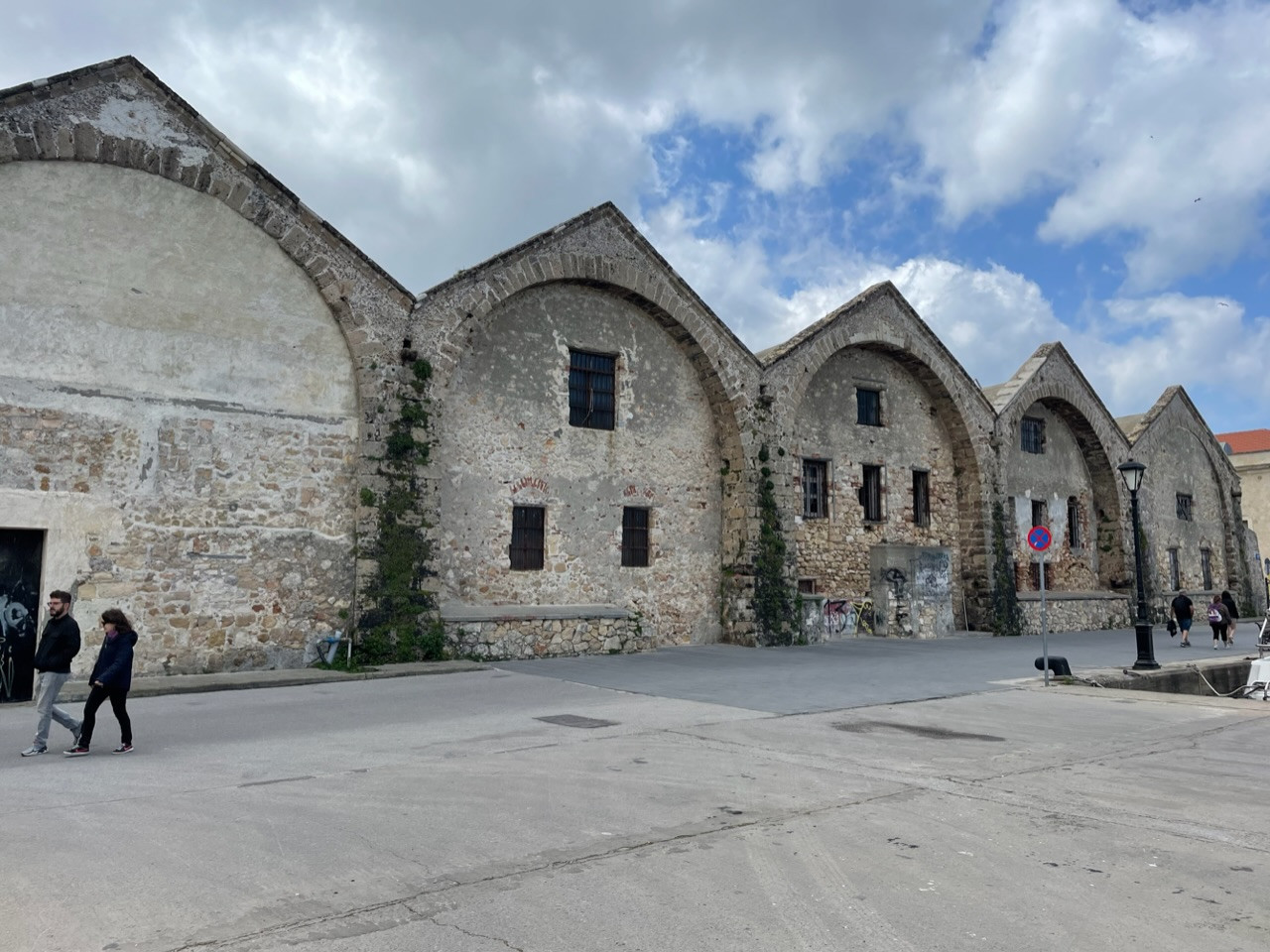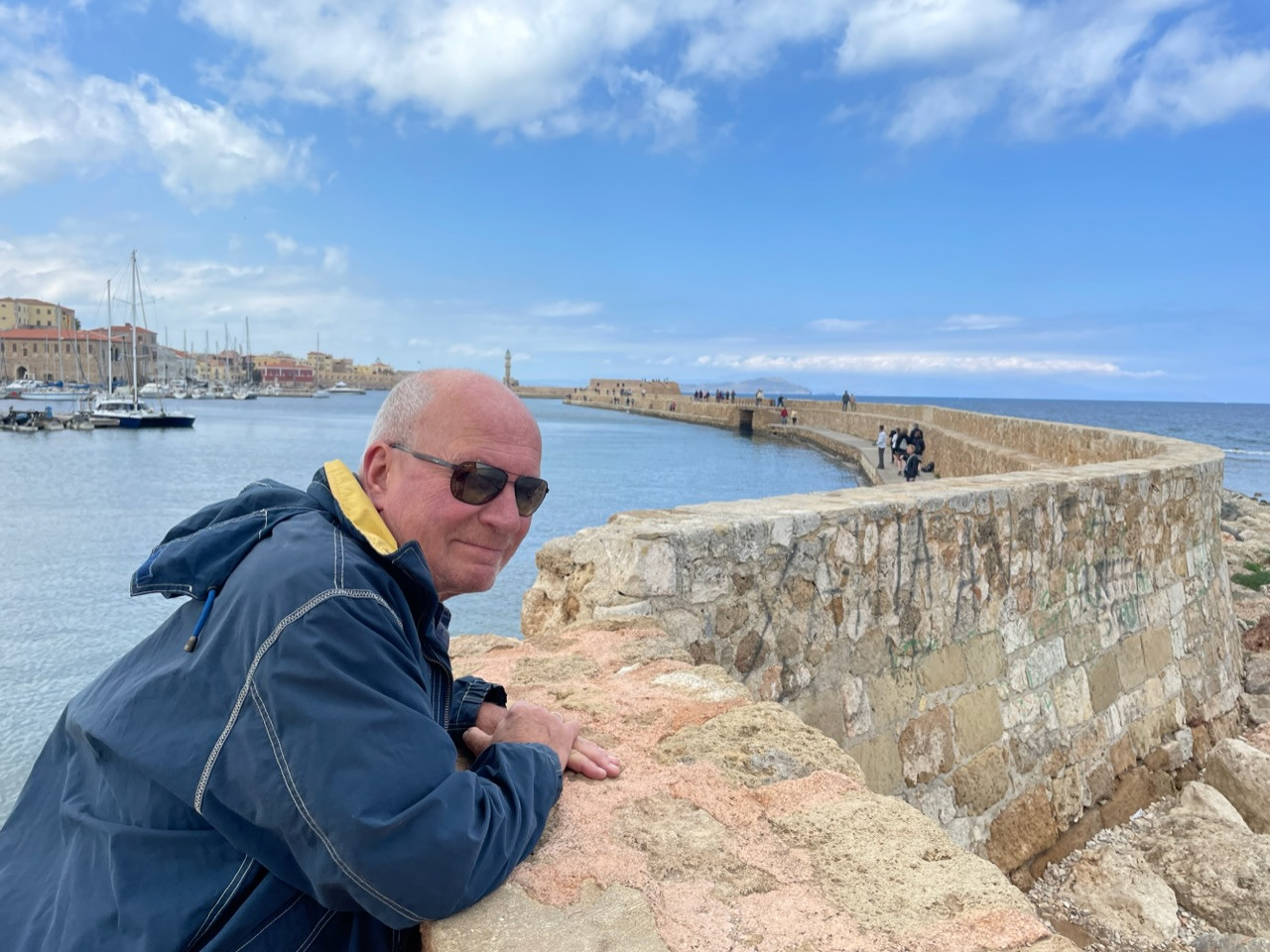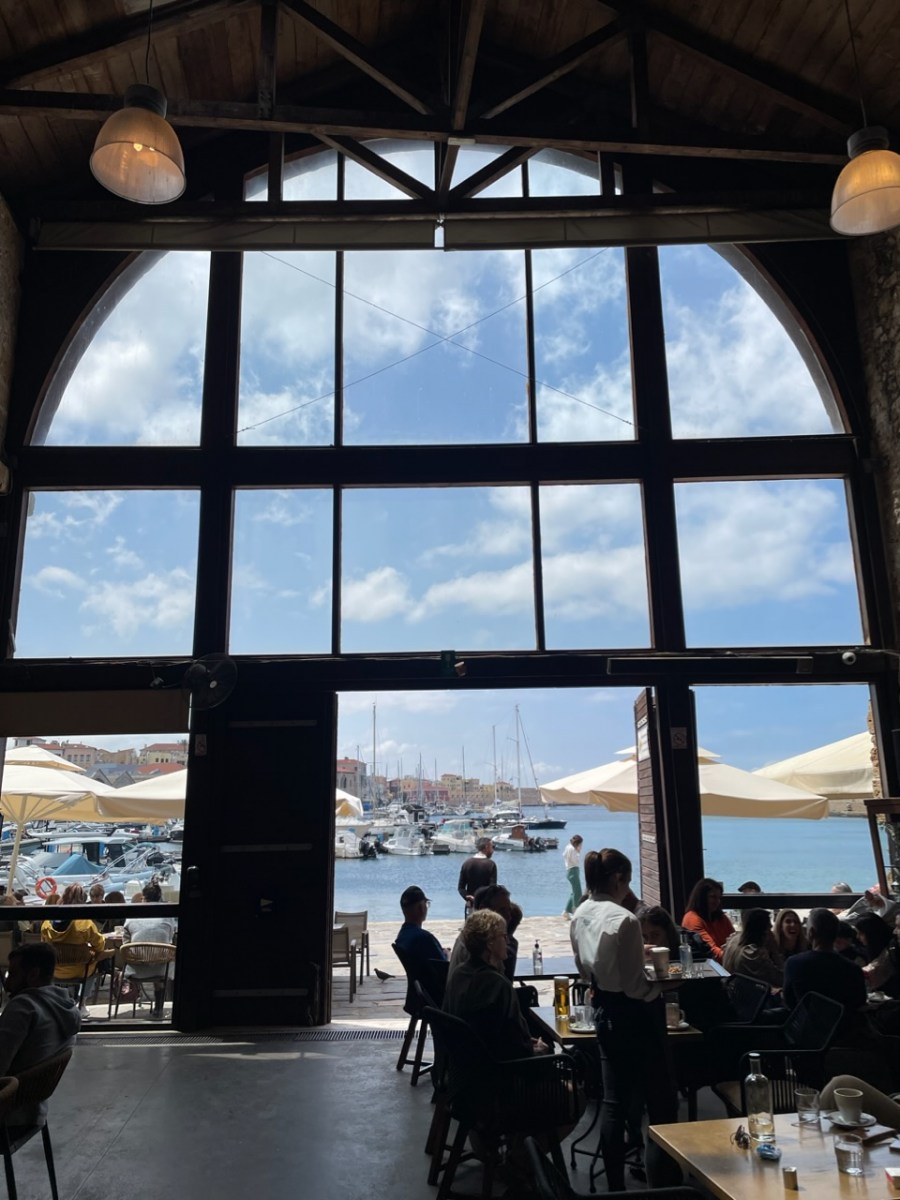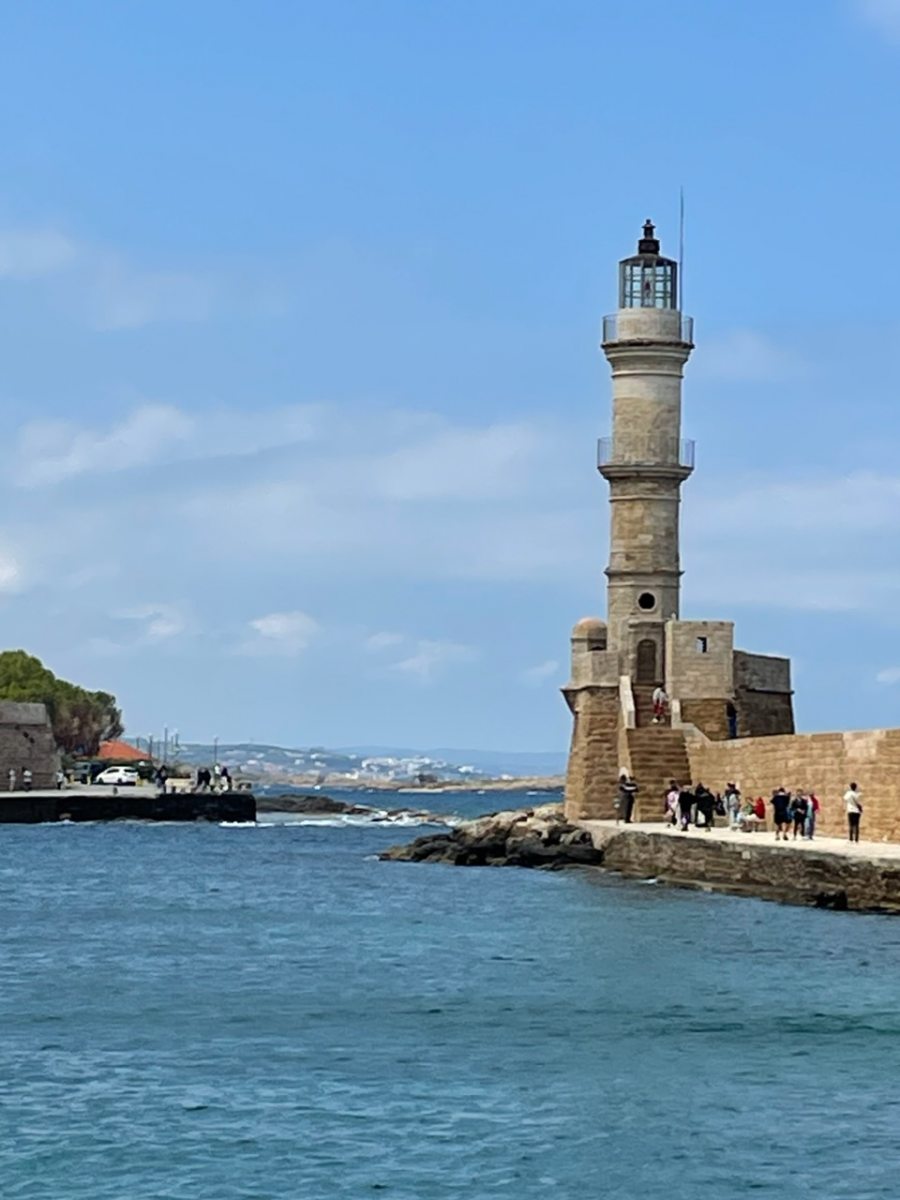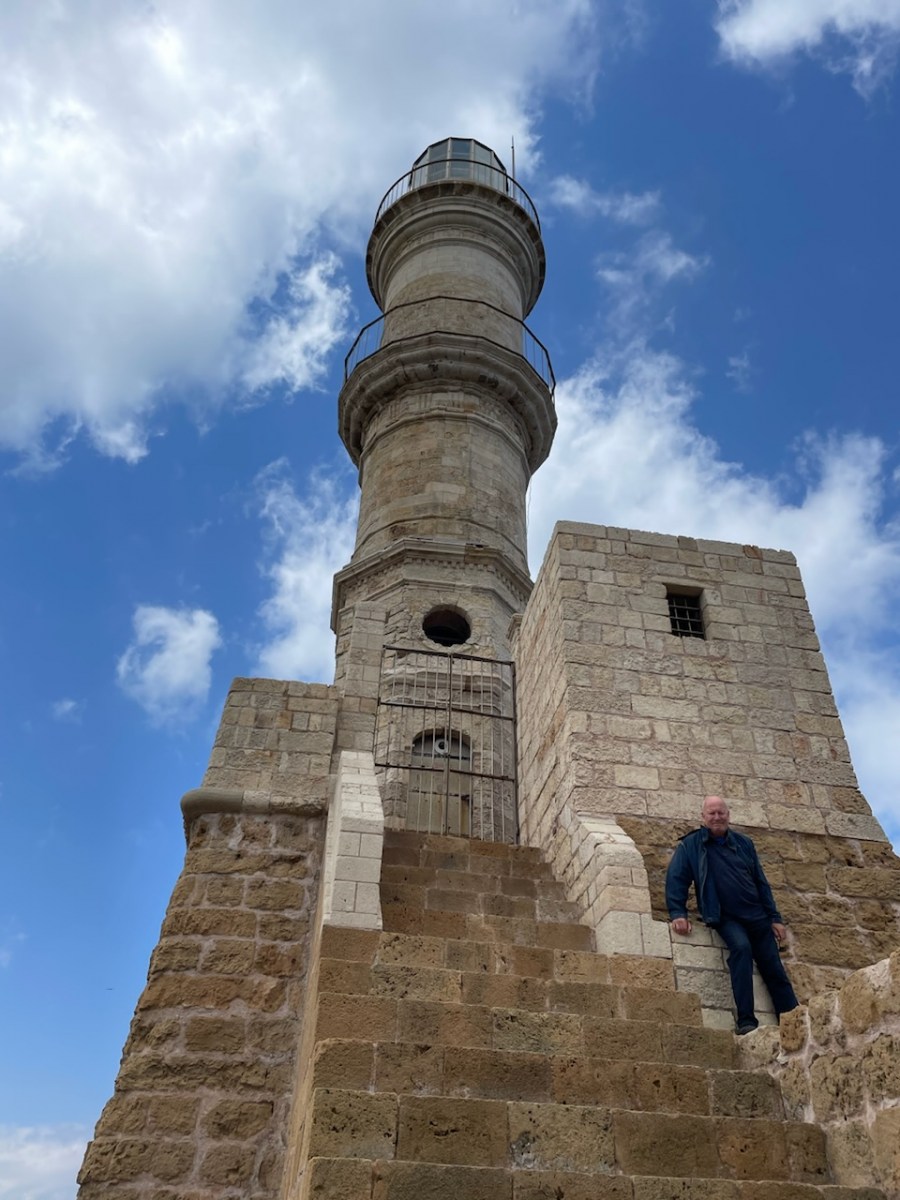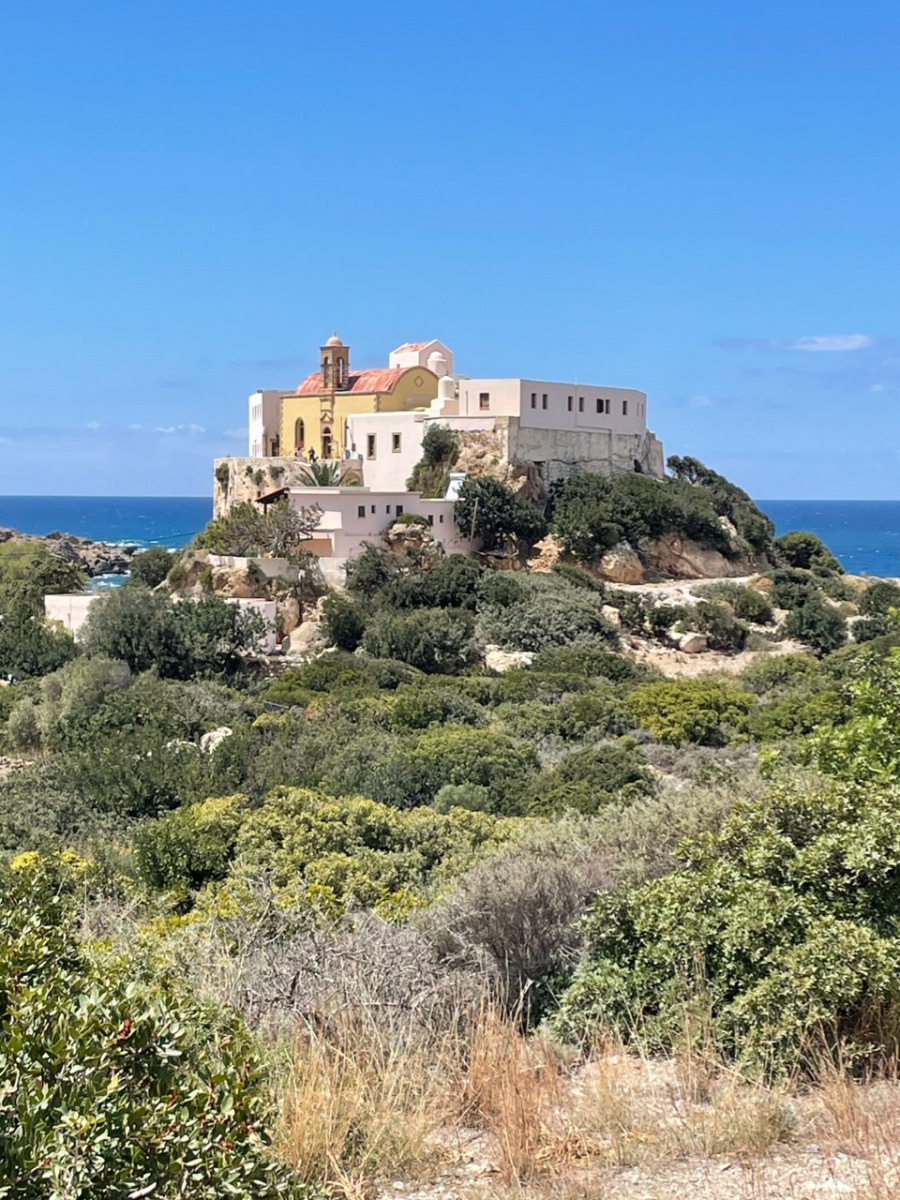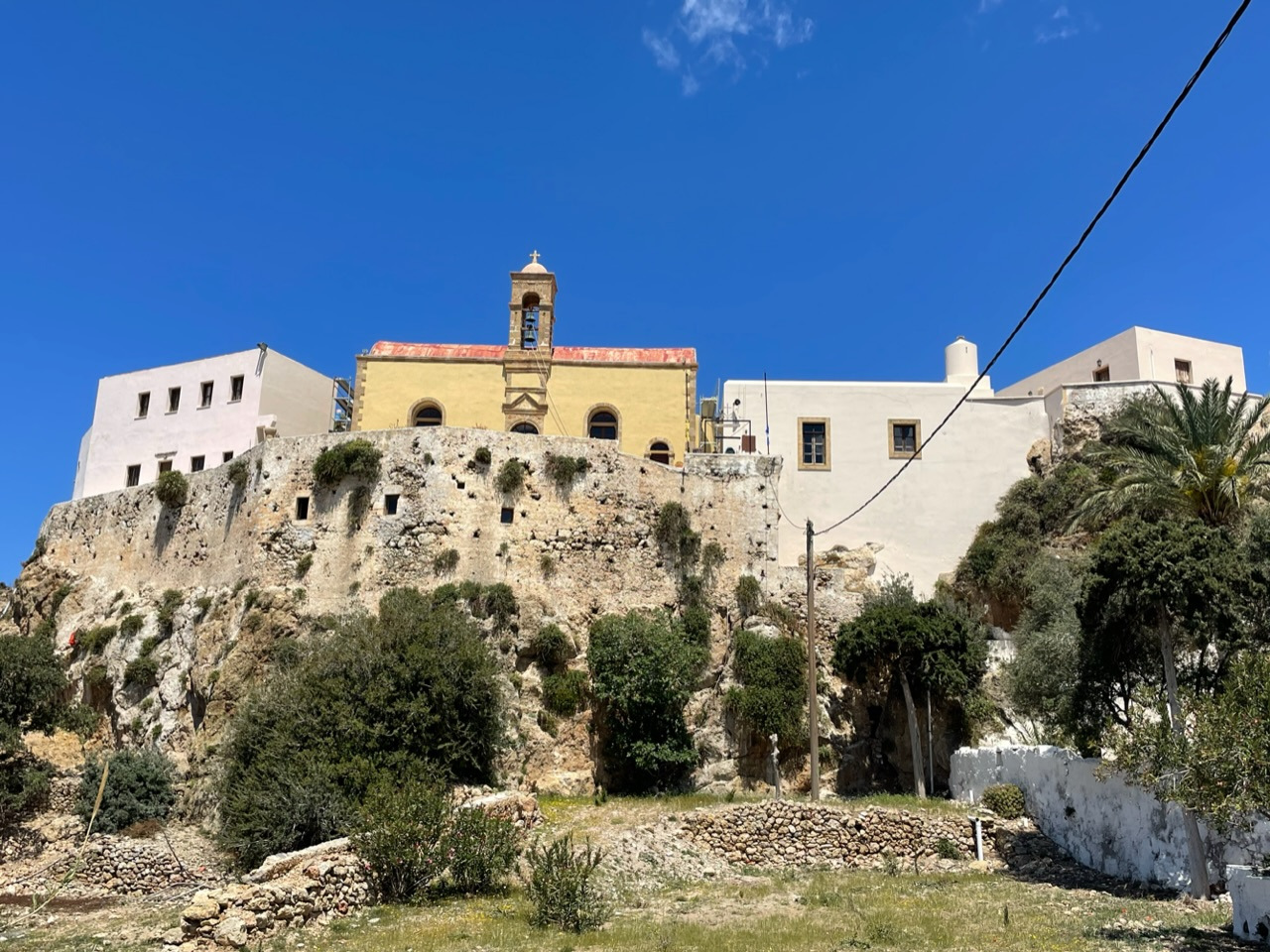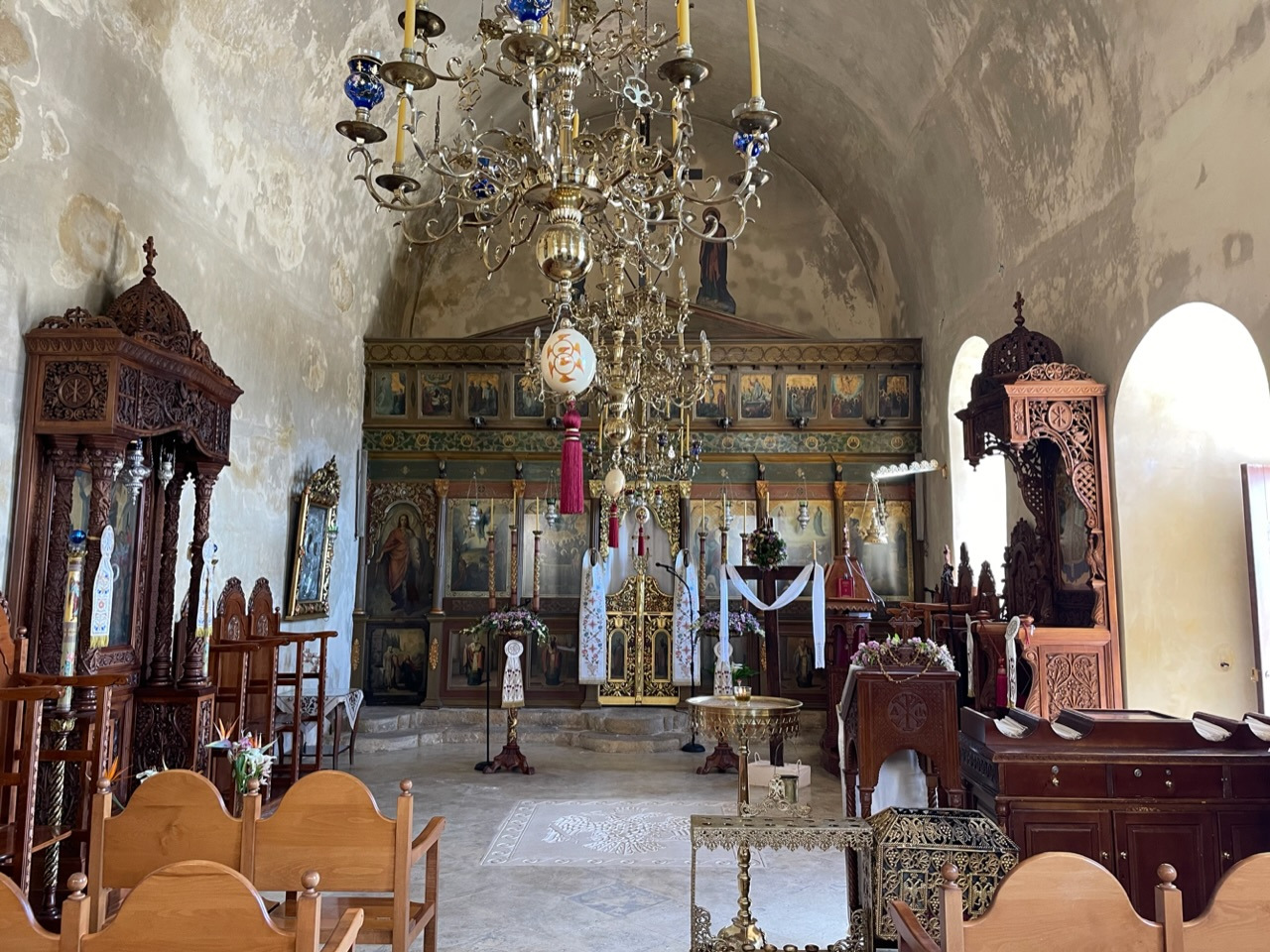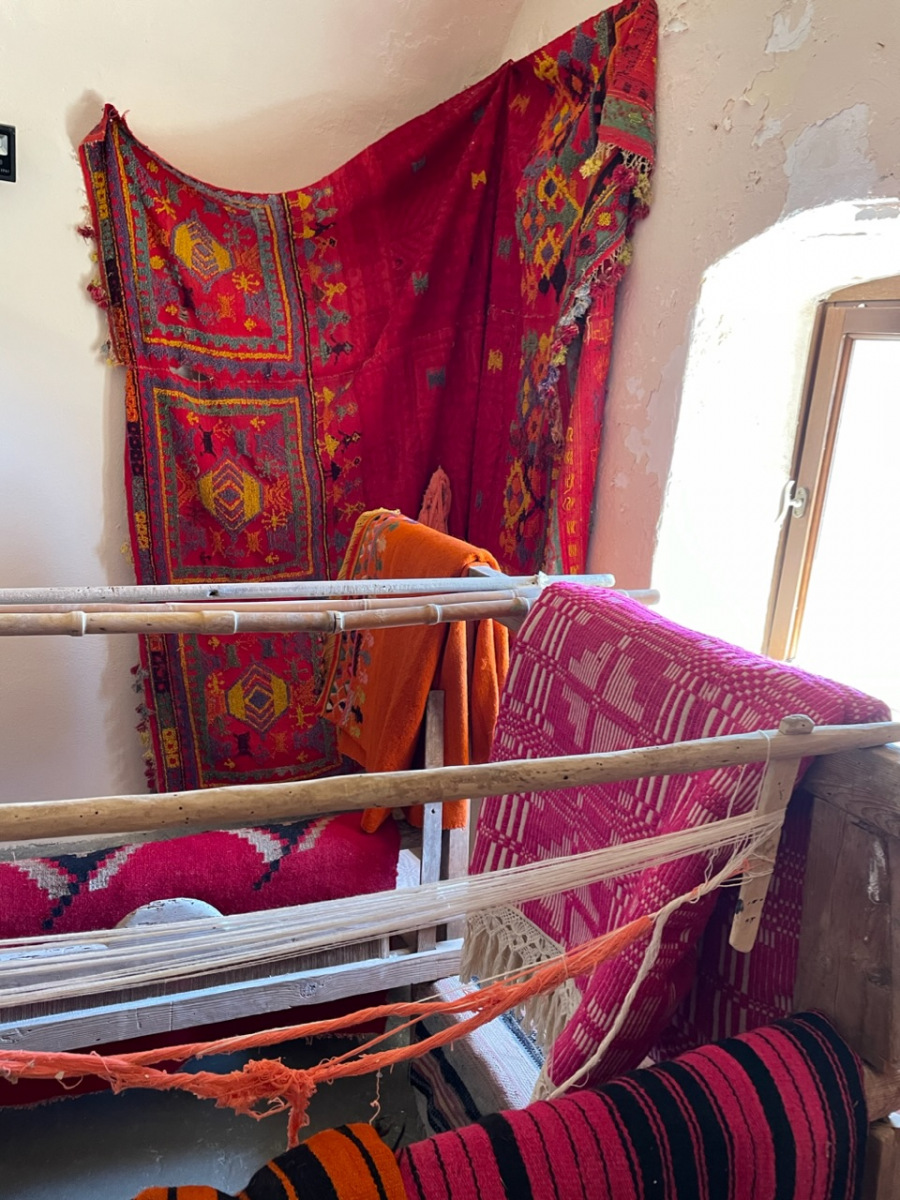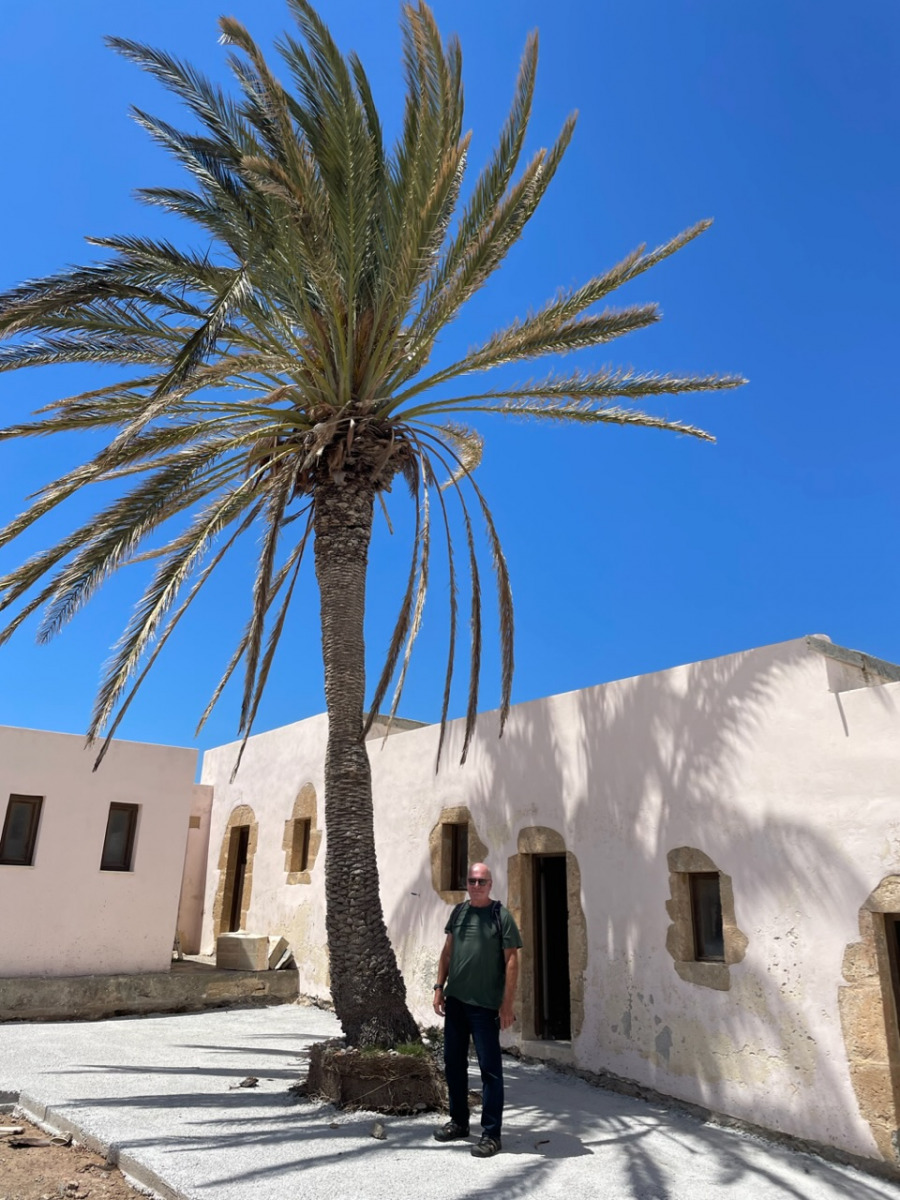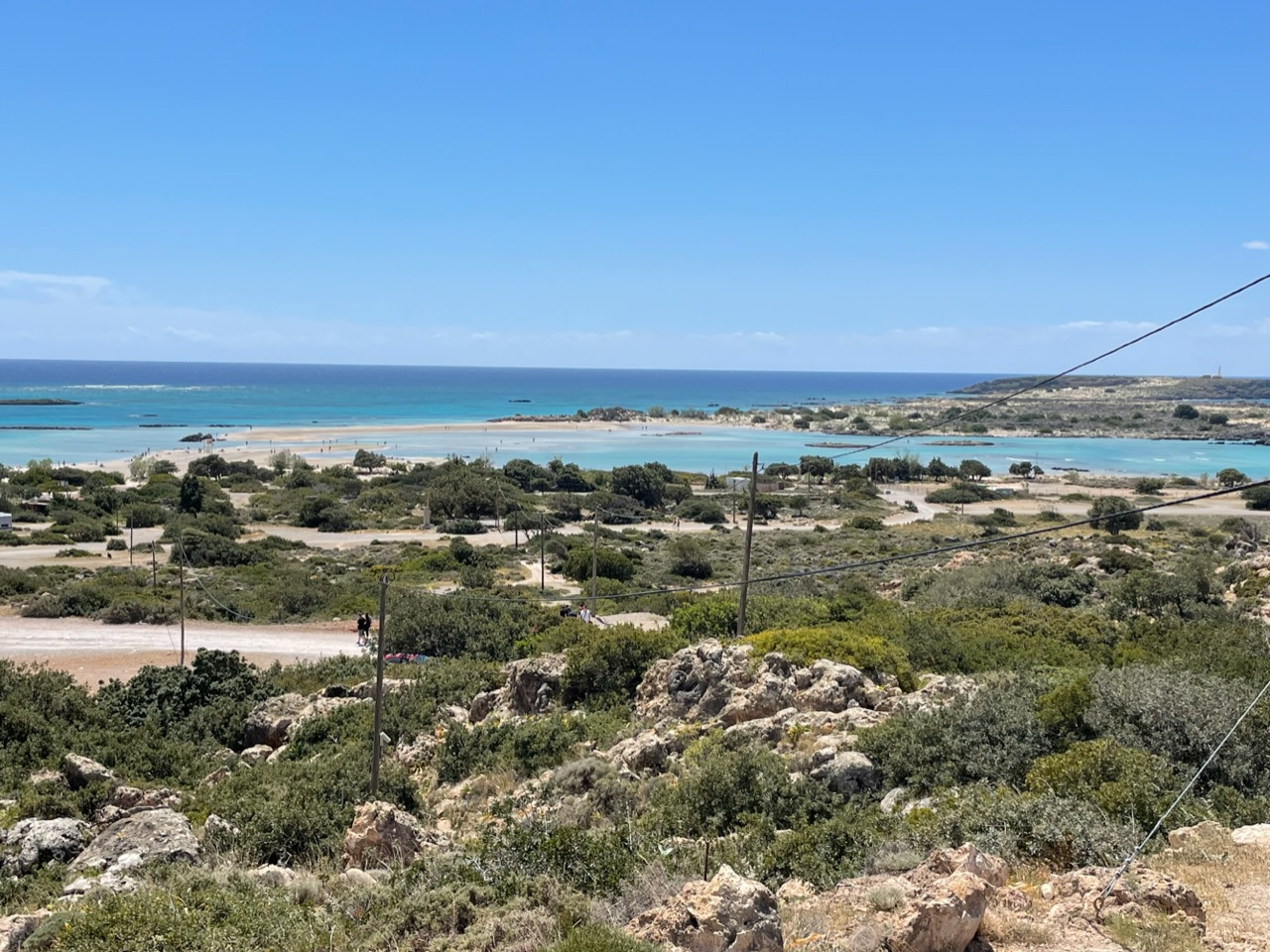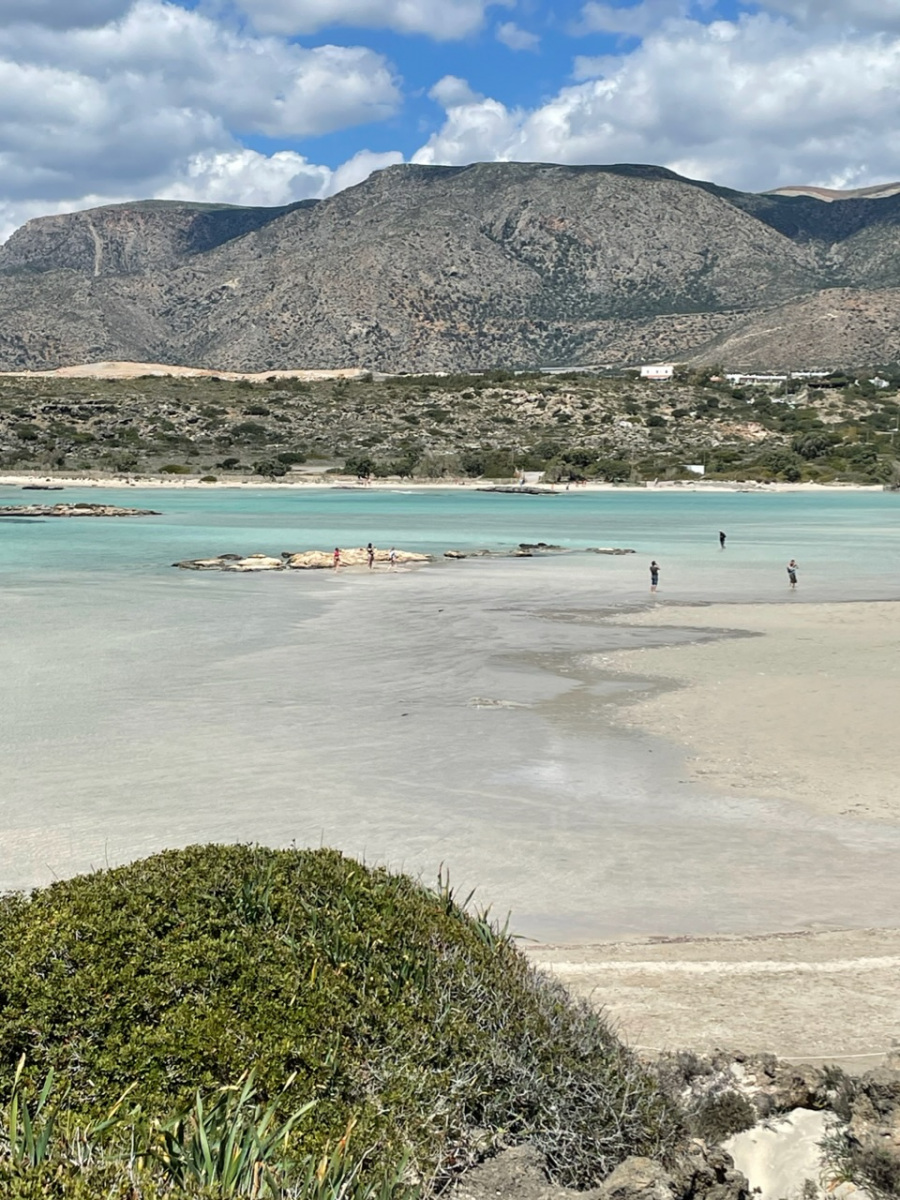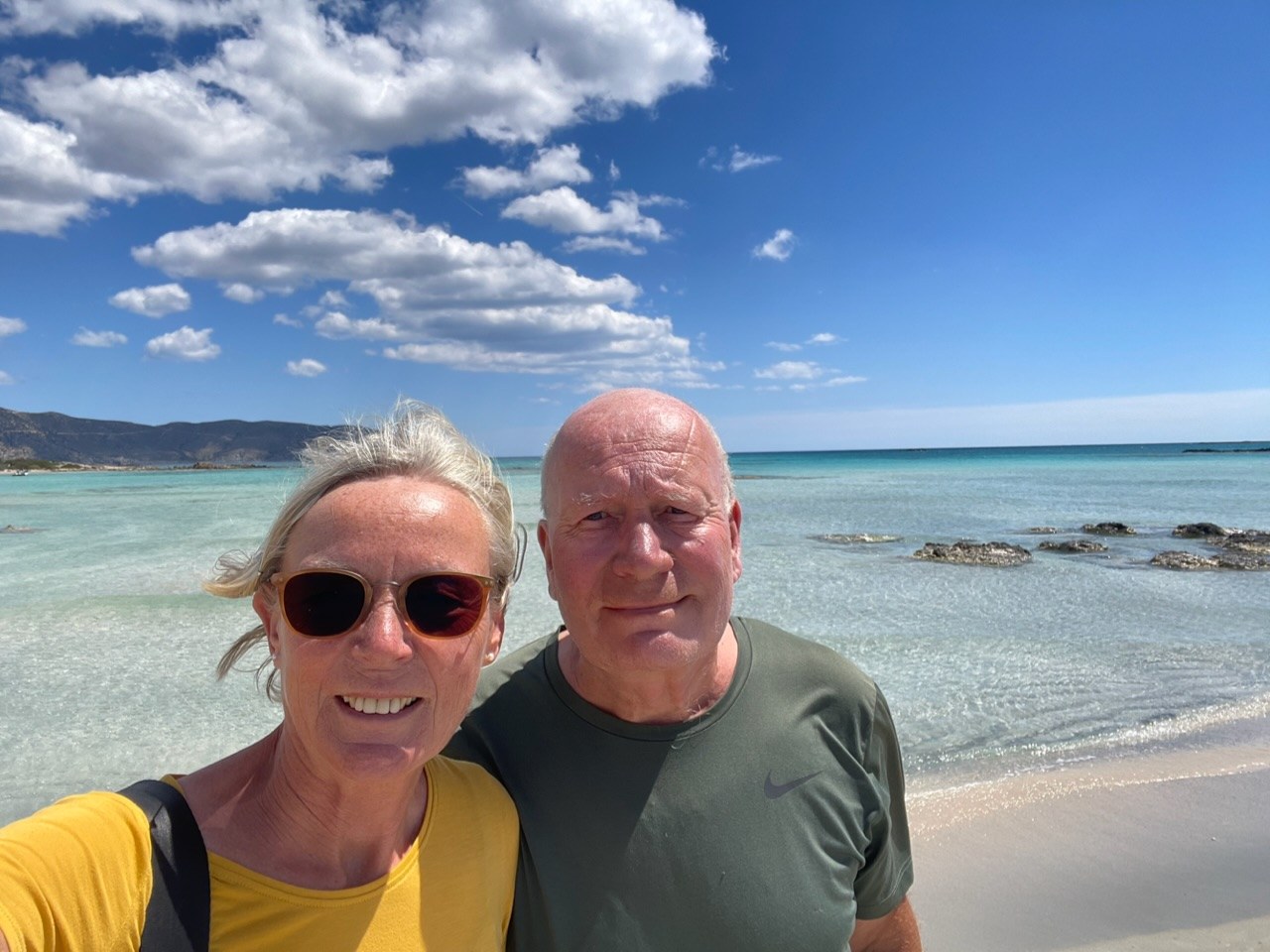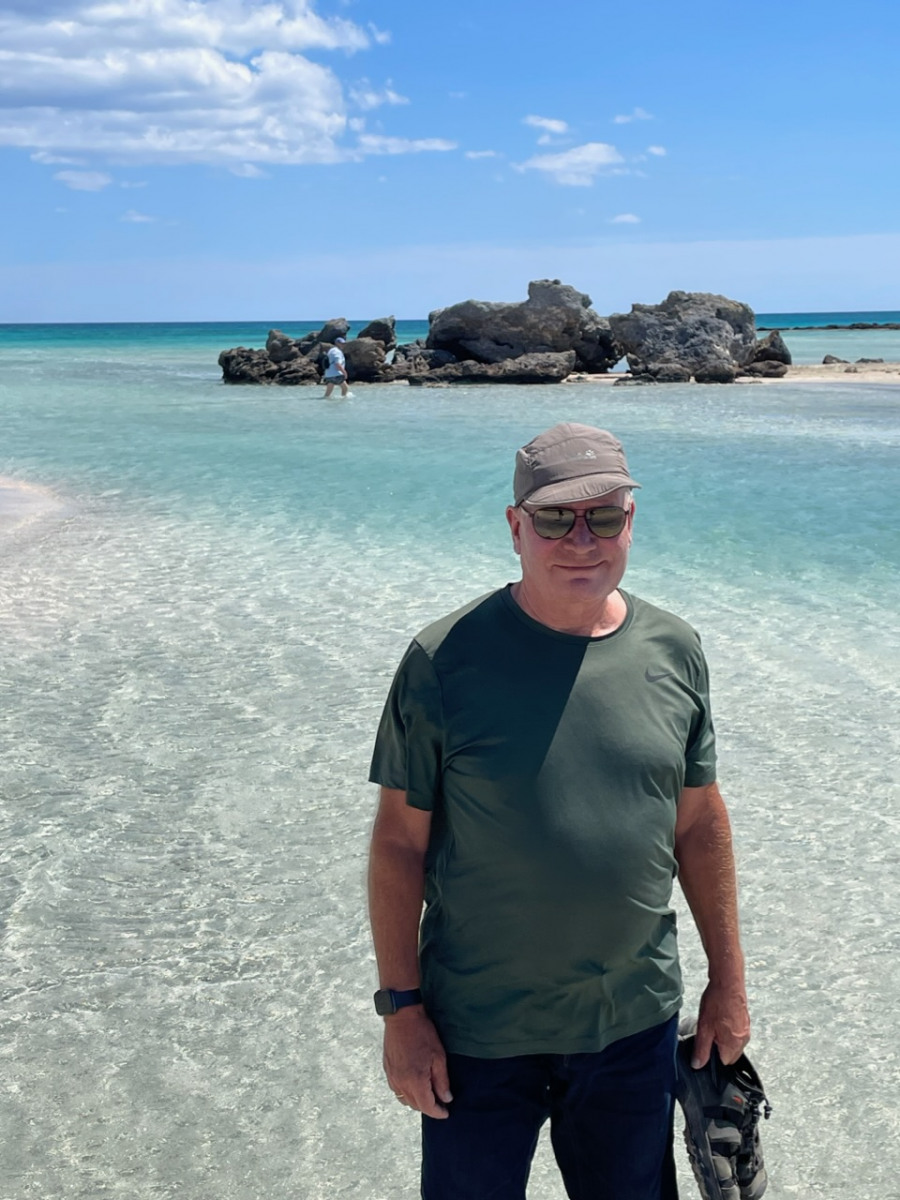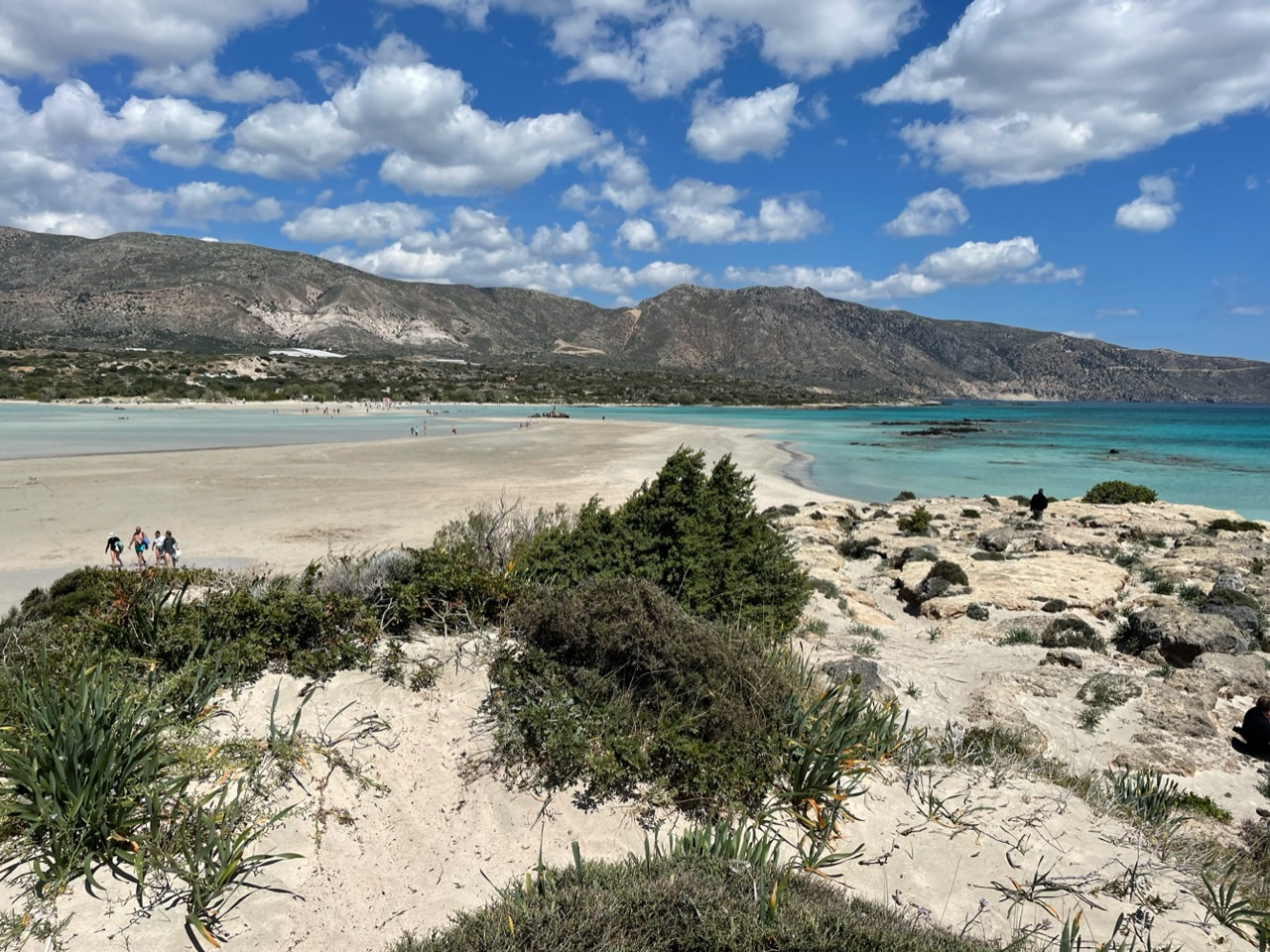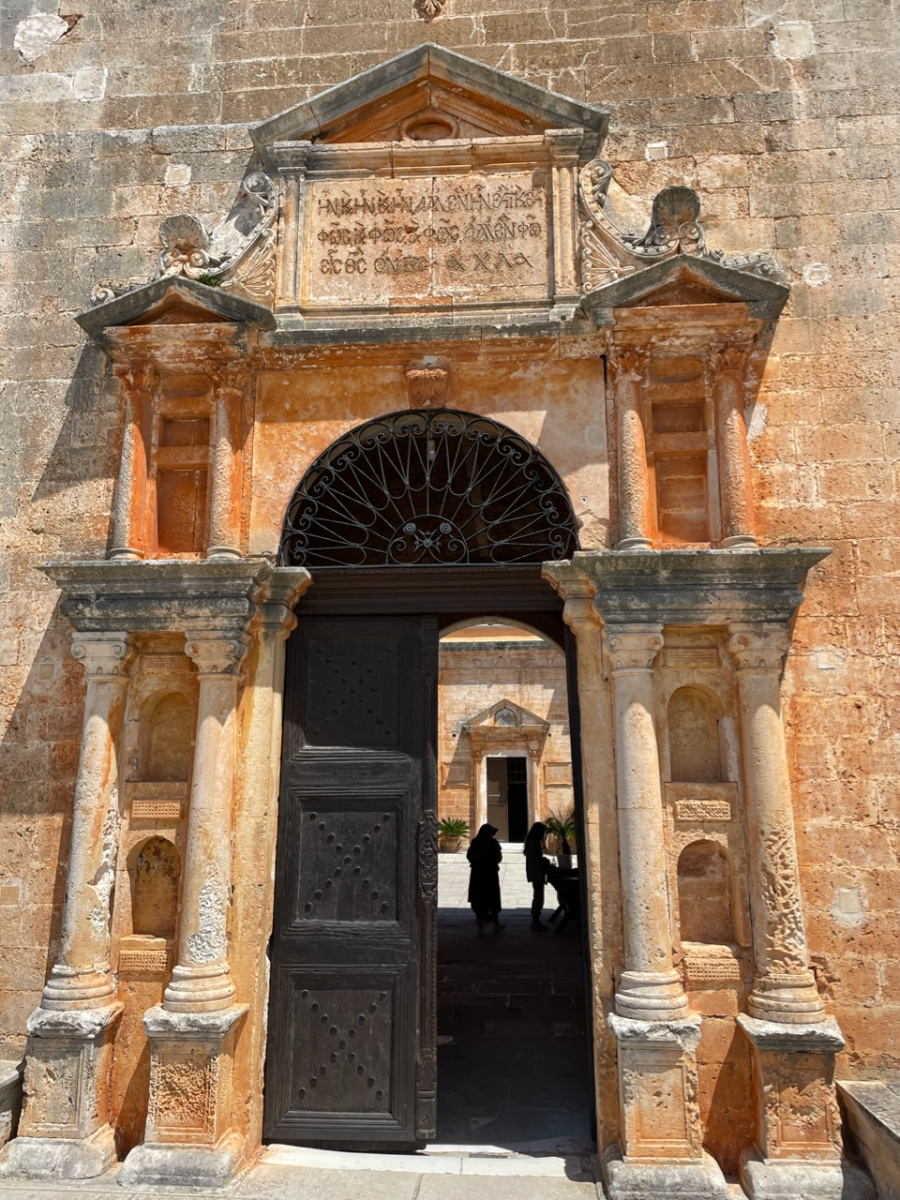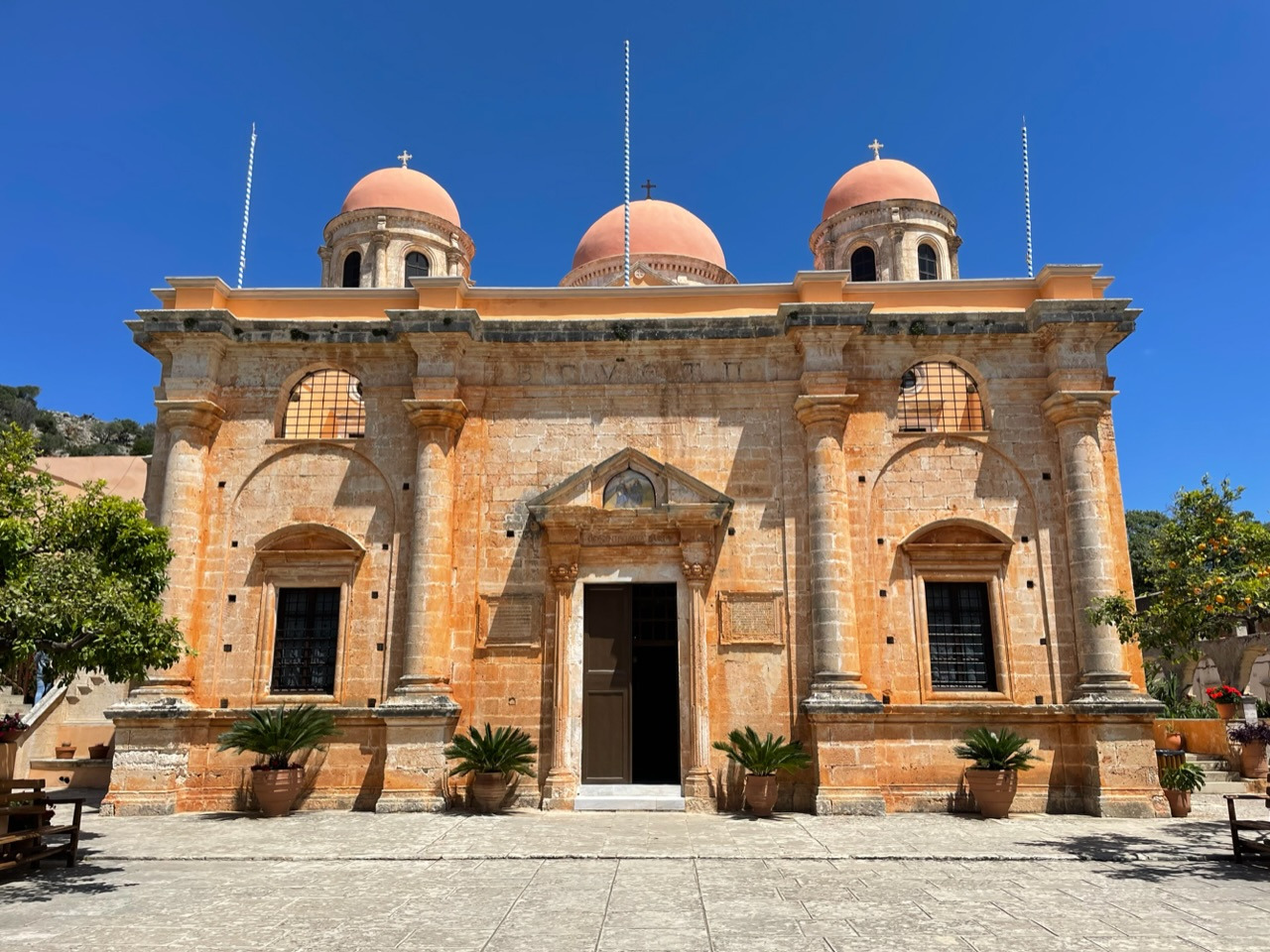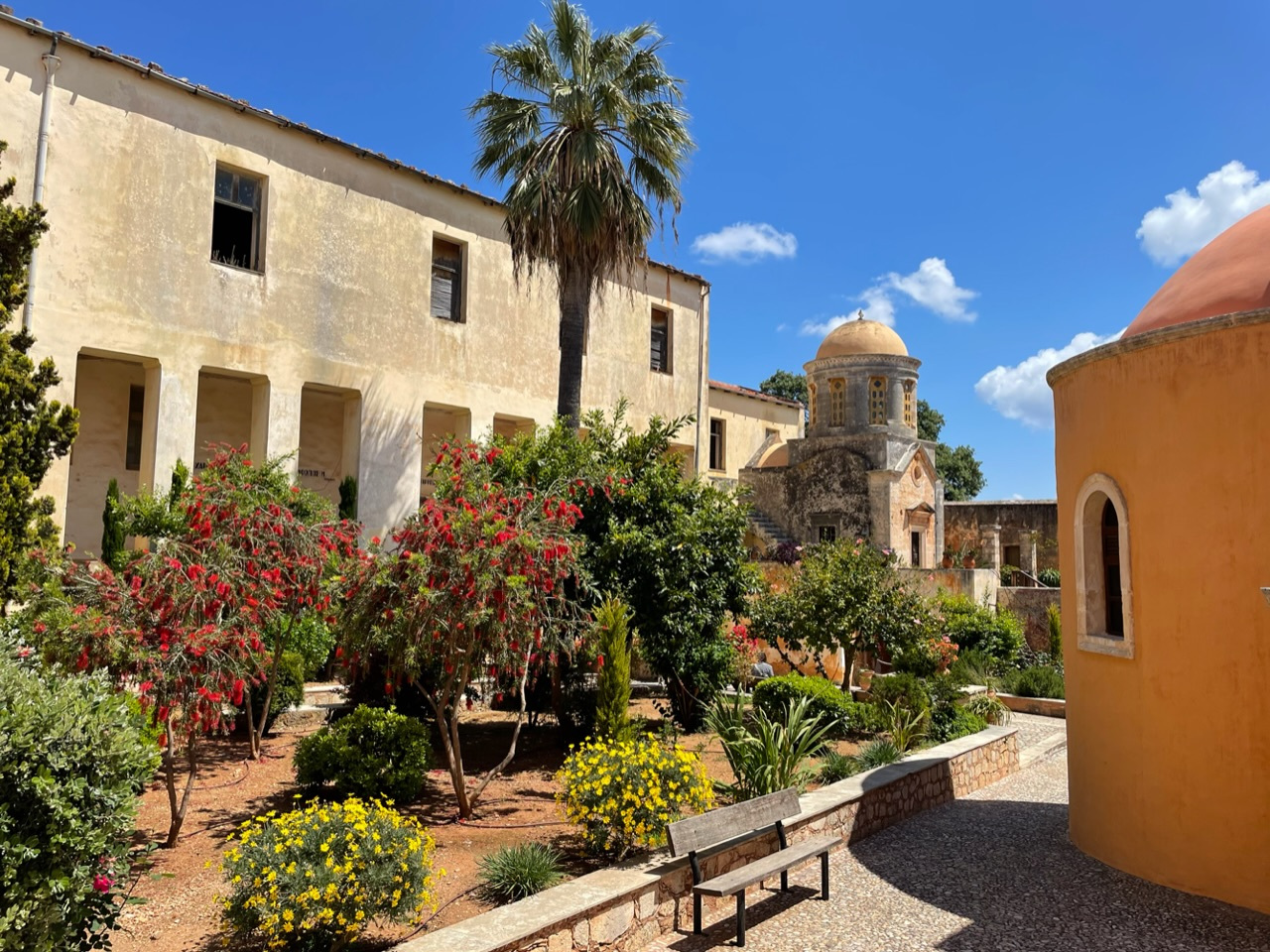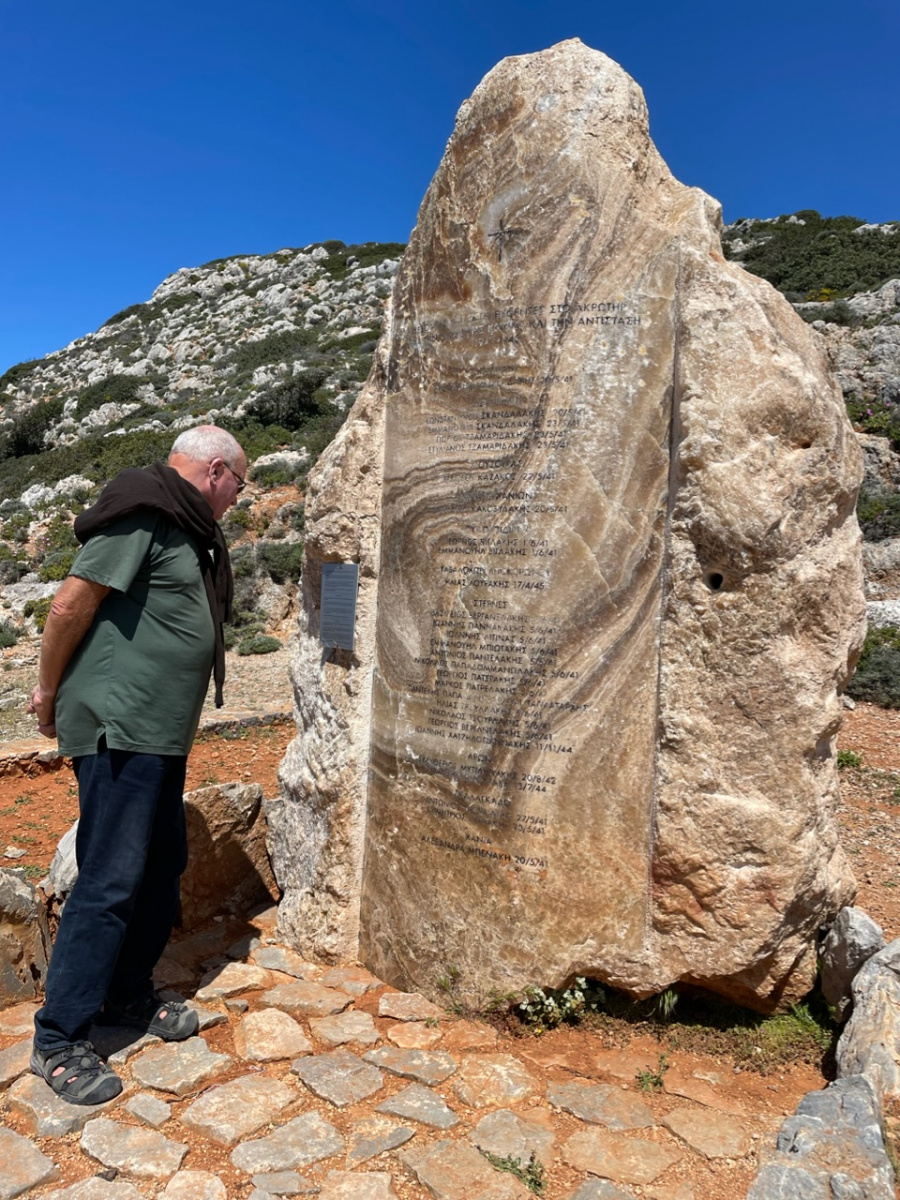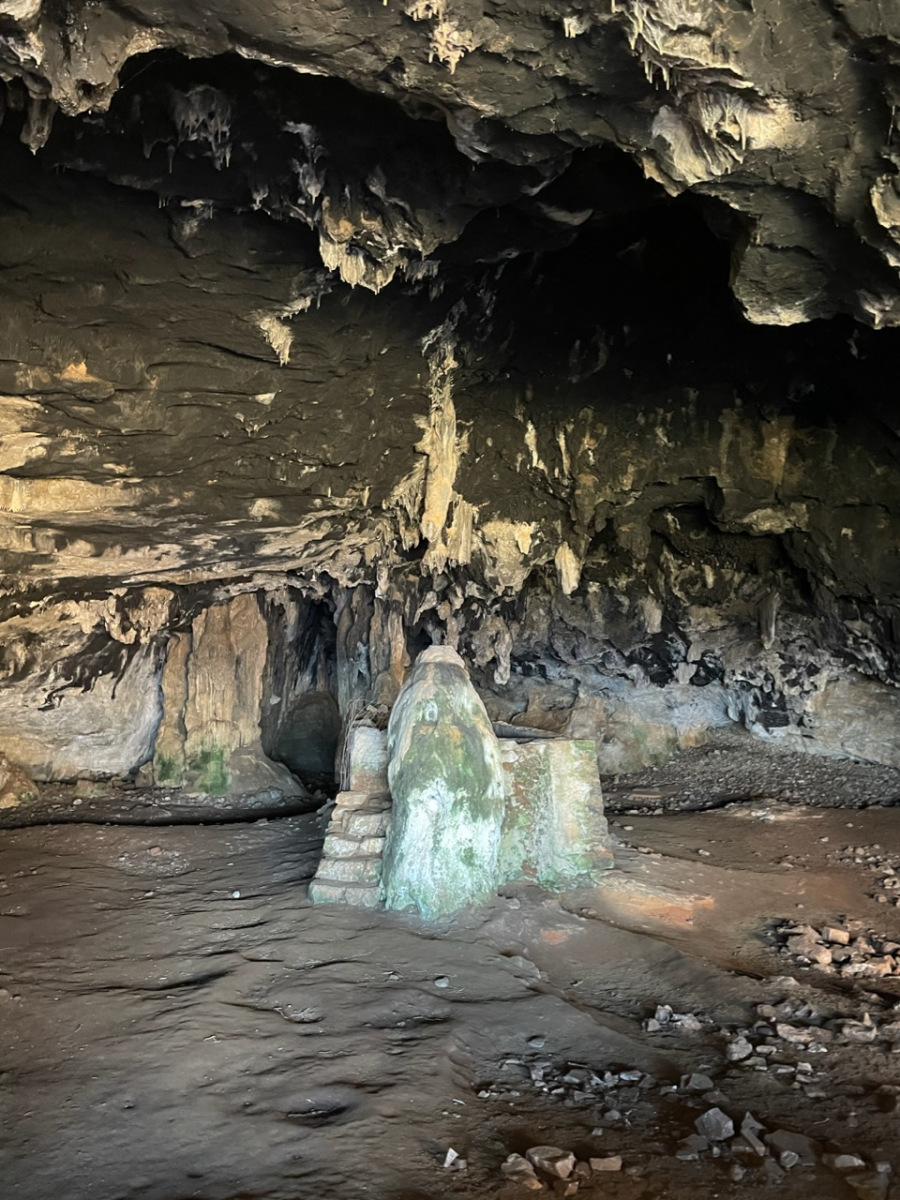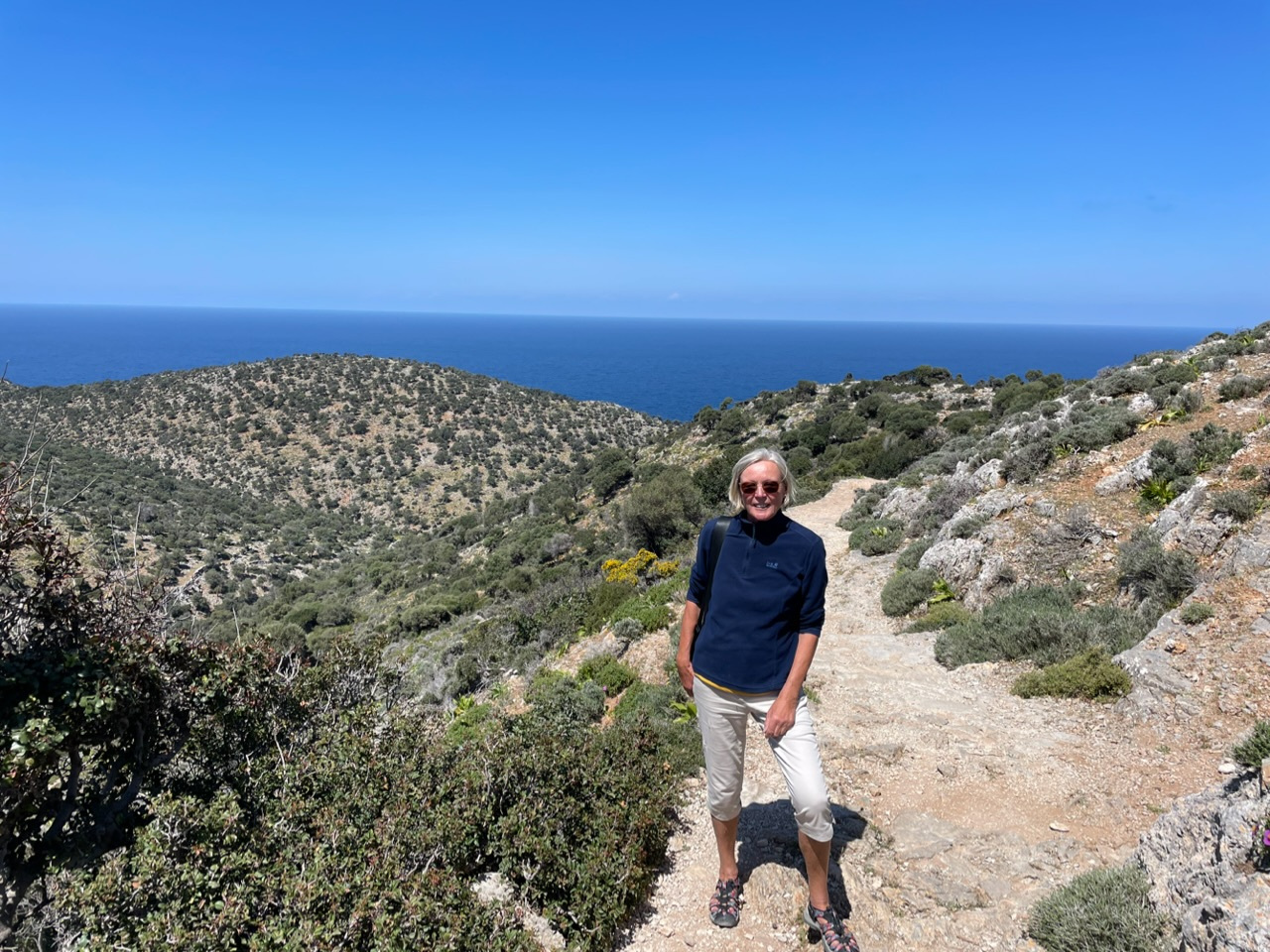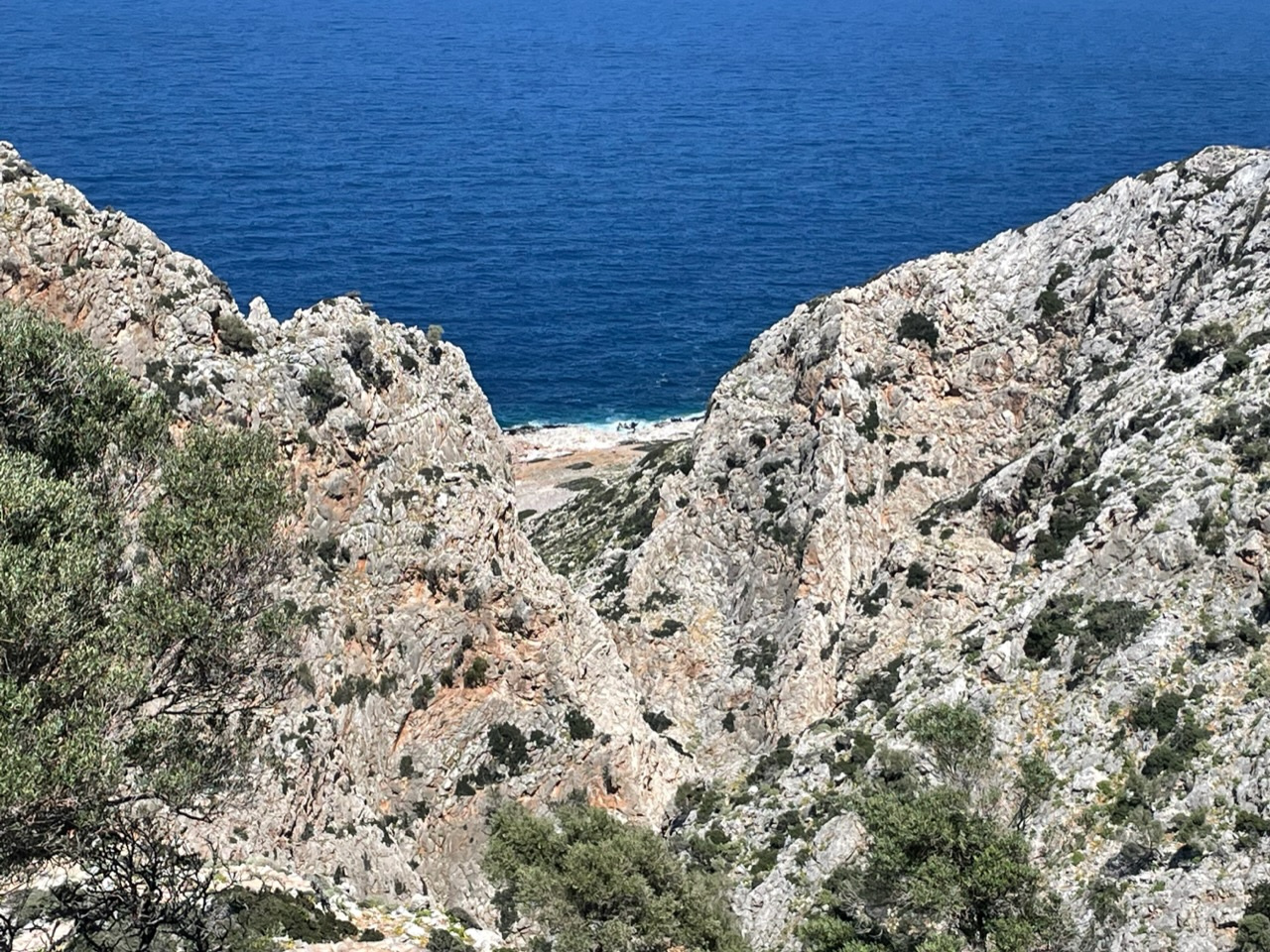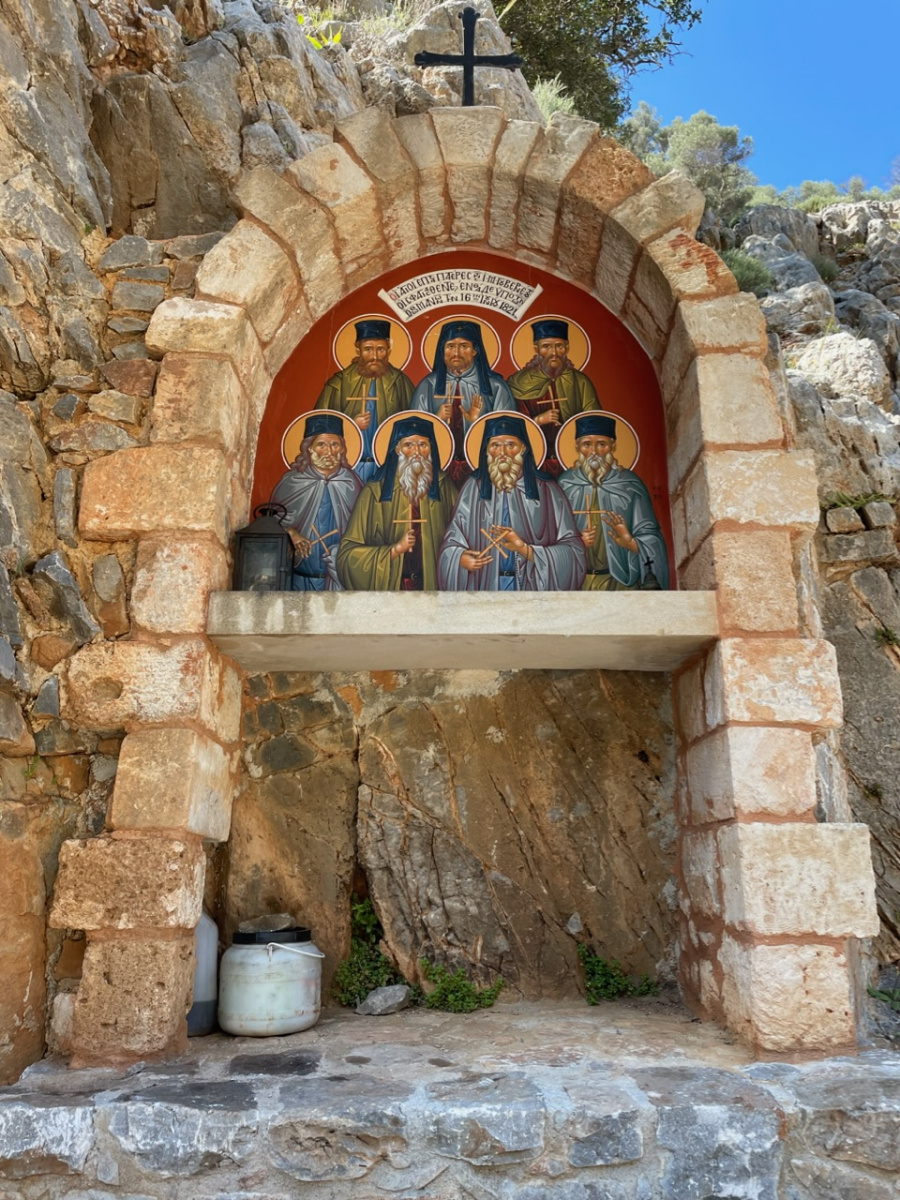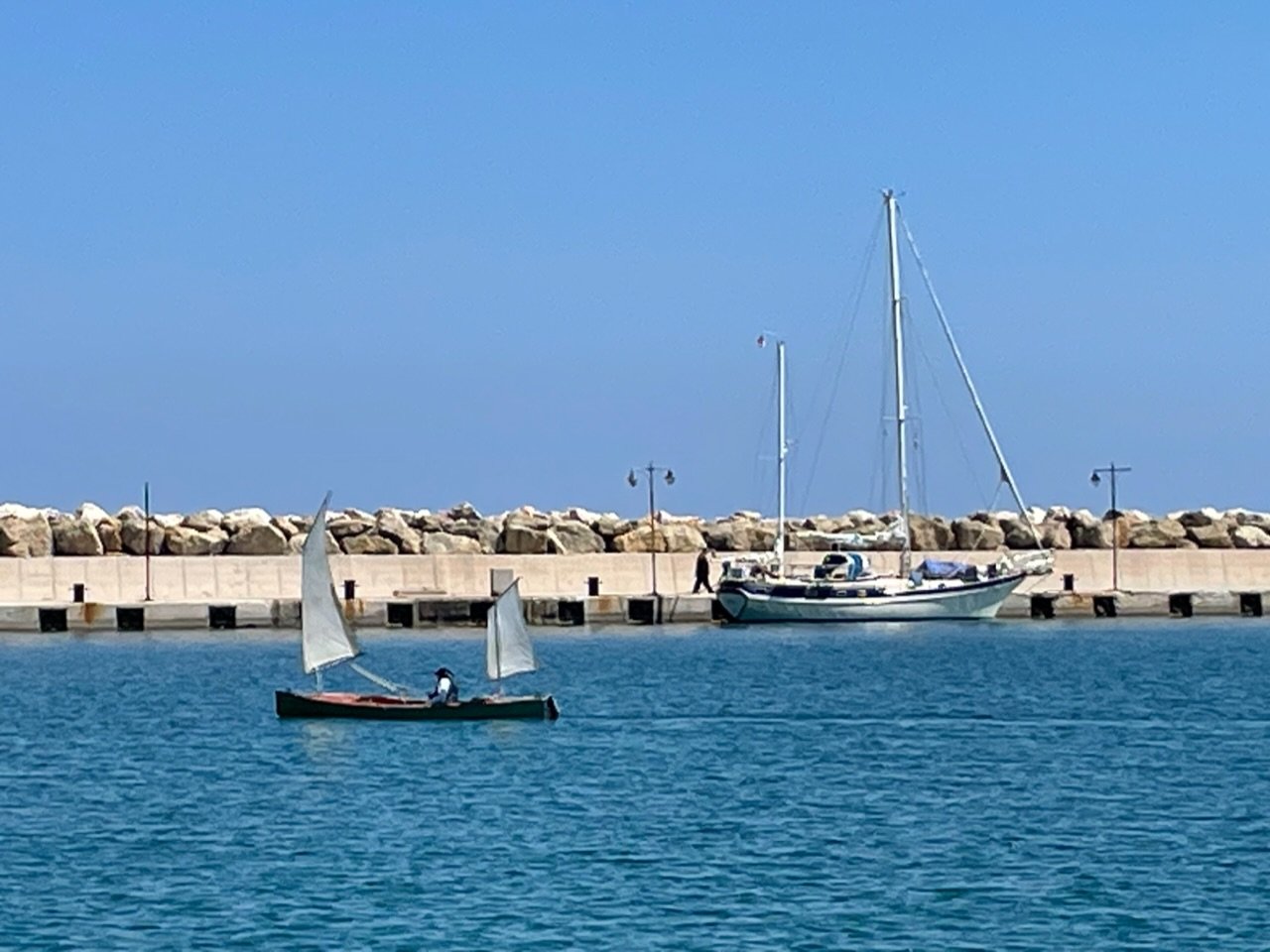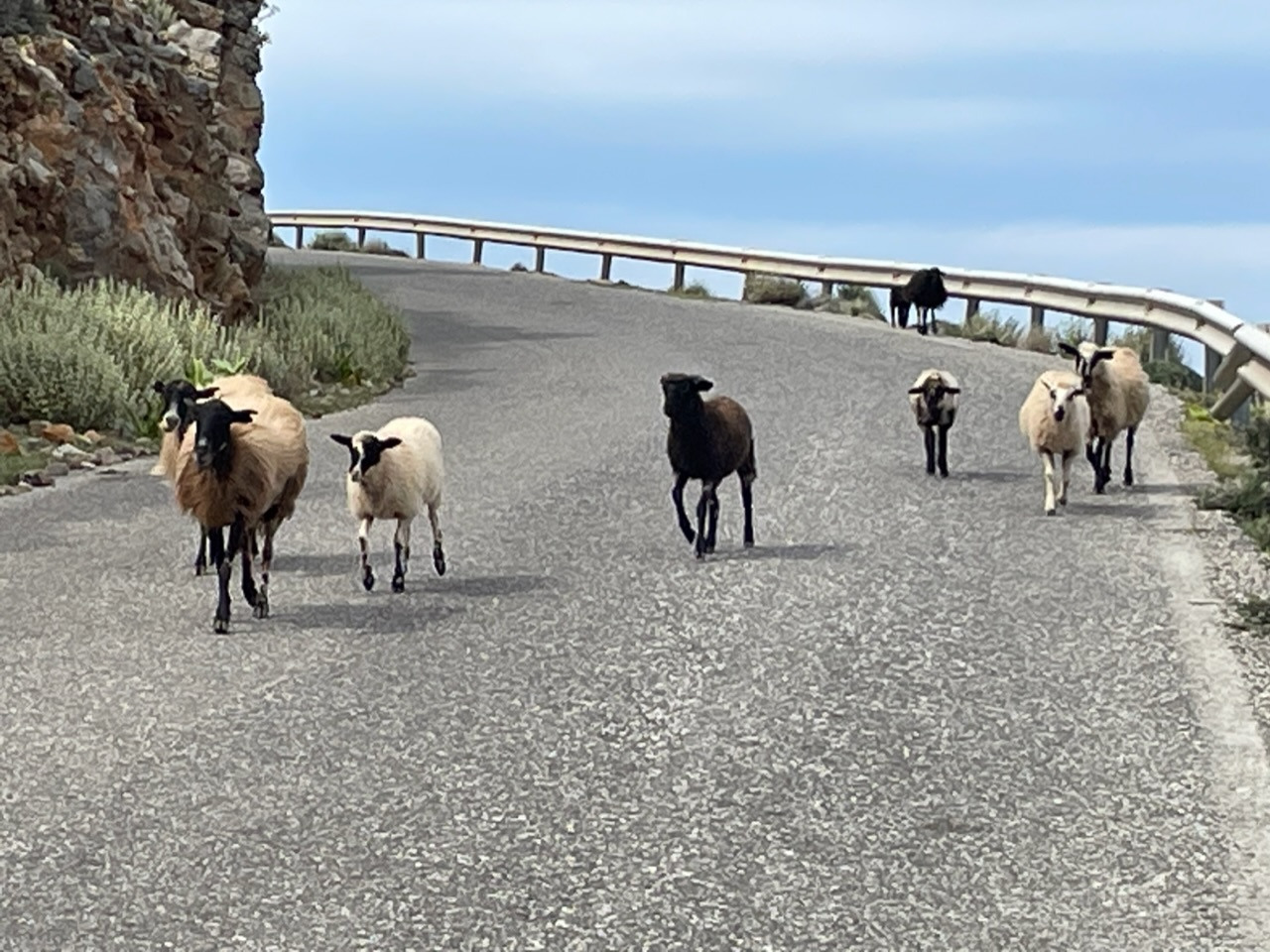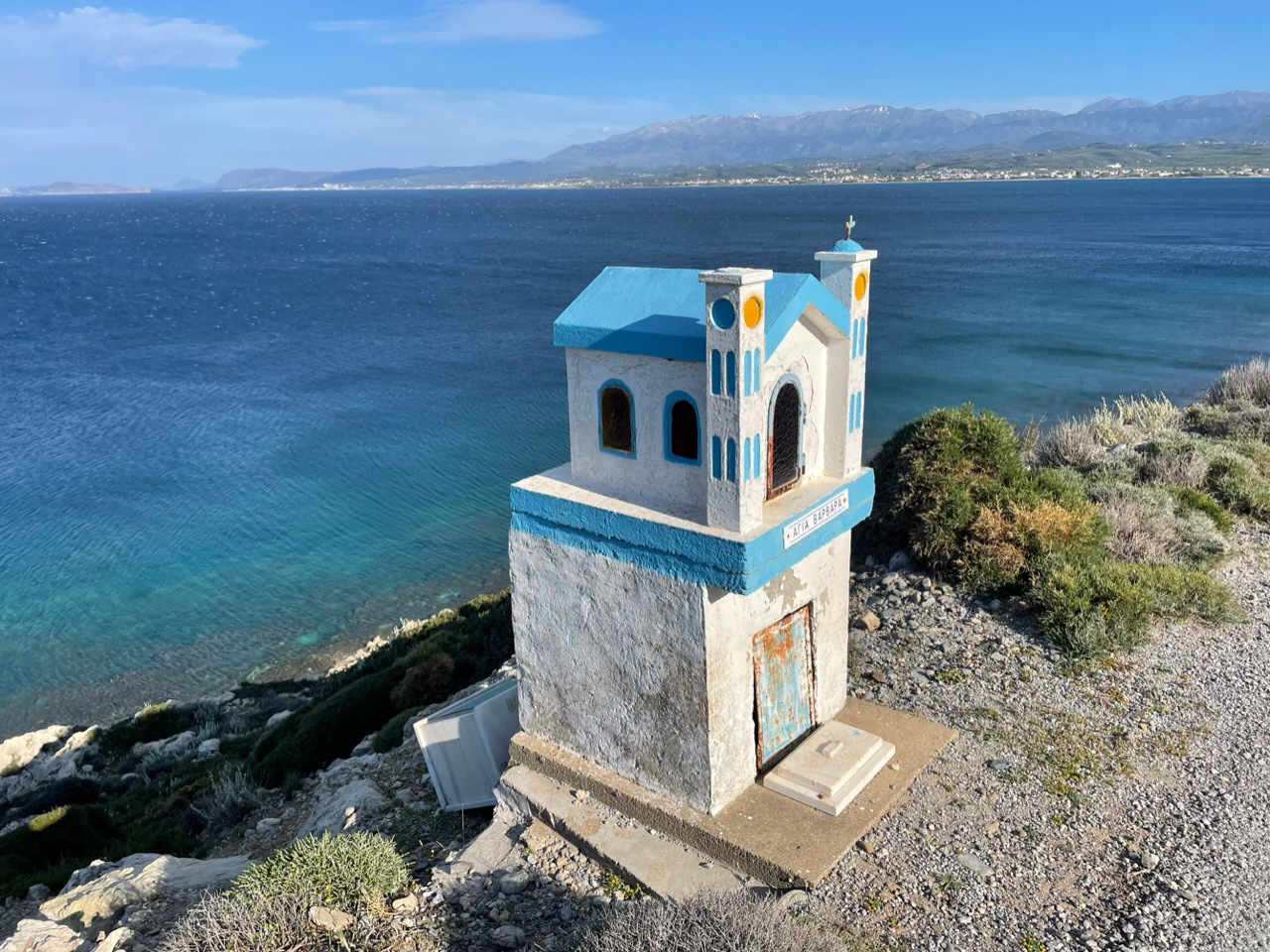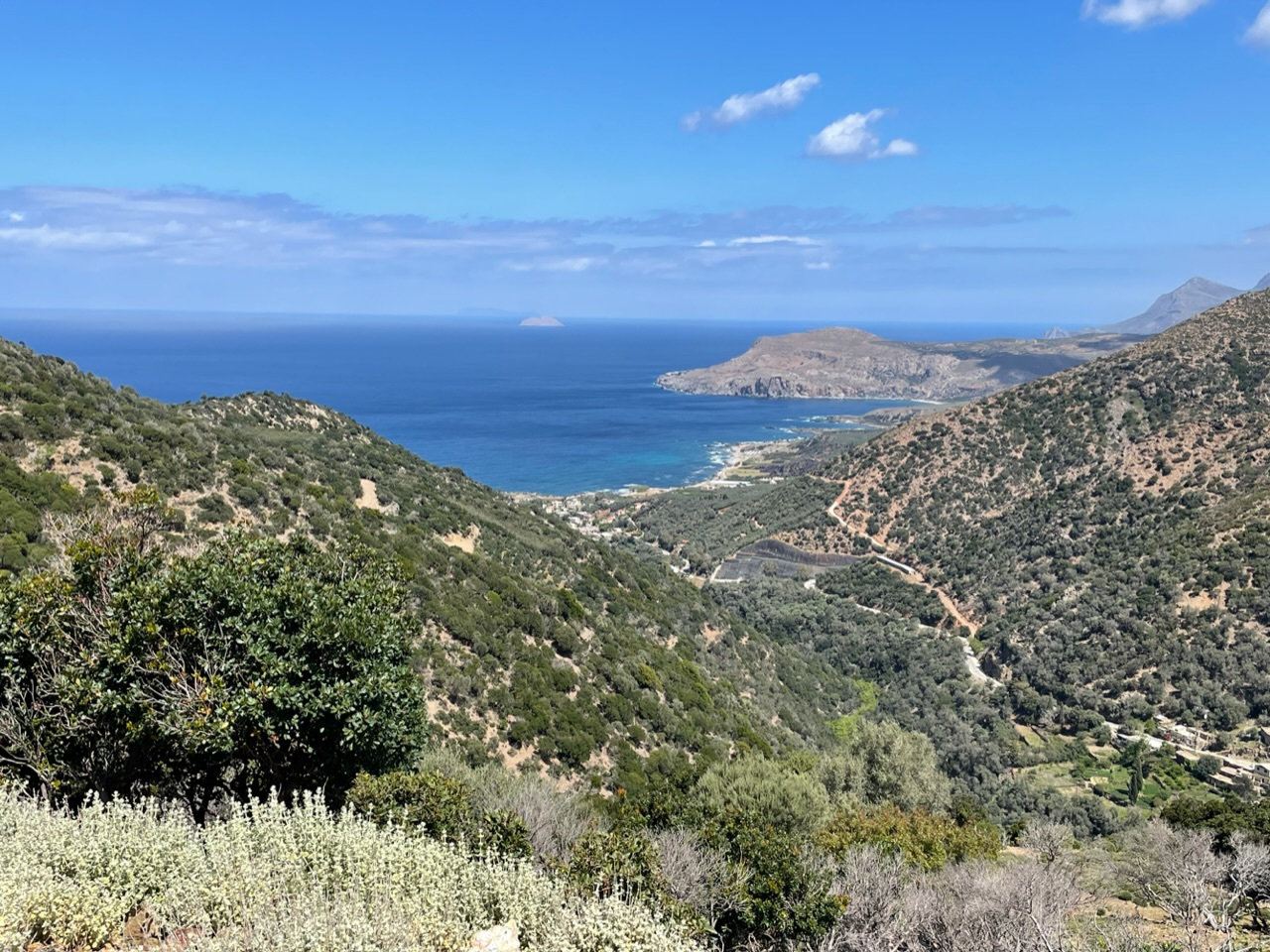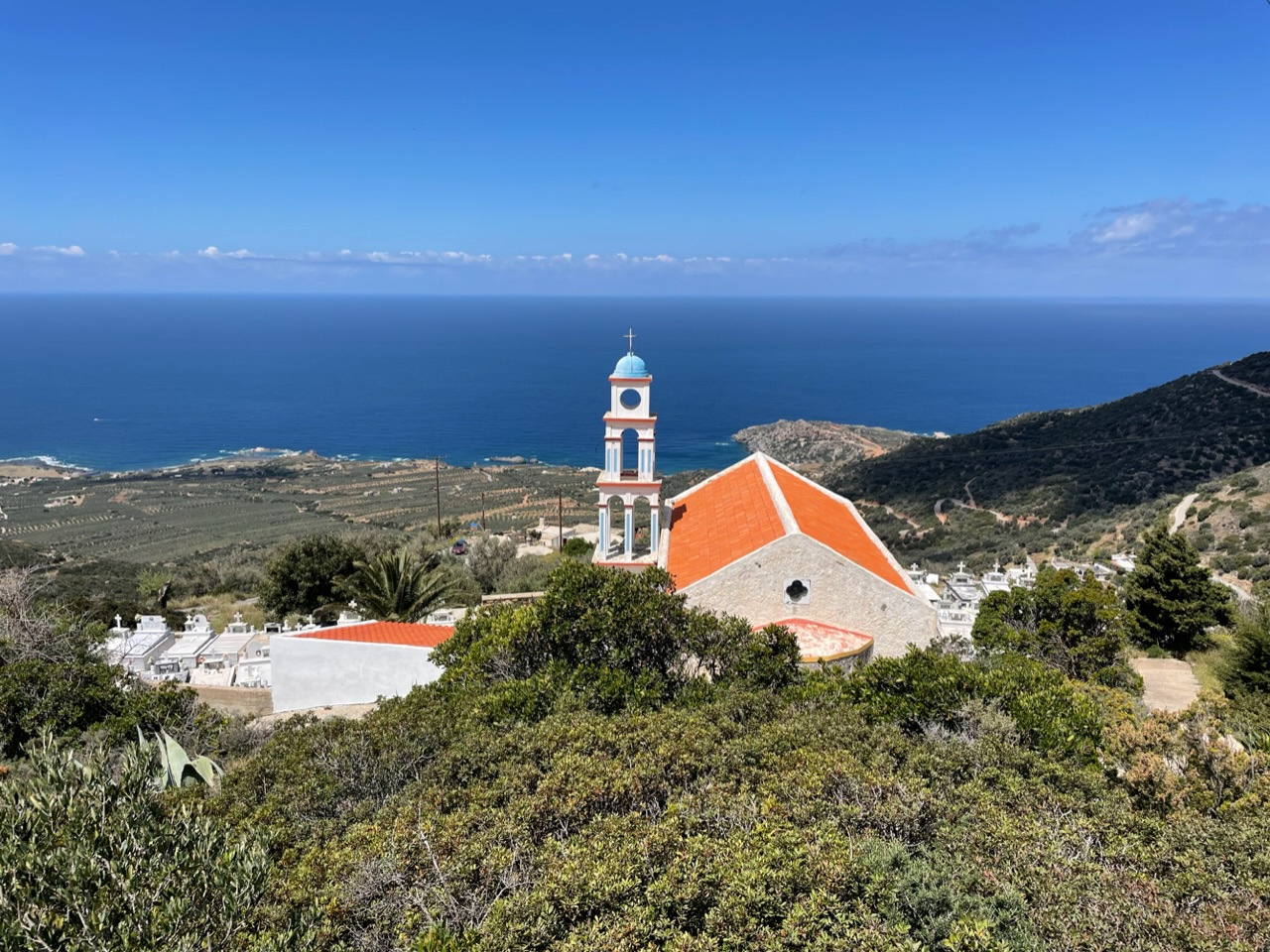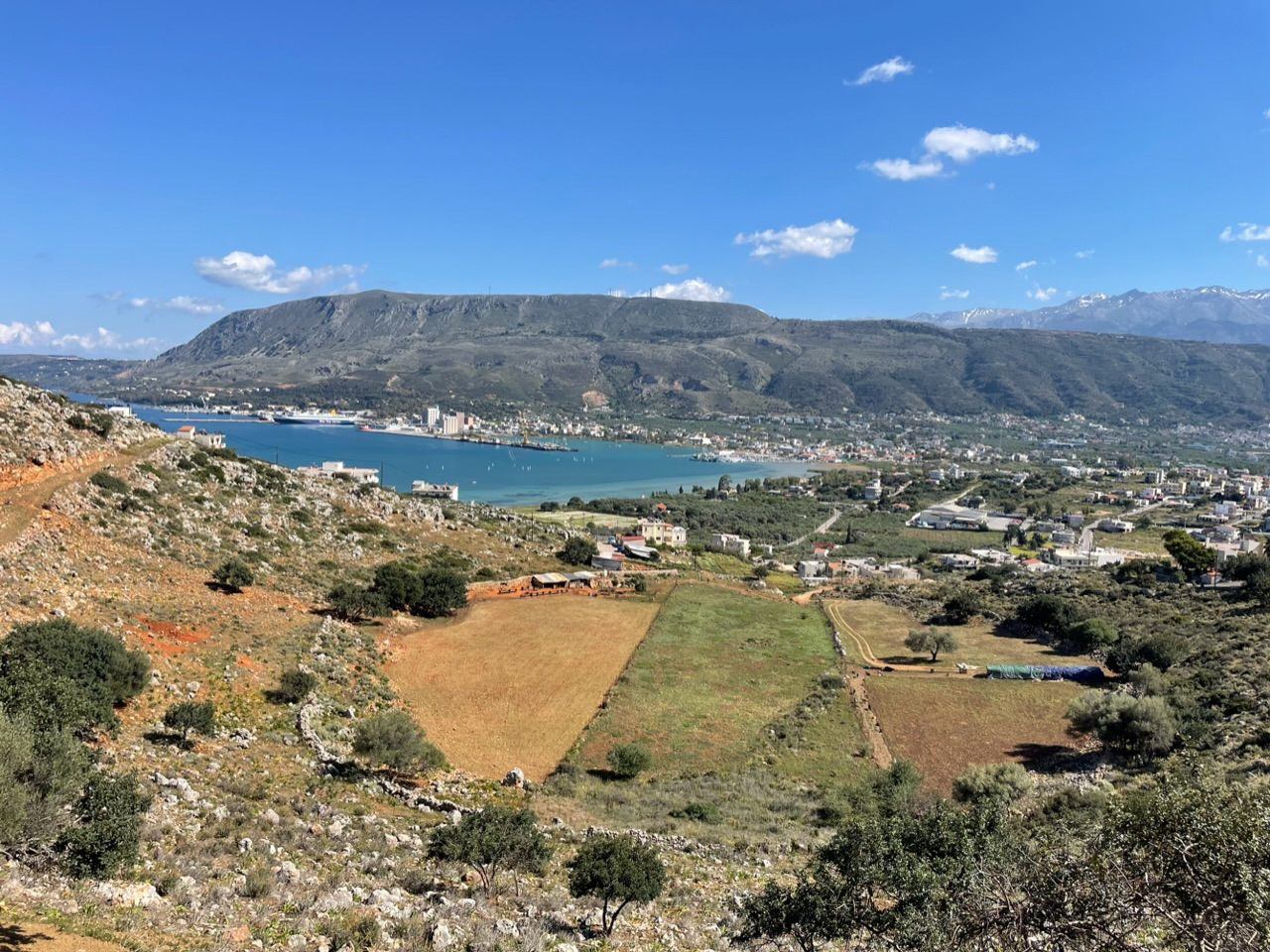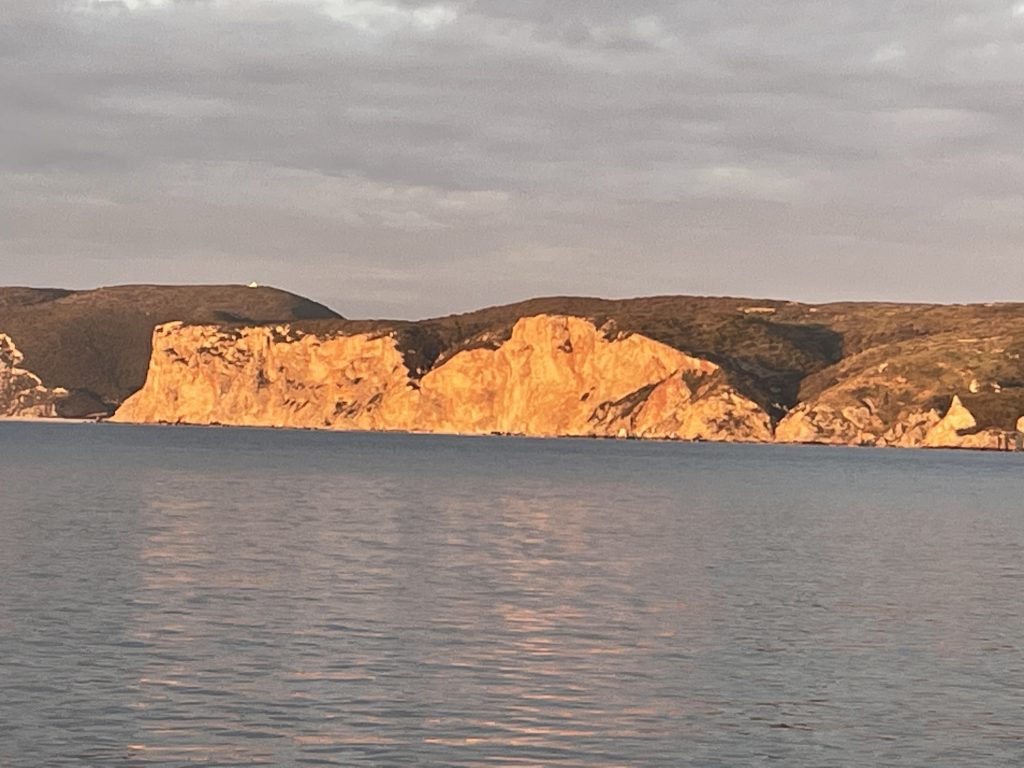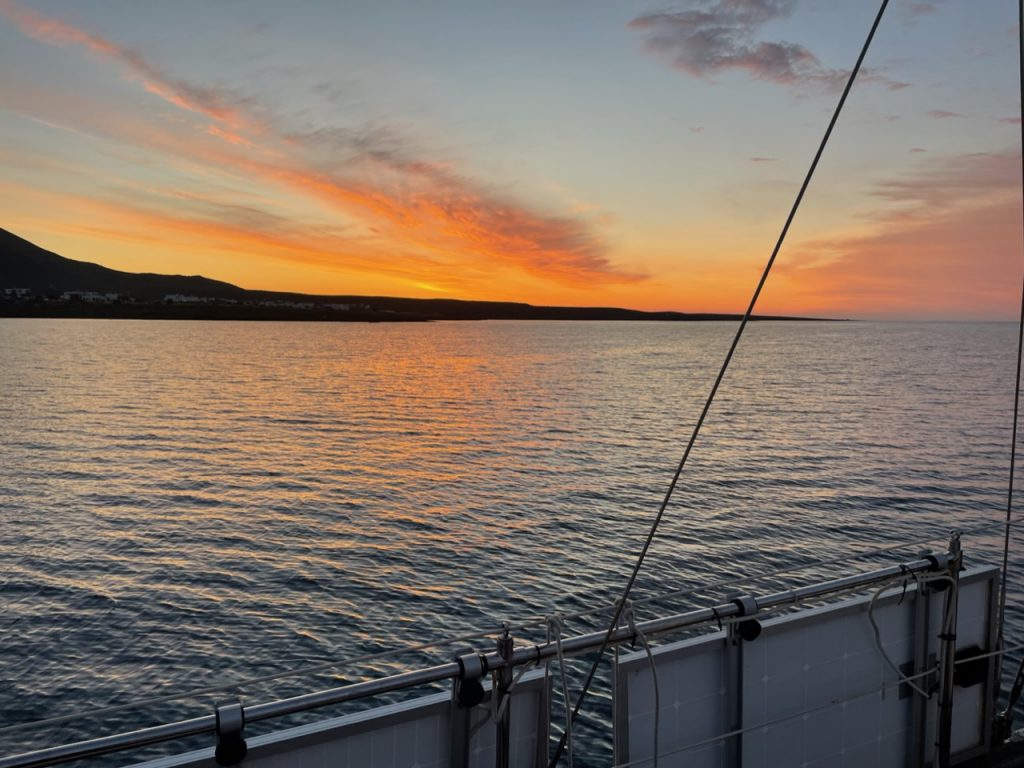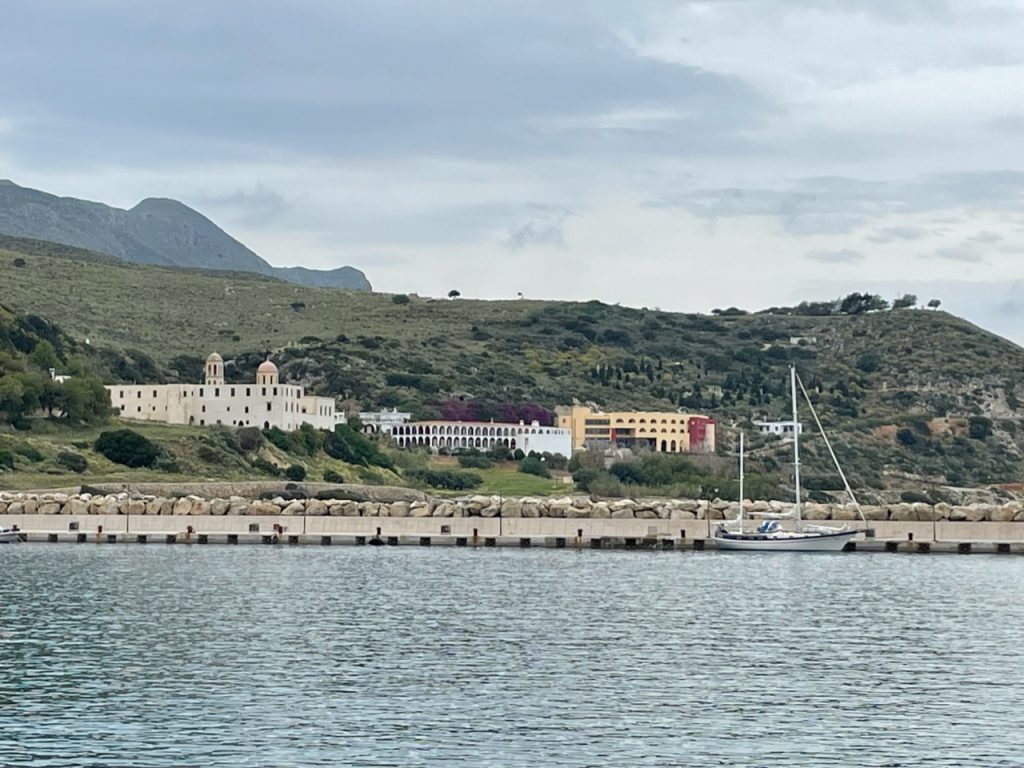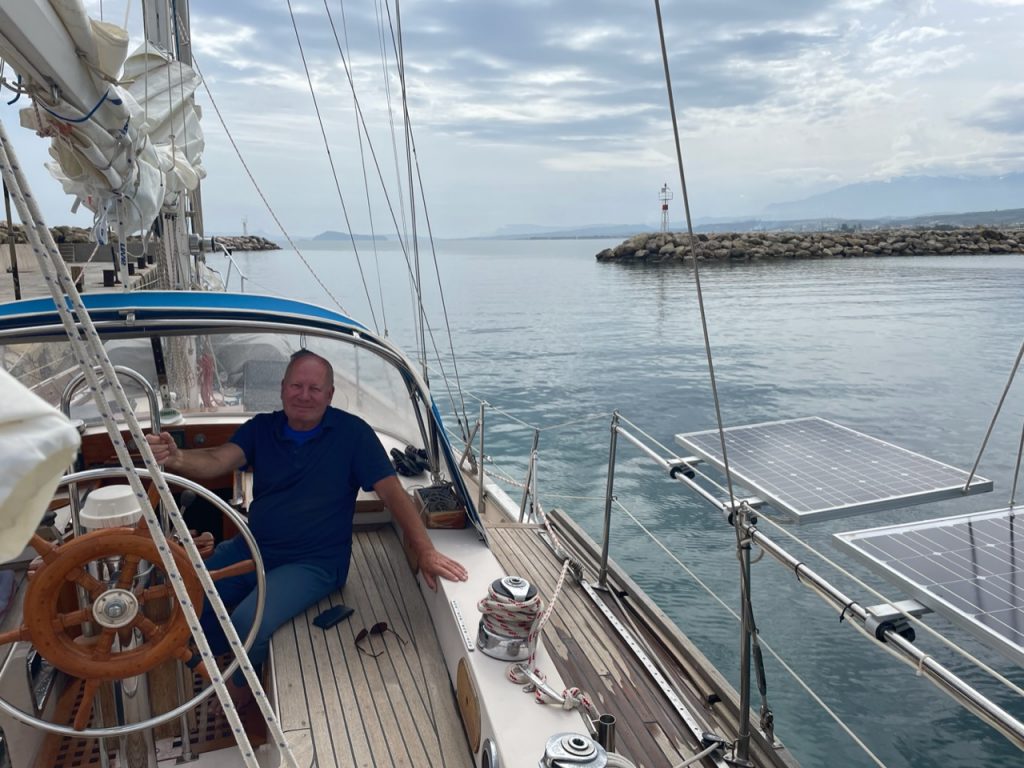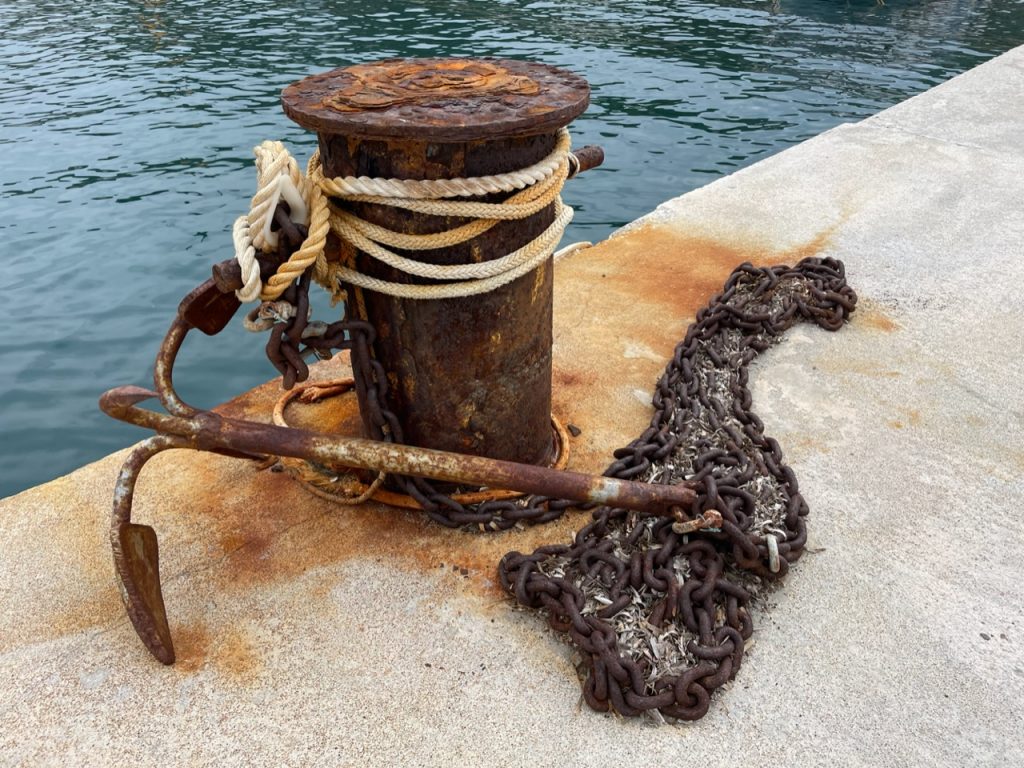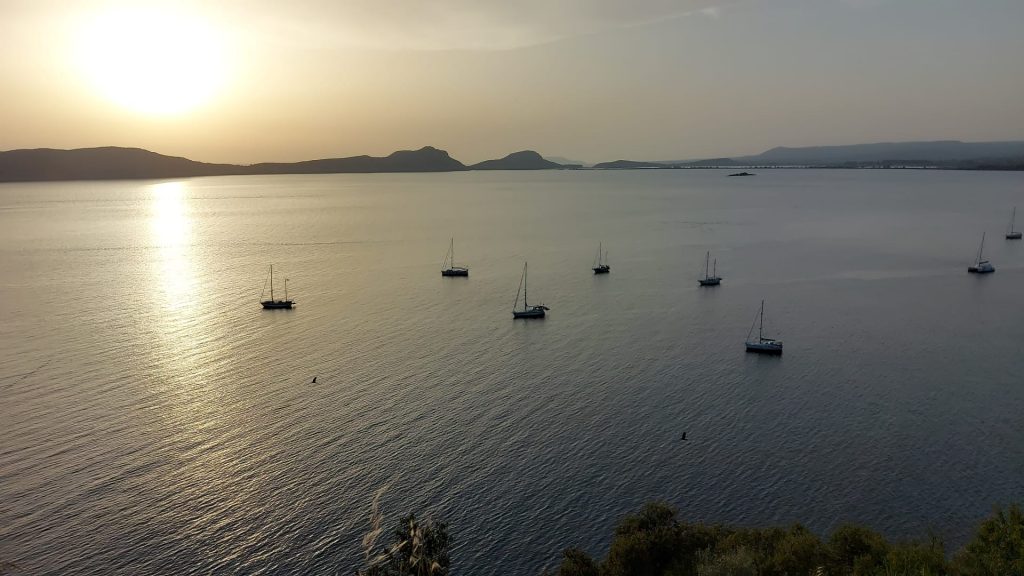
In Kalamata we stayed a few days. Three bags of laundry were perfectly washed and ironed for us by the Laundry Service, since the washing machine in the marina was broken. Kostas, the electrician of the marina, found out how to reprogram our depth gauge. From now on we can do that ourselves in case we accidentally jam it again. The rear bilge pump, which did‘t take water out anymore, got a new membrane, which was ordered in Athens. Well equipped for the onward journey, we cast off under somewhat difficult conditions, because there was very little space to maneuver and right next to us were murings of other boats going shallow into the water. It happened from time to time that boats got the muring of another boat in the propeller, told us the Palatines, who have their Reinke for years in Kalamata. But it worked out fine and without stress. We sailed southwest across the Messenian Gulf to Koroni. The harbor of Koroni is too shallow to moor at the pier. Therefore we wanted to anchor. But when we arrived, there was strong wind and swell into the harbor bay. So we anchored on the other side of the fortress in front of the beach. There we could wave to our friends Jürgen and Gisela, who are vacationing in an apartment there.
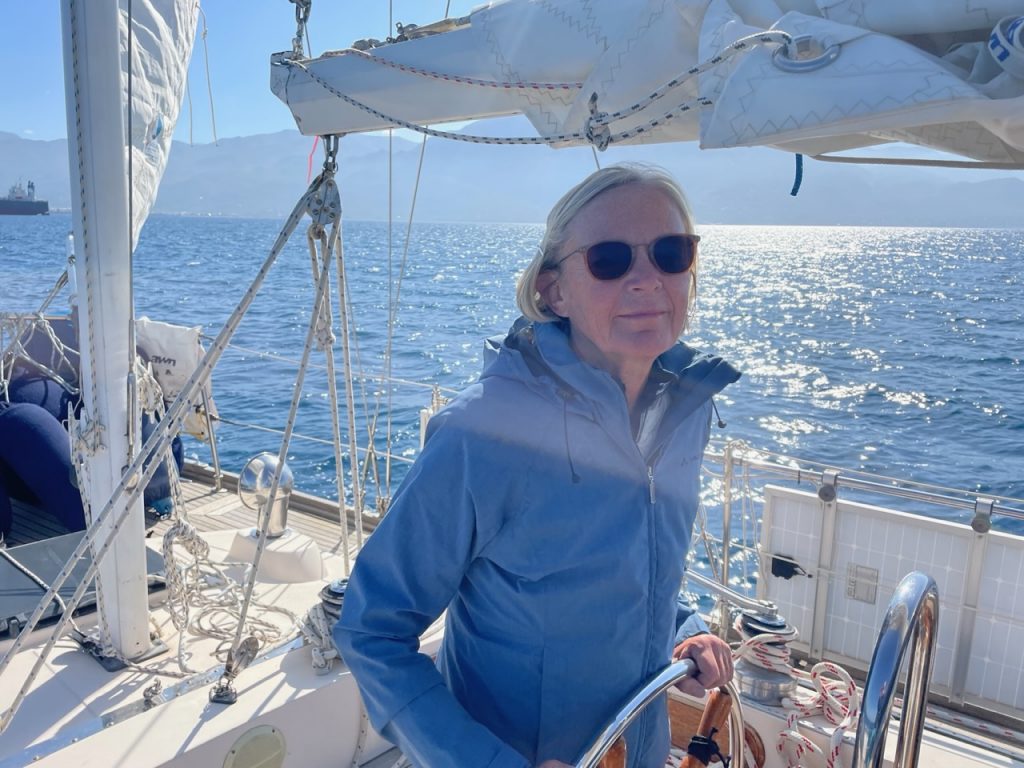
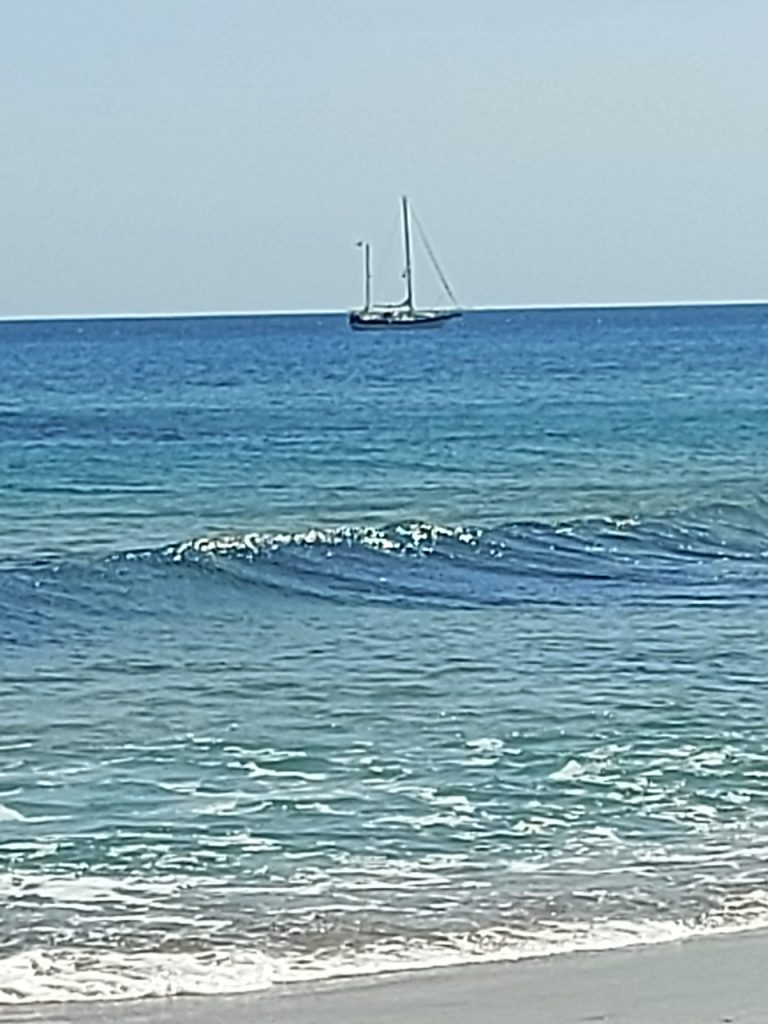
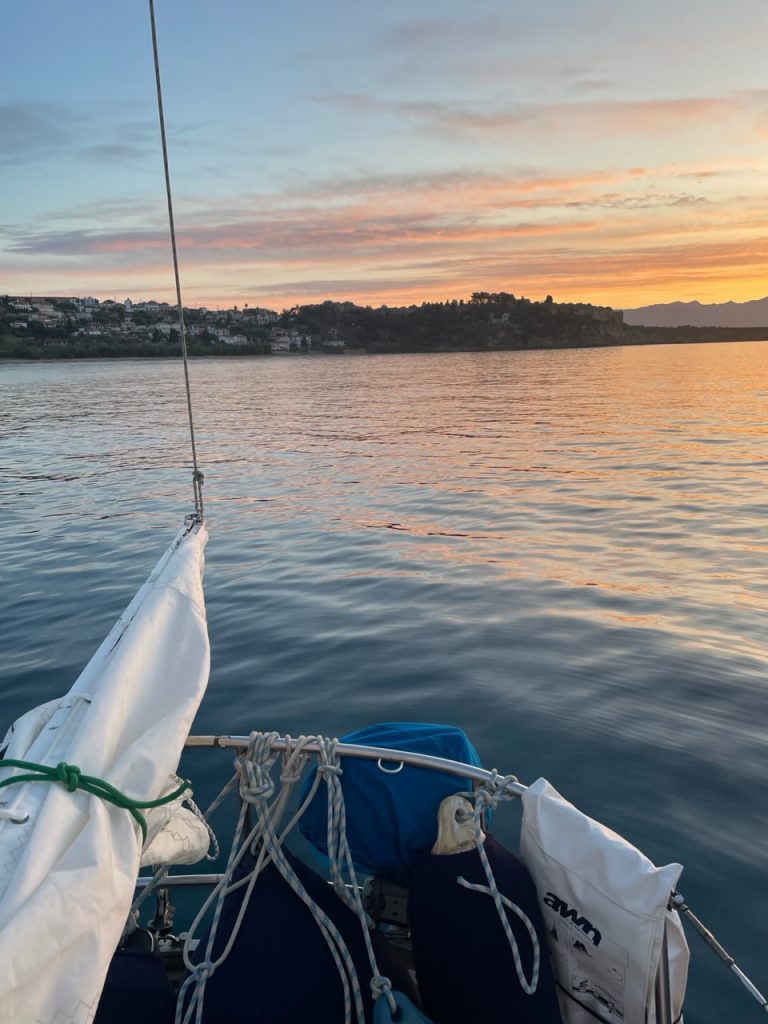
The next day we continued towards Methoni. There you can anchor in calm weather, with a view of the impressive fortress. We would have liked to do that, but the wind and swell would have made for us a restless night. It just doesn't sleep very well when you roll back and forth in your bunk.
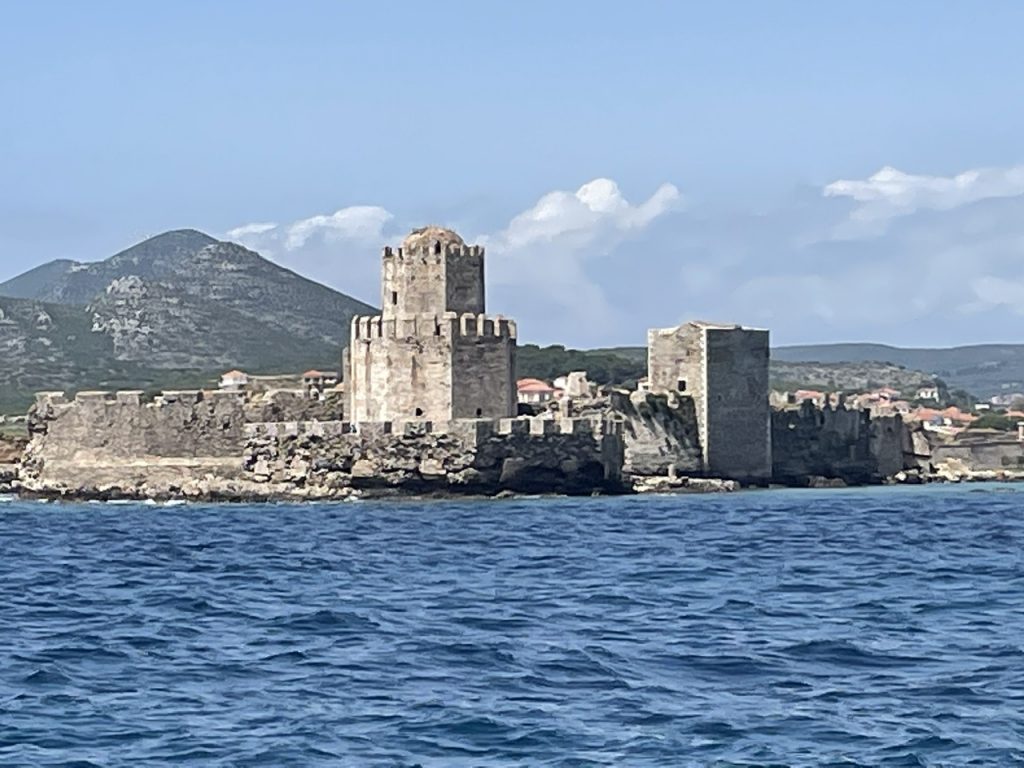
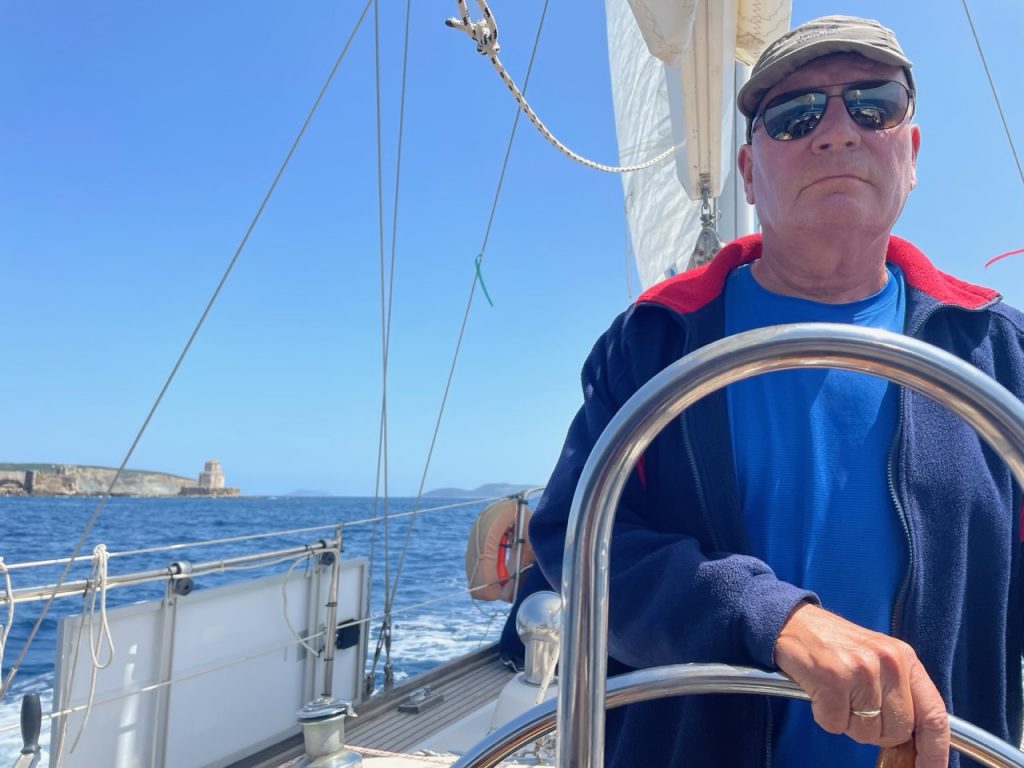
So we added another seven nautical miles, around the southwest tip of the Peloponnese to Pylos. Here there was a lot of activity. The pier of the city port on one side with a small cruise ship occupied, on the other side with sailboats. In the marina also all full, quiet a lot of rotten permanent boats, but also guest boats, some alongside, some with bow anchor, all crisscross. Not inviting, but there was no more room for us anyway. So we anchored pleasantly and quietly in the beautiful Navarino Bay.
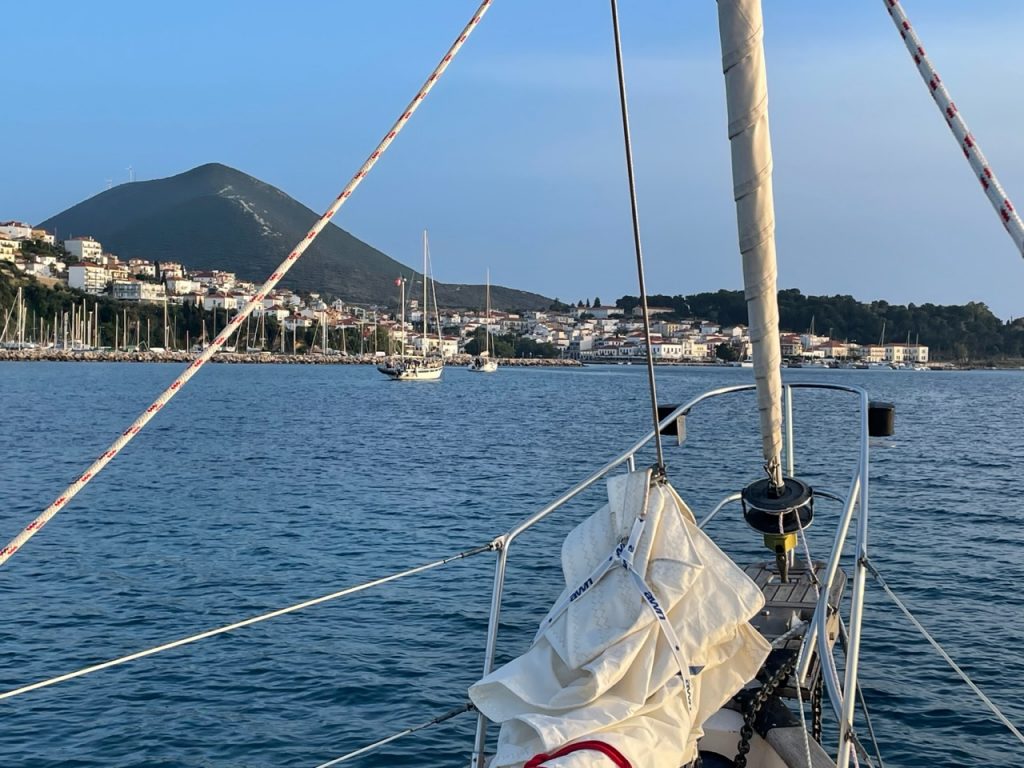
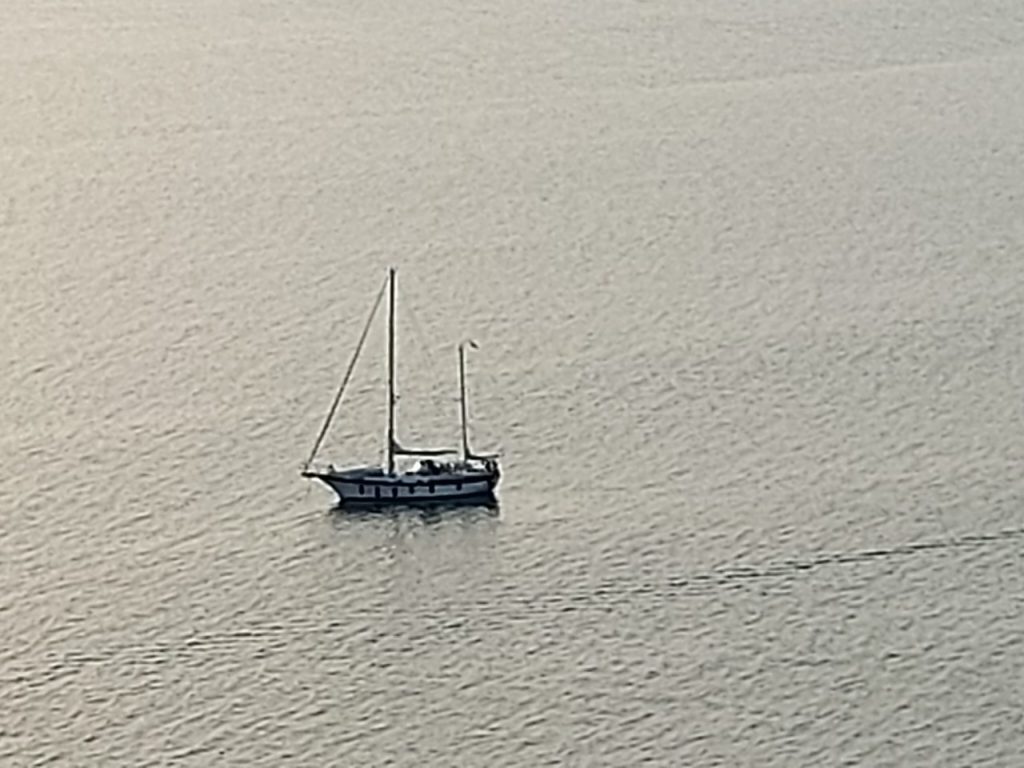
Since we wanted to have visitors on board in the next few days, we anchored at the pier in the city harbor the next day. The cruise ship was gone and there was space. A friendly harbormaster greeted us and the Port Authority meticulously checked all our papers. "TEPAI OK?" was their first question. The Greek cruising tax certainly contributes to economic growth. We had already paid it online in Germany.
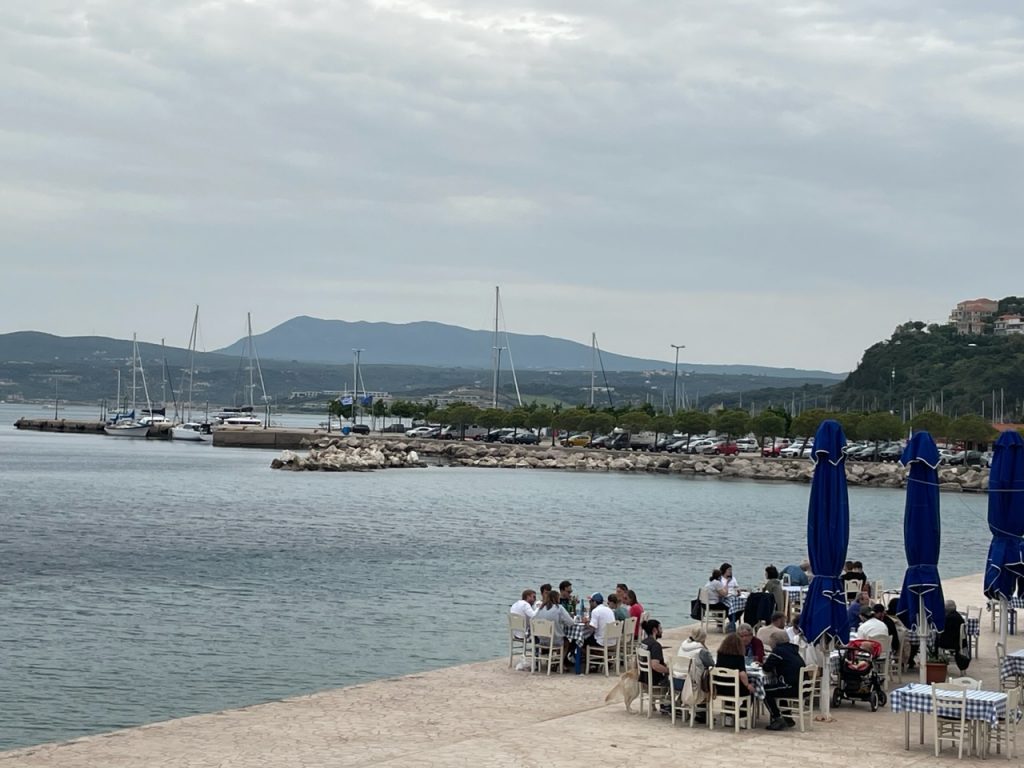
Today there are elections in Greece. It will be exciting, because the previous president Mitsotakis will probably not get the absolute majority. And the question will be whether a coalition of the left (Syriza and Pasok) will manage a majority. We will witness that here in Pylos, because we will stay a few more days. Our friends Jürgen and Gisela come to visit. The weather is very unsettled with lots of rain and thunderstorms. We want to continue north. A schedule that forces us to go, we have fortunately not. 😊
